![ihapy[1]](https://esotericbasics.co.uk/wp-content/uploads/ihapy1-300x229.jpg)
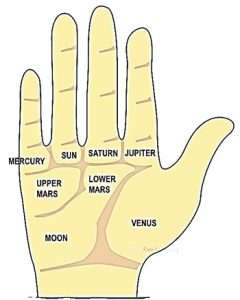
''The little finger is sometimes referred to as a pinky.'' Thumb?
Something to ponder on: "Granite is called 'Mat' and its hieroglyphs are followed by a determinative depicting a kind of vase. And granite is so much associated with its place of extraction, that is, the first nome of Upper Egypt, that the name of the metropolis of its nome, Abu {meaning ''elephant''}, is also followed by the distinctive determinative of granite. The word 'mat' designates granite in general, and perhaps most particularly - red granite...This same word 'mat', determined by a man holding his hand {finger?} to his mouth, means ''dream, discover, imagine, conceive''...As to the word Abu - designated elephant, ivory, and the Isle of Elephantine - its root is Ab; when accompanied by the determinative for fire, the latter designates a temple brazier. Granite, coming from 'fire', is also employed for certain doors...Black diorite was chosen for carving the celebrated 'Palermo Stone' on which the list of kings of the ancient empire is inscribed {sunken relief?}, registering for each reign the level of the high Nile in cubits, hand breadths, and fingers, year by year, as well as the important events of each reign as the arrival of products from Punt {i.e., east i.e., south -east} during the rule of Sneferu or those from the Sinai Peninsula duringb the rule of Sahura. In short it is a veritable chronicle going back to Menes, including as well the census of cattle, an accounting of gold and fields, and the principle religious or traditional festivals." [Page 99-100 'Sacred Science'].

''Silence'' is 'golden'?
''Open Entrance''?
Pay-lands link see 2:11
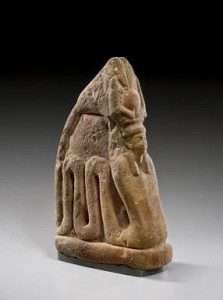
She who loves silence.
Something extra: "The 'Ab' or conscience is the source of Meskhenet {Karma} and the mother of reincarnation. The Ab represents the heart. It is the symbol of the deep unconscious mind, the conscience, and also the repository of unconscious impressions gathered...." [Page 136 'Egyptian Book of the Dead' / M. Ashby]. Try ''heart'' and/or ''folding''.
And/or: Understand the word highlighted before those 1st impressions dictate something else.
"For everyone who asks receives, and he who seeks finds, and to him who knocks it will be opened." New Testament.
A {working?} example: ''To Bob, who went through the door..." Enlarged elsewhere.

Abu Ruash from above. Tau Cross? UPSIDE DOWN?
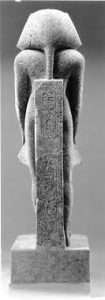 Side note: Speculation about Djedefre's pyramid in the program {'The Lost Pyramid' / History Channel}. Granite used - if only in the 'lower' course. Limestone elsewhere {'higher'?}. Menkaure pyramid {'fall'?} supposedly influenced by same. Kings chamber {'free' standing} in the Great Pyramid {Khufu} constructed of same. Get into a mind set, to get beyond: ''A SHOW of power and prestige''. Also in the same program it contains the largest causeway in Egypt running North - South. As opposed to the other three {East-West}. Built on the highest spot in Egypt: ''A windy and rocky outcrop; a very cold and windy place.''
Side note: Speculation about Djedefre's pyramid in the program {'The Lost Pyramid' / History Channel}. Granite used - if only in the 'lower' course. Limestone elsewhere {'higher'?}. Menkaure pyramid {'fall'?} supposedly influenced by same. Kings chamber {'free' standing} in the Great Pyramid {Khufu} constructed of same. Get into a mind set, to get beyond: ''A SHOW of power and prestige''. Also in the same program it contains the largest causeway in Egypt running North - South. As opposed to the other three {East-West}. Built on the highest spot in Egypt: ''A windy and rocky outcrop; a very cold and windy place.''
Question. Would those causeways {if extended} meet?
Question 2. Where is the 'lowest' spot in Egypt?
N.B. From Saqqara - giza - Abu Ruash = S/E - N/W direction?
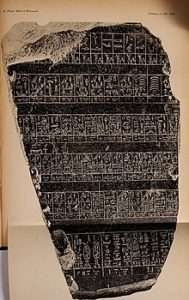
Palermo Stone. Triangular?
Side note: ''Safed in northern Israel is the highest in the land. The first place that the words ''Let us go my beloved to meet the bride'' were sung outside the city walls. Indicative of Israel's relationship to their beloved Yahweh. The lord the bridegroom. Israel the bride {'anima'?}. The place where Jewish mysticism began. Spiral fountain on top. Hosea first of the minor prophets buried there. Blue dome. Many other 'blue' tombs { especially of Kabblah Rabbi's}. Blue robe/cloak also worn by Aaron - with breast plate {Arc of Covenant link}. 'BLUE' in Jewish mystic number symbolism = 613 = Moses Laws etc. Blue/white also associated with 'string' at hem of robes.'' [Day 43 'Safed: Galilee. Lent/2022. Pilgrimage of Grace. K. Nichols. Magdala].
Question. Any 'fountains' at Abu Ruash?

'Wheels' on a first century altar stone found at Magdala in Israel. 'Six' petalled flower on top. Any bells?
Side note: In antiquity, bells were part of daily life. Their primary function was to serve as an acoustic signal, although depending on the context, they could have various uses. In the excavations at Magdala, small bronze bells have been found, most of them in contexts dating from the 1st and 2nd centuries CE. But is it possible to know their exact use and origin?
Bronze bells were common objects in antiquity, especially in the Roman world during the imperial period, and they were used and traded throughout the Mediterranean. One example is the shipwreck at Caesarea Maritima, where around fifteen metal bells were discovered.
Most interpretations of the use of these small bells tend to associate them with an apotropaic function (that is, as objects intended to ward off evil). Their use as tintinnabula – a kind of wind-chime that, when it sounded, would drive away evil spirits – was common. However, would this practice have been permitted in ancient Judaism?
Surely, the use of tintinnabula with anthropomorphic artistic representations as in Roman tradition would not have been accepted in the 1st Century Judean and Galilean context. However, acoustic signs with ritual function did exist in the Jewish tradition. For example, in Exodus 28, the priestly garments are described as including a blue robe with small golden bells and pomegranates on its lower hem:
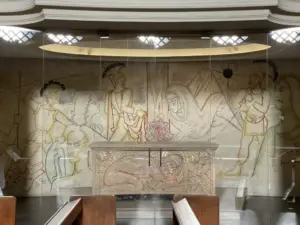
But the most famous artworks associated with Notre Dame de France are the paintings by Jean Cocteau, his only murals outside France.
Decorating the walls of the Lady Chapel, Cocteau worked on the paintings between 3-11 November in 1959. People who worked at the church said he would arrive early each day and talked to his creations as they appeared on the walls. There are three panels, the Annunciation (left), Assumption (right) and Crucifixion (middle).

left or right foot?
“The gold bells and the pomegranates are to alternate around the hem of the robe. Aaron must wear it when he ministers. The sound of the bells will be heard when he enters the Holy Place before the Lord and when he comes out, so that he will not die. (Exodus 28:34–35)
However, the bells found at Magdala are quite different from the golden bells (quite similar to jingles) worn by the priests in the Temple. So, what was their function?
Most likely, they served a practical purpose consistent with the local context. They may have been used for acoustic purposes: as musical objects to quiet a child, to attract attention from a distance, or as audible signals hung around the necks of livestock. In fact, the Mishnah mentions some of these uses, especially in connection with the restrictions of Shabbat. Since sounding musical instruments is forbidden on that day, bells must not produce sound – "even if it is to quiet a child" (Mishneh Torah, Shabbat 23:4). Likewise, livestock may not be taken out if they wear bells on their necks, – "even if it is plugged to prevent it from ringing" (Mishnah Shabbat 5:4).
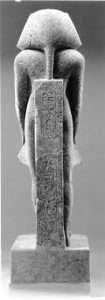
'Flower' head?
Continued: ''In the Hebrew Bible, Hosea (/ˌhoʊˈziːə/ or /hoʊˈzeɪə/; Hebrew: הוֹשֵׁעַ – Hōšēaʿ, 'Salvation'; Greek: Ὡσηέ – Hōsēé), son of Beeri, was an 8th-century BC prophet in Israel and the nominal primary author of the Book of Hosea. He is the first of the Twelve Minor Prophets, whose collective writings were aggregated and organized into a single book in the Jewish Tanakh by the Second Temple period, forming the last book of the Nevi'im; but which writings are distinguished as individual books in Christianity. [1] Hosea is often seen as a "prophet of doom", but underneath his message of destruction is a promise of restoration. The Talmud claims that he was the greatest prophet of his generation.[2] The period of Hosea's ministry extended to some sixty years, and he was the only prophet of Israel of his time who left any written prophecy.''
''There are two biblical figures named 'Beeri.' The etymology of Beeri (Hebrew: בְּאֵרִי, Bə’êrî) is given as "belonging to a fountain" by Wilhelm Gesenius,[1] but as "expounder" by the International Standard Bible Encyclopedia[2] and "well" according to the Holman Bible Dictionary.'' [Wiki].
 Continued: ''High winds. Torn clouds race across the sky. The gravestones moan; the trees seeth, flinging tattered rooks into the air {crows?}; squalls of rain batter the window pains. The GREEN is shrewn with leaves and twigs. Tim, Nora and i attempt a game of cards in the kitchen {'13' link?}, but end up sitting in silence, watching the 'fire' roar...Yesterday the peacocks tail filled the cellar {of the mind?} with its rainbow, stretching like Gods covenant between Above and Below. There was a subtle perfume of lilies {'nose' link? i.e., smell as opposed to say sound, i.e., ear}. The Hermetic glass is like a double prism that divides the world into its constituent hues and returns them to the single white light that is their source and goal. This is the mystery of multipilicity....'' [Page 338/9 'Mercurius' / P. Harpur].
Continued: ''High winds. Torn clouds race across the sky. The gravestones moan; the trees seeth, flinging tattered rooks into the air {crows?}; squalls of rain batter the window pains. The GREEN is shrewn with leaves and twigs. Tim, Nora and i attempt a game of cards in the kitchen {'13' link?}, but end up sitting in silence, watching the 'fire' roar...Yesterday the peacocks tail filled the cellar {of the mind?} with its rainbow, stretching like Gods covenant between Above and Below. There was a subtle perfume of lilies {'nose' link? i.e., smell as opposed to say sound, i.e., ear}. The Hermetic glass is like a double prism that divides the world into its constituent hues and returns them to the single white light that is their source and goal. This is the mystery of multipilicity....'' [Page 338/9 'Mercurius' / P. Harpur].
''A Division is given in the House of Commons in which MP's physically pass through 'aye' or 'no' lobbies.'' ['The Chase'].
Yes or no?
And/or: The ''division'' sign = two 'spots' either side of a single 'stripe'. Yes or no?

Spots or stripes?

And/or: Sack is an antiquated wine term referring to white fortified wine imported from mainland Spain or the Canary Islands.
Side note: ''The cellar door is more an historical term. When wineries began dispensing wine samples from their premises it was usually from the wine cellar where all the wine was stored either as packaged bottles or in oak barrels....The main senses involved in wine tasting are vision, olfaction, gustation and perceptions through the trigeminal nerve that conveys sensations of heat/cold and pain....Historically wine was made, stored, and aged, underground. With cool room technology not yet developed, building underground cellars was the best way to obtain a stable cool temperature. Large wineries would have total labyrinths of underground wine stores. And so it began. People would knock on the cellar doors to alert wine makers to their presence. As time went on, the cellar doors became fitted areas used for tastings and sales...''
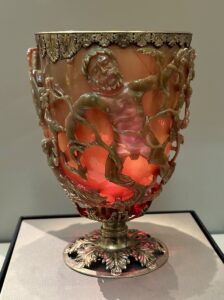
The Lycurgus Cup: Late Roman Empire, AD 300s. This cage-cup is incredibly rare. Its glass contains tiny amounts of gold and silver which cause it to turn from opaque green to translucent red when light is shone through. It may have been part of a wealthy Roman's banqueting set, making its imagery of Dionysus, Greek god of wine, highly appropriate. Its green and red qualities may even have been intended to evoke white and red wine. Alternatively, it may have been used as a lamp because the gilded silver rim and foot were probably added in the late 1700s.
Formerty in the collection of Lord Rothschild,
purchased with the sid of the An Fund, 1958,12021
A working example: ''Evidence of this association between “red” and a subterranean location is the fact that the “Red House” pr dṧ r was the royal treasury in the cellar of the first known palace in the north at Buto (P Hr msn established by Horus Djer) where the House of Life was later also situated (by the time of Horus Den) all being part of the prnswt, the king’s private, and presumably cooler and more secure, basement sanctuary within the palace pr 3 (Helck, 1987: p. 228).
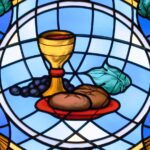
St. Michael and the Eucharist.
Some of the recessed walls of the subterranean burial chambers of Horus Djer and Horus Djet, for example, were also painted in red (Petrie, 1901: p. 8). Another association between “red”, “writing”, the double lion Aker who guards the entry and exit of the netherworld ( dw3t), lions, and the Great Sphinx is the library patron goddess Seshat-associated title called
Director of the Rwt Women ( rwt = gateway, rwtj is a later synonym for the double-lion Aker), a title possibly referring to the facility where red paint was produced (Helck, 1987: p. 264) and used, for example, to color reliefs, to write on papyrus, and to paint the Great Sphinx’s face and possibly the entire body.''
Pope LEO XIV {'fourteen'}.
All in red. Then purple.
Cardinals all in red.

Floating or anchored?
And/or: St Michael's Mount (Cornish: Karrek Loos yn Koos,[1] meaning "hoar rock in woodland")[2] is a tidal island in Mount's Bay near Penzance, Cornwall, England, United Kingdom. The island is a civil parish and is linked to the town of Marazion by a causeway of granite setts, passable (as is the beach) between mid-tide and low water. It is managed by the National Trust, and the castle and chapel have been the home of the St Aubyn family since around 1650.
Historically, St Michael's Mount was an English counterpart of Mont-Saint-Michel in Normandy, France, which is also a tidal island, and has a similar conical shape, though Mont-Saint-Michel is much taller.[3]
St Michael's Mount is one of 43 unbridged tidal islands accessible by foot from mainland Britain. Part of the island was designated as a Site of Special Scientific Interest in 1995 for its geology. Sea height can vary by up to around 5 metres (16 ft) between low and high tide.[4]
Its Cornish language name—literally, "the grey rock in a wood"—may represent a folk memory of a time before Mount's Bay was flooded, indicating a description of the mount set in woodland. Remains of ancient trees uncovered by storms have been seen at low tides in Mount's Bay.[5]

Split? North and south. Red and 'green'. Opening / closing. Which and why? Question. Whats the remedy for a 'famine'?
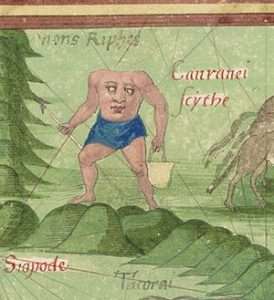
Unusual ''religious beliefs'' of a universal mind set?
''When Giovanni Battista Caviglia (1770-1845) cleared the area between the paws of the Great Sphinx in his 1816-1819 excavation campaign, he discovered a small temple with three steles by Thutmose IV (i.e. the Dream Stele) and Ramses II, a small lion statue, fragments of lion statues and a sphinx, and beard and uraeus fragments which had fallen off the Sphinx. All of these, including the temple wall, were painted in red (Hassan, 1949: p. 11). In addition, even the masonry blocks used to repair the monument were apparently stained in red, an unusual treatment in ancient Egypt’s monuments (Mariette, 1857: p. 95). This cumulative evidence establishes the necessary context for the idea that dṧrw is an allusion or epithet which was meant to refer to lions and that the ḏ3jsw Lord of the Red Ones (nb dṧ rw) was their master. There is even the possibility of a word play alluding to a lion split in half by a fissure. When separated into two words, dṧrw becomes a subordinated clause with an active participle predicate literally translating to “he who/that which separates the lion” (Vygus, 2015: pp. 282, 393). Then, ḥtm. n prnḫm dṧrw should be understood as “we have provided the House of Life in that which separates the lion”, i.e. the space which splits the lion, like, for example, the major fissure through the Great Sphinx (see below in this section) at the bottom of which Auguste Mariette in fact discovered a chamber (see Discussion Re: “Hall of Records”). Evidently, ancient Egyptian theologians viewed the iconography of a split lion not only as part of the exclusive linguistic set of symbols used to describe the story of Egypt’s creation after its destruction by an epic flood instigated by the Sun, but part of the very first seven words of the recreation of the world after this epic disaster.''
'Baboon' to enlarge.
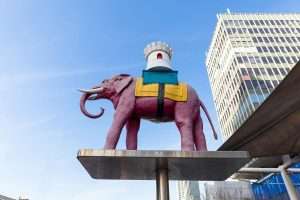
'Corner' stone? 'Femur' as starting point?
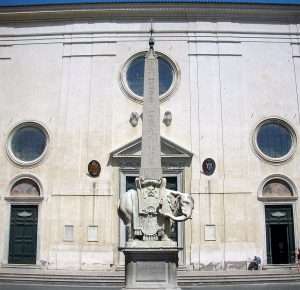
Round the corner from....?
Continued: "Meanwhile we have much work at hand. By reflection, by study, upon these mysteries, we can make our light glow from within.........The Alchemists themselves have promised that 'divine' aid is always forthcoming to those who in all sincerity and humility do even no more than study their writings." [Quote by from the book by I. Regardie].
'The Magical Travels of Abra the Elephant' / Liz Winstanley.
The word ''Sincere'' and ''humility'' used throughout in such works as the Quran. Coincidence or a meaningful one?
As an example; through study; define the following..."Just as the practice of concentration is the ''art of forgetting'' and the practice of profound 'communion', or meditation, is the mastering of the ''art of sleeping'', so does the 'contemplation' of authentic initiation signify the mastering of the ''art of dying''. [Extract from the book by Tomberg]. Further clues in Part 1.
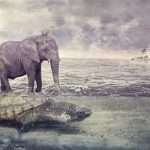 Apply it to: "But none of these comparatively northern streams suit the stellar position of our Eridanus, for it is a southern constellation, and it would seem that its earthly counterpart ought to be found in a corresponding quarter = the Nile, the only noteworthy river that flows from south - north, as this is said to do when rising above the horizon...Caesius thought our Eridanus was the sky representation of the Jordan, or the Red Sea, which the Israelites passed over - as on dry land." ['Star Names and Their Meaning'].
Apply it to: "But none of these comparatively northern streams suit the stellar position of our Eridanus, for it is a southern constellation, and it would seem that its earthly counterpart ought to be found in a corresponding quarter = the Nile, the only noteworthy river that flows from south - north, as this is said to do when rising above the horizon...Caesius thought our Eridanus was the sky representation of the Jordan, or the Red Sea, which the Israelites passed over - as on dry land." ['Star Names and Their Meaning'].
Wet/Dry?
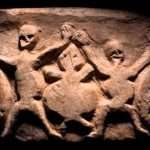
Turtle or Tortoise? Or does it matter? Hands ''raised''?

Any 'center'?
Side note: From a different perspective: "Astrology, being a system of symbolic interpretation of significant astrological facts, must obviously differentiate strongly between the Sun - a life - and light giving star which is the center of the astronomical system to which we belong - and planets which are merely reflectors or transmitters of light, and of which the Earth itself is one. If we refer to the Ego as ''a complex of representations which constitute the center of my field of consciousness and appears to possess a very high degree of continuity and identity'', it is clear that the astrological symbol thereof {geocentric?} is the Earth itself as seen from the birth place of the native. The continuous field of consciousness of any man is what is contained within the boundaries of his horizon, and by implications what, though below the horizon, will emerge into the field of his consciousness '{above'?}. In other words , the quadrature of the astrological chart {horizon and meridian - and especially Ascendant and Mid-Heaven} represents the form of the field of consciousness. The ego may be considered as the birth point itself, the center of the chart - or, in an even more accurate symbolism - the apex of the pyramid built on four angles of the chart...." [Pages 219-20 'The Astrology of Personality' / Dane Rudhyar].
Think about ALL the above in relation to that universal ''bit'' - in that INNER sense of the word.
Continued: "The man most severely punished on the Day of Resurrection is a scholar whom god did not benefit by his knowledge." Quote by Muhammad.
"Believe nothing which is unreasonable, and reject nothing as unreasonable without proper examination." quote by Gautama Buddha.
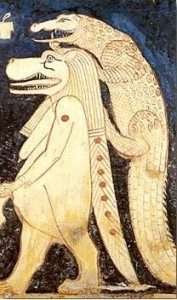
Which one ''remembers'' ?
"Naturally 'forms' differ from one civilization to another, but though more accustomed myself to the Hindu forms, i have no scruple in employing others when necessary. If they can contribute to the understanding of certain points; there are no objections to this, since they are only different expressions of the same thing. Once again, truth is one, and it is the same for all those who, by whatever way, have attained to its understanding." [Chapter 7, 'The Underlying Religion: An Introduction to the Perennial Philosophy'. Mentioned elsewhere].

''Heart of oak are our ships, heart of oak are our men.''
Something hinted at: {i.e., apply the above to understand the pagan equivalent of something}: "In my world I am known as the Winter Lord, ruler of the year's dark half, whose domain is deepest glen and darkest cave... The Oak men call me Cernunnos: wild huntsman of the woods, or the Green Man, or the Horned One. And then there are others - many others - for man has always been closest to the earth, and so must akin to my face over other gods. But, as the lord Merlyn well knows, I have little memory for such things. Question him, if you will!'' [Page 250. Douglas Monroe book]. Try ''forgetting/remembering''.
Waters of the Styx?
Question. If Cernunnos = ''forgetting'' {lower?} - Who/what represents ''remembering'' {'higher'?}.
Refresher: The ten Commandments found in the Dead Sea Scrolls. The oldest ever recorded. With one addition {or change} to the norm. ''Keep the Sabbath'' is exchanged for ''REMEMBER the Sabbath''.
Side note: Scorpion King? {i.e., higher or lower?}.
'Don't forget to remember' {The Bee gees}.
N. B. "Sherry Salman considers the image of the Horned God in Jungian terms, as an archetypal protector and mediator of the outside world to the objective psyche." [Wiki].
Something hinted at: "Once during those last eerie, in-between moments of waiting, I thought I 'fancied' seeing a great pair of antlers move silently against the sky line and then vanish. ''So it was only a 'deer'...!" I said to myself, as if scolding a silly child....But I then saw those antlers again...''Listen to me...listen!'' it said in a low voice. 'The gateway of your soul lies in an ancient forest.' Then it was gone.'' [Page 389 of the book by Douglas Monroe. Chapter entitled 'Beyond Word and Deed'].
Rhodes Island?
Try ''deer''. While recalling that it is ONLY female reindeer that grows antlers.
And/or: Horn = Made of 'hair' and spiral in shape.
''The North American caribou is the same species as the Eurasian reindeer.'' ['Impossible' / S6 EP18].

A 'belly' FULL of something?
And/or: "....that the 'deceased' {death/rebirth} shall choose the fountain of Mnemosyne, remembrance, and not the fountain of Lethe - forgetfulness. And, to take an example - the whole Tibetan Book of the Dead is founded upon it. Is this no more than a foolish clutching at consciousness on the part of mortal man? Might it not be that the break through to wordless knowledge {'Gnosis'?} - is the climax of our whole existence...." [Page 154 'Science of Mythology: Essays on the Myth of the Divine Child and the Mysteries of Eleusis' / C. Jung and C. Kerenyi].
Waters of the Styx? {'Killed' Alexander?}.
Side note: Just understanding {in the internal sense of the word} one of those universal constants {archetypes/keys} gives clues to such 'unknown quantities' as is constantly speculated on in such activities as say as that which occurred at Eleusis. i.e., ''child''.
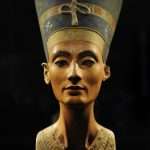
Wordless? 'Circlet'?
And/or: "The experience of the initiates in Eleusis had a rich mythological content, expressed for instance, by the dazzling and sensuous image of Anadyomene rising from the waves, On the other hand it can also be expressed in the plainest and simplest way. From the sacred records of a religion totally different in style - Buddhism - we learn of a remarkable ''sermon'' preached by its founder. One day the Buddha 'silently' held up a 'flower' before his disciples. This was the famous ''Flower Sermon''. Formally speaking, much the same thing happened in Eleusis when a mown ear of grain was silently shown. Even if our interpretation of the symbol is erroneous, the fact remains that a mown ear was shown in the course of the mysteries and that this kind of wordless sermon was the sole form of instruction...." [Page 152. Same book and/or strangely {synchronistic?} page 152 'The White Goddess' / R. Graves ].
Grain of Wisdom?
Question. How many grains make a cake?
Funerary or wedding cake?

'Light'?
From a different perspective: ''All the good that may be within you in your shadow lies hidden in the dark. All the transforming power of the psyche is left untapped if you are afraid to enter the dark. We must relinquish our old selves. We must die on the cross of personality. We must be slain by our shadows as the god Osiris was slain by his twin.'' [Page 45 'Dreams of Isis: A Woman's Spiritual Sojourn' / Normandi Ellis].
Refresher: ''You can't just read it you have to 'see' it.'' John Humphrys.
Side note: 'Practical example: ''Say what you see'' {'Catchphrase' / ITV}.
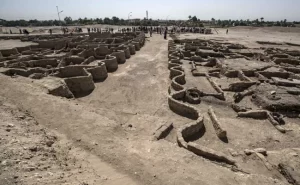
Found where the mortuary temple of Tutankhamun should have been: The Dazzling Aten.

The Great Step: This noteworthy feature of the Great Pyramid shoots up 3 feet high and is six feet wide. Once you step onto it, you are on a platform 8 feet deep, which is worn and chipped. This platform is part of the "road" that leads to the King's Chamber.
A working example: Assuming that you decide to go on {from the lower/external TO THE higher/inner mysteries} - you step forward and open the door before you. Stepping through, you find yourself in a small, many-sided room. As you hold up the ankh before you, you see by its light that the walls are faced with mirrors of bronze which, as you advance slowly towards the centre, give back a thousand images of yourself. But not all the images are the same. As your vision grows accustomed to the strangeness of the place, you see that there are many different aspects of yourself reflected back from the walls. You may see yourself at different stages in your life to this moment (but never beyond the future is not for you to read) and perhaps also of other lives. But you must be careful of how you interpret the images you see, for it is easy to become dazzled or glamourized by a particular form or image. If you feel drawn towards one or another you may look closer, but always hold the ankh symbol before you as your sign of life and intention. Look now towards the centre of the room. There you will see a circular platform with steps leading up to it. Upon it stands a mighty figure holding a book and writing implements. You recognize Thoth, the scribe of the Gods, keeper of the sacred mysteries, teacher of the wisdom known by some as Hermes Trismegistos, founder of the Hermetic Mysteries....
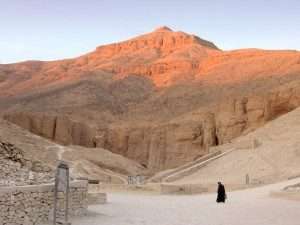
Platform?
 As you approach he demands by what right you come there and you respond with the word or phrase given you by Anubis. Thoth then asks your intentions in seeking the mysteries and whether you are drawn to any one aspect. You should answer this as truthfully as possible, but do not be afraid to say that you do not know. Thoth records your name and response in his great book and bids you step up to the platform at his side . As you do so the walls of the chamber begin to turn slowly, gradually speeding up until they are a blur. Only the platform and the wise head of Thoth, shaped like the sacred Ibis, remain unchanged. As you stand at his side you realize that this is a centre from which all the Mystery teachings are spun forth. All are contained in the great book that lies beneath the hand of Thoth . Now in the blur of the passing walls, images form, flickering there or a moment and then disappearing again.
As you approach he demands by what right you come there and you respond with the word or phrase given you by Anubis. Thoth then asks your intentions in seeking the mysteries and whether you are drawn to any one aspect. You should answer this as truthfully as possible, but do not be afraid to say that you do not know. Thoth records your name and response in his great book and bids you step up to the platform at his side . As you do so the walls of the chamber begin to turn slowly, gradually speeding up until they are a blur. Only the platform and the wise head of Thoth, shaped like the sacred Ibis, remain unchanged. As you stand at his side you realize that this is a centre from which all the Mystery teachings are spun forth. All are contained in the great book that lies beneath the hand of Thoth . Now in the blur of the passing walls, images form, flickering there or a moment and then disappearing again.
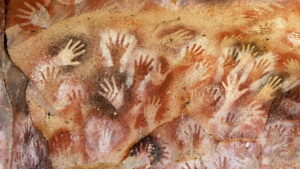
Found in Borneo. Oldest known to date. "Purple around 20,000 years old. The red ones 40,000 years." ['Expedition with Steve Backshall' / S1 EP6].
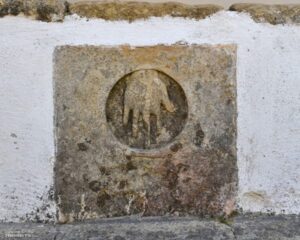
Tomar- Portugal
You see the faces of those with whom you have worked before on the inner planes, and others who are strangers to you. You should try to notice and to remember as much as you can, since these things and people may well become important to you later on (Pause) . At last the spinning slows and stops. You see yourself again in the mirrors and realize that you are alone. There may be subtle changes now in the way that you behold them, for Thoth has entered your name in the Book of the Mysteries and you are a part of them from now onward . Slowly you descend from the platform and depart from the chamber by the way you came. In the outer chamber Anubis awaits you, and as you pass before him he places upon your brows a plain circlet of silver or gold. You understand that this is a token of the Mysteries upon which you have now entered. It is plain as yet because your journey has only just begun, but in time it may bear symbols or letters acquired by you on your way .
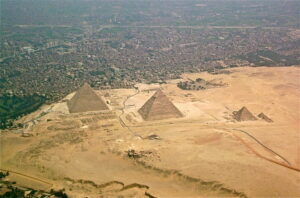
Platform?
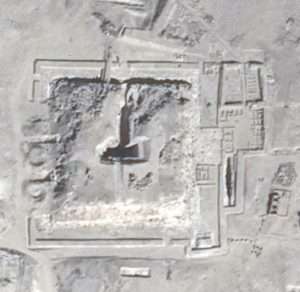
He is the king who introduced the royal title Sa-Rê (meaning “Son of Ra”) and the first to connect his cartouche name with the sun god Ra.
Taking leave of the jackel-headed god you return to the open air, finding no difficulty in retracing your path through the maze. At the entrance, return the symbol of the ankh to the priestly guardian and go by the way you came, slowly allowing the scene to fade from your consciousness to be replaced by the surroundings in which you began your journey. Wherever you go forth upon an inner journey, or take place in some magical activity, you should imagine the circlet given to you by Anubis, and this will be your sign to others that you have passed through the maze of the gods and returned. {Page 244 'The Western Way'}.
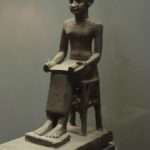
Imhotep.
AND/OR: 'A yellow quartz sarcophagus contained the three coffins of Tutankhamun. On the most inner one two orange solar disks can be seen in the claws of the vulture. On the most outer one a 'circlet' of withered flowers {lotus?] surround the neters of north and south in the middle of the forehead.
A coming {morphing} together of something- represented with the colours orange and yellow.
Mineral {quartz} /Vegetable {lotus} /Animal {Horus}....all as a means.....
Side note: The colour orange indicative of potassium within volcanic ash. But to much fluoride can seize up the joints etc. {Pompey}.
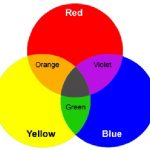 Also surrounding the yellow 'tomb' 4 golden shrines. Each with seals unbroken with the exception of the 1st one. Purposely left UNbolted. It was meant not only to be discovered so its 'secrets' would be shared to the 'outside' world but also the place and time. Enlarged within.
Also surrounding the yellow 'tomb' 4 golden shrines. Each with seals unbroken with the exception of the 1st one. Purposely left UNbolted. It was meant not only to be discovered so its 'secrets' would be shared to the 'outside' world but also the place and time. Enlarged within.

Berber language. '33'?
1922 when first discovered - but not until 1923 were those secrets of the tomb itself - and therefore the person himself - first noted. The three {'thrice'} seals themselves formed with sacred rope {hemp?}. Eleven vertical 'strands' can be seen on all three. A total therefore of 'thirtythree'. ['Tutankhamun's Tomb in Colour' / BBC2].
To understand why beyond the usual ''aliens from another planet'' - Try '23' to begin with.
Question. Where will the missing heart be found?
Link to the lost word or lost pleiad.

Ash? What are they on top of?
''In Europe, 66 is known mainly as the name of a card game. However, in the Islamic mystical tradition it corresponds to the numerical value of the word Allah. Hence, Turkish Sufis would explain the predominance of the tulip {'Lotus'?} in Turkish art, as well as the emblem of Islam, the crescent moon, by the fact that the names of these 2 motifs, lalah and hilal respectively, consist of the same letters and have the same numerical value as Allah. 'Sixtysix' can also be seen as duplication of 6, or as a number in the second power {i.e., 44, 77 etc.}.'' [Page 260 'Mystery of Numbers' / A. Schimmel].
'33' ?
'Billy Moon' {i.e., Ashdown Forest}.
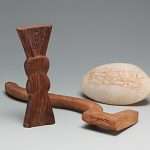
Thirty-three?

Coincidence? Blemmyes to enlarge.
''The best day of my life - my rebirth day, so to speak - was when I found I had no head. This is not a literally gambit, a witticism designed to arouse interest at any cost. I mean it in all seriousness. I have no head. It was when I was 33 that I made the discovery, though it certainly came out of the blue {A. A. Milne?}, it did so in response to an urgent inquiry - I had for several months been absorbed in the question: What am I?....What actually happened was something absurdly simple and unspectacular: just for the moment I stopped thinking. Reason and imagination and all mental chatter died down. For once words really failed me. I forgot my name, my humanness, my thingness, ALL that could be called me or mine. Past and future dropped away. It was if I been born in that instant, brand new, mindless, innocent of all memories, there existed only the Now, that present moment that was clearly given in it {'New Name'?}. To look was enough....It took me no time at all to notice that this nothing, this hole where a head should have been was no ordinary vacancy {void?} no mere nothing. On the contrary, it was very much occupied...." [Chapter one entitled 'The True Seeing' from the book 'On Having No Head'].
Objective 'view'?
 A working example: ''Unas is well attested by historical sources with three ancient Egyptian King lists dating to the New Kingdom...He occupies the 33rd entry in the Abydos King List - written during the reign of Seti 1....Thirtythree also mentioned in the Aegyptiaca, a history of Egypt written in the 3rd century BC in the reign of Ptolemy II by the Egyptian priest Manetho.'' [Intro 'Pyramid Texts' / W. Budge].
A working example: ''Unas is well attested by historical sources with three ancient Egyptian King lists dating to the New Kingdom...He occupies the 33rd entry in the Abydos King List - written during the reign of Seti 1....Thirtythree also mentioned in the Aegyptiaca, a history of Egypt written in the 3rd century BC in the reign of Ptolemy II by the Egyptian priest Manetho.'' [Intro 'Pyramid Texts' / W. Budge].
Side note: ''Snow White and the Seven Dwarfs was Walt Disneys first feature length animation filmed in colour.'' ['The Chase'].
And/or: ''At BIRTH 33 vertebrae make up the spinal column of an average human.'' ['Tipping Point'].
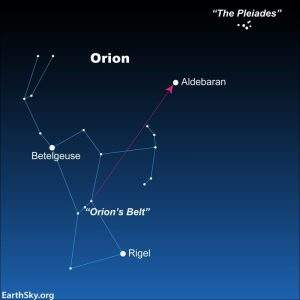
Orion like other constellation RISES with his back to us in the night sky in the Northern hemisphere. In the SOUTHERN one he appears upside down. Did the Egyptians know this? Question. Where would that 'turnaround' take place?
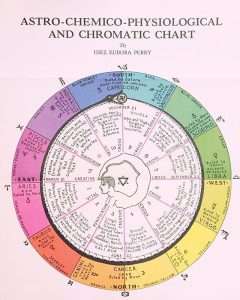
Head/Feet = Aries/Pisces? ''Somersault''?
''In the course of getting older they fuse together to end up with twentyfour.''
Side note: A work in progress: ''A unique scene to Abydos. In the sacred precinct of the complex {at the time of Tutankhamun?} . The symbol of Osiris being carried by 24 priests after a procession outside for a certain feast, and supposedly the head of Osiris is buried here. Outside the walls are found at least 2000 rams {heads?} in mummified form {in a long procession?}. A small bell is found among them. The idea of Akhenaten is long gone, its not there anymore - but, as a matter of fact, found in the FOUNDATION of Ramses II temple just a kilometer away were found fragments from Amarna - used as filler {'debris'?} for his foundation.'' {Dr. Sameh: 'Tutankhamun: Allies and Enemies' / PBS America}.
The indication being its a negative act. From the Aten 'back to' Amun.
Question. Could it not have been a positive one?
'Two steps forward and one back' to enlarge. Retrograde?
'Scattered'?
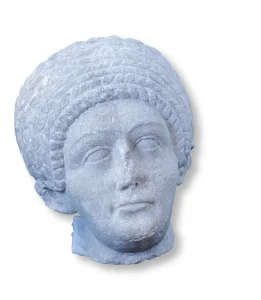
'Eight' braids.
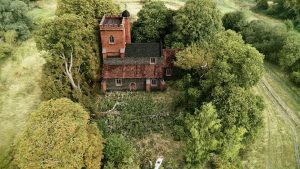
Bell Tower or 'Bower'? The term "bower" has several meanings:
In a literary context, it refers to a private apartment or room for the Lady of a medieval castle, often furnished with a bed and decorative elements. 1
More generally, it can mean a shady, leafy shelter in a garden or wood. 1
The word originates from the Old English "būr," meaning "dwelling". 2
Thus, "bower" encompasses both a specific historical setting and a more general term for a sheltered space.
As Dr. Samek says at the beginning of the program: '100 years after the discovery of Tutankhamun, people believe that this is a chance for Tutankhamun to give his story. But does it? Does his tomb, mummy and objects tell us what he really wanted to say? Or is it us that are imposing our own ideas upon him?
And/or: Archaeologists in central England working on the HS2 project have uncovered a set of incredibly rare Roman statues whilst excavating a Norman Church in Stoke Mandeville.
In the final stages of the excavation at the site of the old St Mary’s Norman church in Buckinghamshire, archaeologists were excavating a circular ditch around what was thought to be the foundations of an early medieval tower.
As they dug down, they uncovered three stone busts that were stylistically Roman. Two of the busts comprise of a head and torso which had been split before deposition, and the other just the head. The two complete statues appear to be one female adult and one male adult, with an additional head of a child......And among other items found in the 'V' shaped circular trench/'pit' was the headless skeleton of a 'giant' of a man with purposely broken leg bones.
Femur?

The gateway?
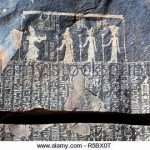
Exit or entry?
Continued: "No place can be found in which to put the 'Original Face'; it will not disappear even when the universe is destroyed. One of Hui-neng's successors, the Zen master Shih-tou {700-790}, took a slightly different line. 'Do away with you throat and lips {'Taurus'?}, and let me hear what you have to say', he commanded. A monk replied: 'I have no such things.' 'Then you enter the gate,' was the encouraging reply. And there's a very similar story of a contemporary of Shih-tou's, master Pai Chang {720-814}, who asked one of his monks how he managed to speak without throat, lips or tongue. It is, of course from the silent Void - that one's voice issues - from the 'void' of which Huang-Po {d.850} writes: 'It is all pervading, spotless beauty; it is the self existent and uncreated absolute. Then how can it be even a matter for....
Refresher: "The swan is white without spot."
…..discussion that the real Buddha has no mouth and preaches no Dharma, or that real hearing requires no ears, for who could hear it? Ah, that is the Jewel beyond all price.' As an aid to such a realisation, Bodhidharma, the First Patriarch of Zen {6th c.} is said to have prescribed a good hammer blow {'blacksmith'?} on the back of the head {'Sokar'?}. Tai-hui {1089-1163} was equally uncompromising: This matter {Zen} is like a great mass of 'fire': when you approach it your face is sure to be scorched." [Page 32. Same book].
'Yellow' or 'Orange'? As a means....?

The snake goddess at Knossos
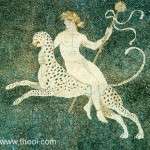
A 'womans' god. 'Spots and stripes?
Apply the above to get a 'hang' on the following: "It is not easy to interpret the various motifs {tatoo's} on this woman’s body. Some are also known from amulets, such as the numerous Horus eyes, and may have had a protective function; others may indicate participation in cultic rituals. A number of them, such as the eight different snakes on her right arm, could indicate that she had the ability to enchant these reptiles or ward off poisonous creatures. However, perhaps the most informative are those applied at her throat. Here, a combination of hieroglyphs writes out the phrase: ‘to do good’, or ‘to work well’. It has been suggested that this exhortation and the accompanying symbols served to make her spoken words effective by charging them with divine power. The existence of ‘wise women’, called ‘the ones who know’, is documented at Deir el-Medina, and it is possible that this highly ornamented woman was one of them – a role that could be attributed to the heavily tattooed women of the C Group, too, and even earlier periods, whose markings both proclaimed their abilities and enabled them.
'She who loves Silence'.

'light oxen': "I bring up an individual type as a point of departure to talk about. The one {'emotion'?} that is strongest will pull you first." [Page 4 'Stopping and Seeing' / Translated by T. Cleary].

Somersault to enlarge.
The use of tattoos to denote other female identities is indicated by an ostracon, as well, showing women and girls with triangular marks on their thighs: one engaged in an acrobatic dance, while others are apparently preparing for a party. In addition, there are several figurines depicting women with a series of crosses around the waist. Their meaning has not yet been deciphered, but together this evidence suggests that tattooing on females was a fairly common practice at this time, and there were perhaps a variety of motivations. ....
With the end of the New Kingdom, evidence for tattooing in Egypt dries up until the Graeco-Roman Period, when textual evidence may indicate that Egyptian men were at least occasionally tattooed: marks, though unspecified, are listed among other identifying characteristics in various census documents. Where on the body, and why, the men were marked is rarely stated, but in some cases it could have been to signify cultic affiliation. For example, Ptolemy IV Philopater (221-205 BC) had himself tattooed with ivy leaves to mark his initiation into the cult of Dionysus. This was reported with disdain by the Classical authors, for whom tattoos, particularly on the face, were marks of punishment or servitude. The Egyptians, however, may have had a different opinion, as designs on the chin and cheeks of some mummy masks seem to represent tattoos, although this is unconfirmed by physical remains.
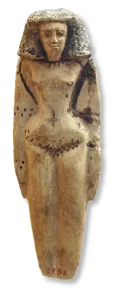
With or without a 'belt'? happy or sad?
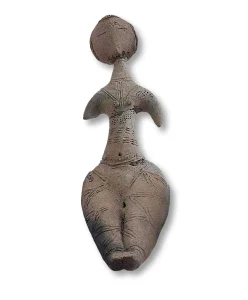
Spots and stripes. Any 'handles'?
In Nubia, by contrast, numerous examples attest to the wearing of tattoos by men, women, and adolescents. In the cemetery at Aksha, dating to the Meroitic Period (350 BC-AD 350), tattoos were preserved on ten individuals. Using the dot-and-dash technique known in the region since prehistory, extensive geometric and vaguely figural patterns were applied to the abdomen, legs, arms, hand, and neck of women, while both men and women had small designs placed at the outer corners of the eyes, and on the forehead. A mixture of techniques is now evident, with the top of the hands sometimes decorated with a solid line cruciform design or geometric pattern. Another solid-line tattoo in an interlocking curvilinear design is seen on the leg of a man from the late X Group (AD 350-550), but the tradition of dots did not die out. This is shown by the body of a woman from the Christian Period (c.AD 750), who bears a series of tattooed dots on her outer thigh, while on the inner thigh is the monograph of St Michael, a saint popular in Nubia. While the purpose of the dotted tattoo is unknown, the monogram is a clear profession of faith, and probably had protective properties. {'Ancient Egypt: Tattooing in the Ancient Nile Valley' / Sep-October 2025}.
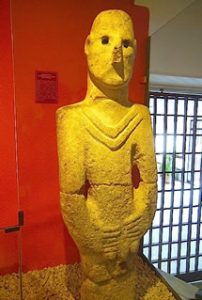
''Scorched''? 'Transforming fingers' or just masturbatory ones? Any semi-circles?
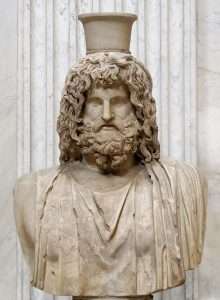
Remedy?
Refresher: …..discussion that the real Buddha has no mouth and preaches no Dharma, or that real hearing requires no ears, for who could hear it? Ah, that is the Jewel beyond all price.' As an aid to such a realisation, Bodhidharma, the First Patriarch of Zen {6th c.} is said to have prescribed a good hammer blow {'blacksmith'?} on the back of the head {'Sokar'?}. Tai-hui {1089-1163} was equally uncompromising: This matter {Zen} is like a great mass of 'fire': when you approach it your face is sure to be scorched." [Page 32. Same book].
'Yellow' or 'Orange'? As a means....?
Side note: The colour orange indicative of potassium within volcanic ash. But to much fluoride can seize up the joints etc. {Pompey}.
A working example: "Once there was a king* who had a wise advisor.* The king said to the wise man, “There is a king* who signs himself, ‘the mighty warrior,* man of truth* and humble* person.’ I know that he is a mighty warrior,* because his land is surrounded by the sea.* He has a navy of ships* with cannons;* they do not let anyone come close to the land....
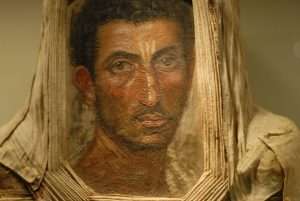
The Humble King. This is the name given in the first edition. The story is also known as “The King and the Sage” (Zimrath HaAretz). Curtain or veil? Faiyum to enlarge.
 On the side away from the sea, there is a quicksand bog* surrounding his land. There is only one small path,* upon which only one man at a time can go. This path is also defended with cannons, and if anyone attacks, they fire the cannons. It is impossible even to come close to his land. However, when he signs himself, ‘man of truth and humble person,’ I do not know if he is telling the truth. I therefore want you to bring me a portrait* of that king." The king who was speaking had portraits* of every single other king with the exception of the one he was now discussing. No king had that king’s portrait, since he kept himself hidden from all people. He kept himself at a distance from his subjects, and sat behind a canopy {curtain}." ['The Lost Princess and Other Kabbalistic Tales' / Rebbe Nachman of Breslov].
On the side away from the sea, there is a quicksand bog* surrounding his land. There is only one small path,* upon which only one man at a time can go. This path is also defended with cannons, and if anyone attacks, they fire the cannons. It is impossible even to come close to his land. However, when he signs himself, ‘man of truth and humble person,’ I do not know if he is telling the truth. I therefore want you to bring me a portrait* of that king." The king who was speaking had portraits* of every single other king with the exception of the one he was now discussing. No king had that king’s portrait, since he kept himself hidden from all people. He kept himself at a distance from his subjects, and sat behind a canopy {curtain}." ['The Lost Princess and Other Kabbalistic Tales' / Rebbe Nachman of Breslov].
Footnote: "One small path": This appears to be the narrow path leading from the lower sefiroth to Binah. In man it corresponds to the throat between the body and the head. The Ari says that this is the concept of constriction and constricted consciousness (mochin de-katnuth), and it is an aspect of Mitzraim (Egypt) which comes from the root tzar, meaning narrow.
And/or: Gebel el-Silsila or Gebel Silsileh (Arabic: جبل السلسلة - Jabal al-Silsila or Ǧabal as-Silsila – "Chain of Mountains" or "Series of Mountains"; Egyptian: ẖny, Khenyt,[1] Kheny or Khenu – "The Place of Rowing"; German: Dschabal as-Silsila – "Ruderort", or "Ort des Ruderns" – "Place of Rowing"; Italian: Gebel Silsila – "Monte della Catena" – "Upstream Mountain Chain") is 65 km (40 mi) north of Aswan in Upper Egypt, where the cliffs on both sides close to the narrowest point along the length of the entire Nile. The location is between Edfu[2] in the north towards Lower Egypt and Kom Ombo[2] in the south towards Upper Egypt. The name Kheny (or sometimes Khenu) means "The Place of Rowing". It was used as a major quarry site on both sides of the Nile from at least the 18th Dynasty to Greco-Roman times. Silsila is famous for its New Kingdom stelai and cenotaphs.
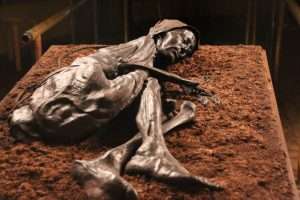
Bog = fen = 'altar'?

Wet or Dry?
And/or: Holzbrücke Rapperswil-Hurden is a wooden pedestrian bridge between the city of Rapperswil and the village of Hurden crossing the Obersee (the upper part of Lake Zurich) in Switzerland. On 6 April 2001, the footbridge was opened. With a length of 841 metres (2,759 ft) it is the longest wooden bridge in Switzerland.
The wooden bridge has many predecessors. Wooden structures enabling lake crossings in the same area were already built thousands of years ago.
The pedestrian bridge is located next to the so-called Seedamm, a stone and metal structure which includes two bridges. Like the Seedamm it connects Rapperswil in the canton of St. Gallen and Hurden in the canton of Schwyz. The water area between Rapperswil and Hurden is the narrowest and shallowest part of Lake Zurich. While the Seedamm separates the Obersee part from the main part of Lake Zurich, the pedestrian bridge crosses the Obersee.
Any bridge at Gebel el Silsila?
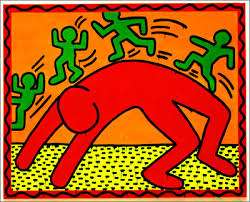
Bridge over troubled waters?

Bridging a gap.
Before a new bridge was opened in 1360, ferries were traveling between Rapperswil and Hurden. Between 1358 and 1360, Rudolf IV, Duke of Austria, built a wooden bridge across the lake. This bridge was used until 1878. It was approximately 1,450 metres (4,760 ft) long and 4 metres (13 ft) wide. 564 oak piles were installed for the bridge.
The bridge was part of a pilgrimage route belonging to the Ways of St. James. It was used by pilgrims who wanted to get to the Einsiedeln Abbey or even to Santiago de Compostela. A bridge chapel called Heilig Hüsli, which still exists today, was built in 1551.

Pilgrim's bridge to Einsiedeln Abbey between Rapperswil (SG) and Hurden (SZ), Heilig Hüsli and Seedamm to the right (December 2009)
 H....The connection between the number Twelve, i.e., the Twelve Apostles, the twelve tribes of Israel, the twelve knights of the round table; the twelve signs of the zodiac. To name but a few, and the number Thirteen. Especially in relation to the ‘missing’ thirteenth sign of the zodiac, [ ‘Arachne rising’. By J. Vogh and ‘Cities of dreams’. By S. Gooch. That same link to 'Synchronicity'. N.B. J. Vogh associates it / names it to something different. So don't forget that pinch of salt... ]. Or..."Who were these gods of heaven and earth, divine yet human, always headed by a Pantheon, or inner circle of twelve deities." [page, 87 'The 12th Planet']. Can you now see, what the author has not yet seen?
H....The connection between the number Twelve, i.e., the Twelve Apostles, the twelve tribes of Israel, the twelve knights of the round table; the twelve signs of the zodiac. To name but a few, and the number Thirteen. Especially in relation to the ‘missing’ thirteenth sign of the zodiac, [ ‘Arachne rising’. By J. Vogh and ‘Cities of dreams’. By S. Gooch. That same link to 'Synchronicity'. N.B. J. Vogh associates it / names it to something different. So don't forget that pinch of salt... ]. Or..."Who were these gods of heaven and earth, divine yet human, always headed by a Pantheon, or inner circle of twelve deities." [page, 87 'The 12th Planet']. Can you now see, what the author has not yet seen?
Try those highlighted - then 3:12
N.B. 'Twelve' in relation to ''foundation stone''. Enlarged throughout.
![fool]](https://esotericbasics.co.uk/wp-content/uploads/514_400x400_NoPeel1-300x300.jpg)
Two different aspects describing the same thing. Spot those common links to understand the whole. ''The stick across his shoulder represents the 'vegetable' dimension of his being, that lies between the spiritual part, and the animal part down below, where the dog {spotted?} clawing at his leg represents unredeemed animal elements. Indicative of. [All show in some form, a dog, more often than not following behind i.e.,unknown/unaware link]...'To dog ones footsteps'?... The unredeemed part of the vegetable body is represented by the burden carried in the sack. [Donkey link]. His three point hat alludes to the higher qualities he has yet to evolve. His upward gaze represents his aspiration towards these.'' [Chapter 19, The Secret History of the World]. Together with... ''The star Sirius however, does not stand alone. It is, in fact, part of a bright constellation we call Canis Major, the Big Dog, which trails behind Orion the Hunter. As the brightest of all the visible stars, Sirius is almost ten times more brilliant than any other star, and can be seen in broad daylight.'' [Page, 239 Black Genesis]. Together with . notice how because of that unredeemed [unknown] quantity he may fall off his own precipice. Both moon and sun are [like the dog] all behind. All a link to higher / lower, i.e.,yet to be aware of. As for the spots if someone is said to change ones spots or colors [or even stripes] What does it imply? i.e.,Jeremiah 13:23, Can the Ethiopian change his skin or the leopard his spots. A leopard cannot, but man/woman can, [think about it, relative to higher / lower] and we all understand that color is only skin deep. Hence the link to the definition of same [i.e.,Collins English Dictionary/ To change ones spots] to reform ones character. As will be proven when those that represent the Giza complex are discovered. Egypt's true ancestors, as speculated in such books as Black Genesis or Legacy of the Black Gods by P. Simons, i.e.,more South than North. More Ethiopian, than Mediterranean. As for the stripe analogy, of same. Herod would be a good example, of that unredeemed quantity, WHICH REMAINED UNREDEEMED. i.e., ''Tigers never change their stripes.'' For this reader however, the real questions are, [regardless even, if and when such locations are proven valid...Sense or non sense, a possibility or not? i.e.,Why go to all this time and effort?

Trump's pet monkey? Where exactly does he put his fingers to wind it up?
The question is... Do those aspects relate to ‘a god/s’. Or an individual/s. If the word 'god’ is symbolic then it has to be an individual/s. If so. Who is the individual/s? That connection to the ‘dollar bill’ and the 'fool' of the Tarot. Or the ‘heel’ stone of Stonehenge, [to name but a few], if only in the still...‘unknown’ state. Represented more often than not as 'shadow' ....
i.e., taking the Zodiac as an example. Those twelve signs / keys all have positive and negative attributes. Those taken together with what encompasses them. Twelve plus what they are part of. Twelve plus that one ’whole’...together with...’lucky / unlucky’. Symbolism of. Hebrew equivalent = ‘Urim / Thummim’, i.e., in relation to the twelve 'aspects' of the 'breast plate', ['heart' symbolism link]. Common parlance, "a throw of the dice", in relation to 'chance' and 'fate', but now with the 'individual' effort. An individual 'effort', by way of...thought, emotion and will, [ a balance of].
''The harder you work the luckier you get." [BBC 'Operation Gold Rush' with D. Snow]. The same could be said for both a mental and physical task?
'On Divination and Synchronicity: The Psychology of Meaningful Chance' / Marie-Louise Von Franz].
Lucky horseshoe?
''If chance will have me king, why chance may crown me?" [Shakespeare, Macbeth Act 1, Scene 3].
Or the Eastern equivalent = ‘I Ching’ , ...in relation to a possible result...one way or the other. Either in a positive or negative ‘direction’. From either an aware/unaware position. In relation to a possible potential. A possible positive potential. That link to the ‘development of’ and the ‘return of’... In relation to an understanding. As indicated in such books as...’The Secret of the Golden Flower’. By T. Cleary...and/or Richard Wilhelms translation of same, [ especially and if only because of Mr C. Jung commentary in the same book in relation to ‘synchronicity’ and the title of the book. Together with Mr Wilhelms opinions on the benefit of those ‘general ideas’.

American or UN-American? Who exactly are HIS ancestors!
Side note: Those broken / unbroken lines within the hexagram forms of I Ching in relation to: "...This law shows why straight lines never occur in our activities, why, having begun to do one thing, we in fact constantly do something entirely different, often the opposite of the first, although we do not notice this...All this and many other things can only be explained with the help of the law of octaves together with an understanding of the role and significance of 'intervals' which cause the line of the development of force to constantly change, to go in a broken line, to turn round, to become its 'own opposite' and so on. Such a course of things, that is, a change of direction, we can observe in everything. After a certain period of energetic activity or strong emotion or a right understanding a reaction comes, work becomes tedious and tiring; moments of fatigue and indifference enter into feeling; instead of right thinking a search for compromises begins; suppression, evasion of difficult problems. But the line continues to develop though now not in the same direction as at the beginning..." ['In Search of the Miraculous'].
Follow the title of the book to 'see' it in its broader context.
'Retrograde Planets: Traversing the Inner Landscape' / Erin Sullivan.
Or the Hebrew equivalent. ’The Thirteen Petaled Rose’. By A. Steinsaltz. Compare to 'The Rose of the World' by D. Andreev. An individual who was not a member of any 'school' or 'mystery' club, and yet who arrived at the same answers. Who understood that same framework. Only to be read when you feel like a good ‘head scratch’...and when you want to compare it to the other three. Indicative of finding the ‘right’ author. One that you can relate to. As you do with any subject that one has an interest in.
Some you will find irritating others not so. Persevere with it. Find the ‘good’ ones. The ones you relate to. Then find out who they recommend or what books they read.
Side note: "In picking up this book you are about to embark {'ship'?} on a fascinating journey. It is a journey to places where, according to the author, many of us have already been but about which we have forgotten. It is also a journey within, into that psychological space where our ideas and beliefs about god, spirituality, and religion reside. During both journeys we are likely to encounter wonder and recognition, scepticism and acceptance, rejection and admiration, confusion and long sought understanding. For some this journey will be the start of a much longer one; for some it is but one more leg of a journey undertaken earlier; in any case, ''The Rose of the World'' is not a final destination." [Intro. to the book of same title by D. Andreev].
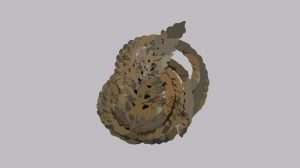
Found on Oak Island. Made of two threads - thirteen branches - triple spiral. Coincidence?
And/or: " This second item {i.e., Heywood's retelling of the story of Fair Rosamund }, has curious mythological overtones, and Rosamund 'The Rose of the World' is the English version of Ariadne, the classical goddess of the Thread, who appear in the closing version of The Prophecies." [ 'The Prophetic Vision of Merlin' / R. Stewart].
Continued: Especially noteworthy because most individuals; certainly at the outset; are of the impression that all authors of this subject-because of its nature- i.e., because its- "secret stuff"...would know what they are writing about. Therefore more often than not that same reader would assume that if they cannot understand a particular author-especially at the outset- then it must be 'their fault'. The readers fault. Not so. For the reasons given above.

Afrokhan? That very first 'mortal' one?
".......Ever since the 'Afrokhans' have had contact with, and were invaded by Europeans, we have adopted their meanings and definitions of words, in the European languages we use. However, we would do well to turn those meanings on their heads, or at least use them in our own favour. By doing this, we are able to examine them from another angle [key, i.e.,perpective] and better understand what they really mean. Remember....'all truths are but half truths'. For example we are led to believe that the 'underworld' is the abode of the devil, or the abode of demons. This is by way of EXOteric meaning or typically European interpretation. ESOterical definition of the underworld however, suggest that the 'underworld' is actually referring to the 'Collective Unconscious', the Amenta or Akasha of the Afrokhan man and woman." [i.e.,indicative of its origins]. [Page 50, 'Legacy of the Black Gods' by P. Simons]. .....
'Mans Search for Meaning' / Viktor Frankl.
"The underworld in this context refers to an aspect of the 'Divine' astral light, which is divided into two main regions...the Amentet and the Tuat. The Tuat represents the 'lower', the underworld or the subconscious mind, and Amentet represents the 'upper', or the conscious mind." [Same page, same book]. Ancient African equivalent.
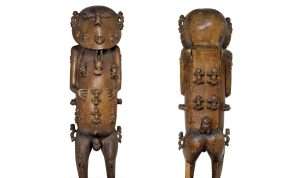
Hollow belly: What does 'five' represent?
Analogy: ''Otherworld'' {underworld} in relation to such quotes as ''collective ancestral wisdom'' and/or ''metaphysical planes'' relative too - ''Avalon, Hollow Hills, the Blessed Isles, Summerland {'Summer Triangle'?}…. in the place beyond the sunset, ever westward where the light is always that of twilight {i.e., from a as yet 'unknown' aspect}. Hence: ''It is a waiting place, a place of learning and nourishment {'food' link}....The place of traditional learning and wisdom, where springs the well of inspiration....For the Jews it was to 'be gathered in Abraham's Bosom.'' And/or {analogy}: "The Celtic Otherworld retains its ambiance of 'Joy'. It is aptly described as the Fortunate Isle, the Honeyed Plain of Bliss, the Apple Isle and the Summer country: all set somewhere west..." [Pages 107-109 same book]. Try ''summer stars''.
Analogy of same; but note from a different view point; from a different perspective BUT those common factors {i.e.,keys} are the same : ..."The 'Investigator' remembers thinking during the six weeks between major experiments, that whatever he had tuned into was not ''Cosmic Consciousness'' but a kind of planetary consciousness; he wondered who coined the term, ''cosmic consciousness,'' and what it contained..." [Extract from the book 'The Cosmic Trigger']. Enlarged further on.
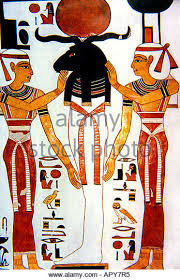 "Diodorus Siculus [Greek Historian] writes in the time of Augustus [1st century BC]: ''Now the Ethiopians, as historians relate, were the first of all men and the proofs of this statement, they say, are manifest. For that they did not come into their land as immigrants from abroad, but were the natives of it and so justly bear the name of autochthones [sprung from the soil itself] is, they maintain, conceded by practically all men..." "They also say that the Egyptians are colonists sent out by the Ethiopians, Asar [Osiris] having been the leader of the colony. For, speaking generally, what is now Egypt, they maintain, was not land, but sea, when in the beginning the universe was being formed; afterwards, however, as the Nile during its times of inundation carried down the mud from Ethiopia, land was gradually built up from the deposit...And the larger parts of the customs of the Egyptians are, they hold, Ethiopian, the colonists still preserving their ancient manners. For instance, their beliefs that the Kings are Gods, the very special attention which they pay to their burials, and many other matters of a similar nature, are Ethiopian practices, while the shapes of their statues and the forms of their letters are Ethiopian; for of the two kinds of writing which the Egyptians have, that which is known as popular [demotic,i.e.,exoteric] is learned by everyone, while that which is called Sacred [hieratic,i.e.,esoteric], is understood only by the priests of the Egyptians, who learnt it from their Fathers as one of the things which are not divulged, but among the Ethiopians, everyone uses these forms of letters."
"Diodorus Siculus [Greek Historian] writes in the time of Augustus [1st century BC]: ''Now the Ethiopians, as historians relate, were the first of all men and the proofs of this statement, they say, are manifest. For that they did not come into their land as immigrants from abroad, but were the natives of it and so justly bear the name of autochthones [sprung from the soil itself] is, they maintain, conceded by practically all men..." "They also say that the Egyptians are colonists sent out by the Ethiopians, Asar [Osiris] having been the leader of the colony. For, speaking generally, what is now Egypt, they maintain, was not land, but sea, when in the beginning the universe was being formed; afterwards, however, as the Nile during its times of inundation carried down the mud from Ethiopia, land was gradually built up from the deposit...And the larger parts of the customs of the Egyptians are, they hold, Ethiopian, the colonists still preserving their ancient manners. For instance, their beliefs that the Kings are Gods, the very special attention which they pay to their burials, and many other matters of a similar nature, are Ethiopian practices, while the shapes of their statues and the forms of their letters are Ethiopian; for of the two kinds of writing which the Egyptians have, that which is known as popular [demotic,i.e.,exoteric] is learned by everyone, while that which is called Sacred [hieratic,i.e.,esoteric], is understood only by the priests of the Egyptians, who learnt it from their Fathers as one of the things which are not divulged, but among the Ethiopians, everyone uses these forms of letters."
Side note: ''The Queen, when travelling overseas, is the ONLY British citizen not to require a passport.'' ['Tipping Point'].
Spirit/Soul as a means....?
''Foreign'' to enlarge.
Continued: For this reader the ‘forward’ of any book was the most important. Not only does the reader get a good idea of why the book is being written in the first place...but more importantly, how it is written and ‘explained’. Just as we ‘speak the way we think’. We also write the way we think...do we not. Think about it, in relation to the ‘types’ of individuals who do write about ’it’. Rather than leaving / relying on just those ’first impressions’. Question. At what stage does anyone with an interest in a subject decide to 'express' it in written form. In book form. For others to read.
Someone once said - that each person has a book 'inside of them'. True/untrue?
"Those committed to the inner life and its power of transformation ought to be grateful for the many avenues now available for spiritual knowledge. The chances are increased that the right book will fall into the right hands at the right time." ['The Wisdom of the 4th Way'/mentioned elsewhere].
That final link to such works as ‘Man and his symbols’. By C. Jung and especially ... ‘Memories, dreams, reflections'. By C. Jung. In relation to his very own...’Corner stone’. Understanding this subjects use of the above explains why the 'corner' stone of both the Whitehouse and the Capital are 'lost'. [Bred Meltzer. Satellite channel]. i.e.,once understood, that which was once 'lost' is now found. That 'corner stone' that the individual [ the 'seeker'] can now 'build' on. That same stone that now becomes the 'head'. Question. Keystone?
"Self-observation is the key."

The S/E Foundation Stone in the floor of the Dome of the Rock shrine in Jerusalem. And/or: The corner stones at Ramses palace at Abydos had golden cartouches. One relates more to the 'individual effort' the other to the collective/ancestors.

"Four Corners Monument, marking the only spot in the United States where four states (Arizona, Utah, Colorado, and New Mexico) come together." Elephant Island to enlarge.
A working example?..."It is not possible to practice self observation all the time. In fact, one of the critical discoveries in this effort lies precisely in seeing how often we forget to do this. This 'forgetting' is of course falling into the natural state of Sleep in which we all live as stimulus response machines, to use Gurdjieff's language. Remember that this primary effort of the Work is a first step that evolves with personal experience. What you are creating by this effort is: a) a point of awareness beyond your mechanical behaviour, and b) a gathering of more objective information about yourself. This kind of self-knowledge is the cornerstone to spiritual evolution, as was stated by Socrates and all the sages of humanity. Since we live primary in illusions and self delusions, it is necessary to face the reality of how much of our ''pictures'' of ourselves are imaginary. As the Hindu's say, we live in ''Maya'' {illusion} and it is this ignorance that keeps us asleep to our true potential and birthright." ['Wisdom of the 4th Way]. Continued elsewhere.
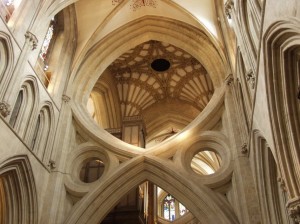
A Lemniscate arch. Known as a figure of eight. Link to Lemnos. A Greek Island : the eighth largest in Greece. Sacred to Hephaestus. The Greek equivalent of the Roman god Vulcan. Recall the number associated with the Greek word for Jesus. Coincidence?
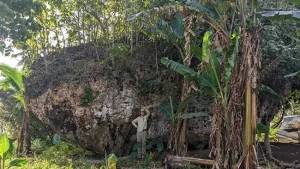
A massive boulder perched hundreds of feet from the edge of a cliff in Tonga appears to have been transported by an ancient tsunami, making it one of the biggest rocks moved by a wave on Earth.
The boulder, which was discovered in 2024 on the southern coast of the Tongan island of Tongatapu, sits 656 feet (200 meters) inland from the cliff edge, at an elevation of 128 feet (39 m) above sea level.
"The purpose of this stone can only be understood by another category of builders, who at this stage have not yet been brought in: they are the ones who have passed 'from the try - square to the compass', and by this distinction we must naturally understand the geometric forms which these two instruments serve respectively to trace, namely, the square and the circle, which as we know symbolize in a general way earth and heaven. Here the square form corresponds to the lower part of the edifice and the circular form to the upper part, which in this instance must therefore consist of a dome or a vault. Indeed the 'corner stone' or 'arch stone' is in reality a keystone.
Question. A fictional story? A convoluted, twisted one?
Compass of the Heart?
Side note: "How exactly the big rock ended-up on a cliff was unclear. "I was so surprised," Köhler said. "It is located far inland outside of our field work area and must have been carried by a very big tsunami. It was quite unbelievable to see this big piece of rock sitting there covered in and surrounded by vegetation."
According to a new study published online on 21 April in the journal Marine Geology, the boulder — named Maka Lahi, which is Tongan for "big rock" — may have been deposited in its unlikely home by a huge tsunami that struck the island around 7,000 years ago." {'Live Science'}.
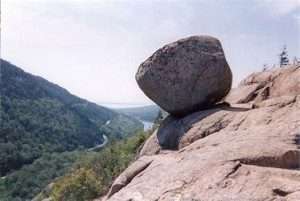

From a different perspective, i.e., Horizontal/Vertical.
"Laurens van der Post reported that shortly before his death, Jung had a dream. In his dream he saw ''high upon a high place'' a boulder in the full sun {zenith?}. Carved into it were the words: 'Take this as a sign of the wholeness you have achieved and the singleness you have become." Enlarged elsewhere.
REFRESHER: "The light of the body is the eye: if therefore thine eye be 'single', thy whole body shall be filled with light", [Matthew 6:22]. Explained within. Try the 'Help'' section.
Side note: ''Albert Einstein's surname when translated into English is - One Stone...'' ['The Chase' / 2018].
Side note: {i.e., landscape equivalent, i.e., something hinted at}: "Among the mystery schools it is often said: 'when the student is ready, the 'teacher' will appear'. And you my boy are ready - as a boulder poised at the top of a hill - and I am your 'trigger', who will raise his hand to set the boulder in motion down the slope." [Page 219. Douglas Monroe book].
'Saint Paul' and 'Headless' to enlarge.
And/or: "Amenemhat I (Ancient Egyptian: Ỉmn-m-ḥꜣt meaning 'Amun is at the forefront'), also known as Amenemhet I, was a pharaoh of ancient Egypt and the first king of the Twelfth Dynasty of the Middle Kingdom.
Sixteen{th} nome = Oryx.

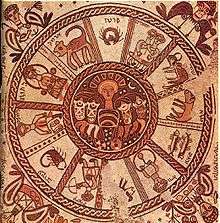 Amenemhat was the last to hold the title of nomarch (governor) of the Oryx nome. He held this position for around twentyfive years, during the reign of the 12th Dynasty king, Senusret I (c.1965–1920 BC). Similar to Khnumhotep II’s tomb, the entrance into Amenemhat’s tomb chapel is in the form of a portico with two columns and surrounded by a forecourt reached by way of a causeway running UP the hill. Hence, its course can still be seen thanks to the boulders on either side of it. Inside the tomb chapel, a shrine cut into the east wall, facing the doorway, contains a statue of Amenemhat, his wife Hetepet, and his mother Henu.
Amenemhat was the last to hold the title of nomarch (governor) of the Oryx nome. He held this position for around twentyfive years, during the reign of the 12th Dynasty king, Senusret I (c.1965–1920 BC). Similar to Khnumhotep II’s tomb, the entrance into Amenemhat’s tomb chapel is in the form of a portico with two columns and surrounded by a forecourt reached by way of a causeway running UP the hill. Hence, its course can still be seen thanks to the boulders on either side of it. Inside the tomb chapel, a shrine cut into the east wall, facing the doorway, contains a statue of Amenemhat, his wife Hetepet, and his mother Henu.

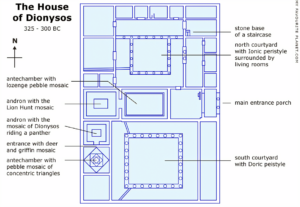 The tomb of Amenemhat has some of the finest decorations of all the tombs at Beni Hasan. This includes scenes depicting activities of daily life such as agriculture, fishing, and fowling, and the practicing of various crafts and professions including carpentry, sandal making, pottery, bows and arrows. Particularly, the ceiling of the tomb chapel is striking. In each segment, along largely yellow rectangle bearing a hieroglyphic inscription runs through the center, representing a wooden beam. Its midsection is flanked by a yellow and red check pattern contained in a rectangle, which is itself surrounded on its two opposing sides by a pattern imitating matting. Surrounding this entire arrangement are red and yellow squares {'lozenge'?} containing quatrefoils....
The tomb of Amenemhat has some of the finest decorations of all the tombs at Beni Hasan. This includes scenes depicting activities of daily life such as agriculture, fishing, and fowling, and the practicing of various crafts and professions including carpentry, sandal making, pottery, bows and arrows. Particularly, the ceiling of the tomb chapel is striking. In each segment, along largely yellow rectangle bearing a hieroglyphic inscription runs through the center, representing a wooden beam. Its midsection is flanked by a yellow and red check pattern contained in a rectangle, which is itself surrounded on its two opposing sides by a pattern imitating matting. Surrounding this entire arrangement are red and yellow squares {'lozenge'?} containing quatrefoils....
As well as the fine paintings, the tomb has a long, faded text in which Amenemhat addresses the visitors to his chapel: ‘You who love life and hate death, say: Thousands of bread and beer, thousands of cattle and wild fowl for the ka of the hereditary prince…the Great Chief of the Oryx Nome…"

Krishna's Butterball (also known as Vaan Irai Kal and Krishna's Gigantic Butterball) is a gigantic balancing rock, granite-boulder resting on a short incline in the historical coastal resort town of Mamallapuram in Tamil Nadu state of India.

Viking Sea of Graves?
And/or: The stone which fell from heaven — the proto-Grail — is matter, personified by its guardian, the Anima Mundi or Sophia. Only when the quintessentia embraces the prima materia can the stone which is rejected become the keystone of creation. The Rosicrucian alchemists were correct in their appraisal of Chnst as the philosopher’s stone because he, of all created humanity, has achieved not only birth and death, but also resurrection in his created body. The mysterious encounter of Christ in the depths of the Underworld which brought about the Resurrection can only be guessed at; he brought his heavenly light, like that Star of Bethlehem at the place of his birth, into the darkness of the tomb. As one in human flesh, he embraced the human condition of death and dissolution, making it his sister and bride {n.b. not 'mother' or 'father'?}. Thus the laws of nature were altered in an inapprehensible way.
The Shroud of Turin bears the imprint of this mysterious encounter — of which the initiate should be loath to speak to the unwise. Flesh was offered voluntarily for the redemption of all flesh; a sacrifice which could not be unacceptable . What Christ has done changes the laws of the created world for ever and afterwards. Word and Wisdom, Logos and Sopia have embraced — this side of the apocatastasis — but our Anima Mundi cannot rest from mantling ‘the guilty globe’ until the whole creation is returned to the primal unity; only then can she enter the eternal embrace of the Bridegroom." [Page 414 'The Western Way'].
 Side note: "The Abbots Bromley Horn Dance is a folk dance which takes place each September in the village of Abbots Bromley in Staffordshire, England. It is performed by ten dancers, accompanied by a musician playing an accordion and a youth with a triangle. Six of the dancers carry reindeer horns; the remaining four are a hobby horse, Maid Marian, a fool, and a youth with a bow and arrow. On Wakes Monday, beginning early in the morning at the parish church where the horns are stored, the performers dance around the parish all day.
Side note: "The Abbots Bromley Horn Dance is a folk dance which takes place each September in the village of Abbots Bromley in Staffordshire, England. It is performed by ten dancers, accompanied by a musician playing an accordion and a youth with a triangle. Six of the dancers carry reindeer horns; the remaining four are a hobby horse, Maid Marian, a fool, and a youth with a bow and arrow. On Wakes Monday, beginning early in the morning at the parish church where the horns are stored, the performers dance around the parish all day.
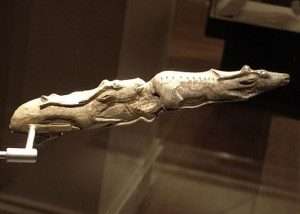
Two swimming reindeer on the tip of a mammoth horn.
The origin of the dance is unknown. The earliest written record of a hobby horse performance at Abbots Bromley dates to 1532 and the first mention of the reindeer horns is from 1686.
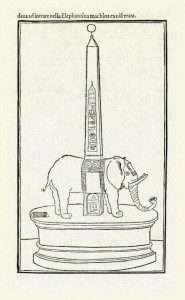
Moving 'mountains'?
Radiocarbon dating has shown that at least one of the horns dates to the eleventh century, though it is unknown how or when they came to Staffordshire or became associated with the dance. Many explanations of the meaning of the dance have been proposed, and it is commonly interpreted as a pagan ritual, but there is no evidence for any of them.
The Cornovii is the name by which two, or three, tribes were known in Roman Britain.[1]  One tribe was in the area centred on present-day Shropshire, one was in Caithness in northernmost Scotland, and there was probably one in Cornwall. The name has appeared in ancient sources in various forms, such as Cornavii, Cornabii, and Curnavii.....
One tribe was in the area centred on present-day Shropshire, one was in Caithness in northernmost Scotland, and there was probably one in Cornwall. The name has appeared in ancient sources in various forms, such as Cornavii, Cornabii, and Curnavii.....
- The Cornovii (Midlands), who were based in the area around modern Shropshire. Ptolemy's 2nd century Geography names two of their towns: Deva Victrix (Chester), and Viroconium Cornoviorum (Wroxeter) which was their capital and probably the fourth largest Roman settlement in Britain....

Two swimming reindeers on the tip of a mammoth horn.
The etymology of the tribal name is uncertain. Although it is accepted that *corn literally means "horn", there is disagreement over whether or not this refers to the shape of the land.[2] Considering that Cornwall is at the end of a long tapering peninsula, many scholars have adopted this derivation for the Cornish Cornovii: Victor Watts in the Cambridge Dictionary of English Place-names (2010), for instance, derives it from a postulated original tribal name *Cornowii, "the people of the horn".[4]
And/or: Ursula (Latin for 'little she-bear') was a Romano-British virgin and martyr possibly of royal origin. She is venerated as a saint in the Roman Catholic Church, Eastern Orthodox Church[2] and the Anglican Communion. Her feast day in the pre-1970 General Roman Calendar and in some regional calendars of the ordinary form of the Roman Rite is 21 October.

Dresden {Saxony} Germany. Rooster on top. Rooster also on top of Notra Dame roof. 'Forest of oaks'.

What is 'horn' made from?
There is little information about Ursula or the anonymous group of holy virgins who accompanied her and, on an uncertain date, were killed along with her at Colonia Agrippina.[3] They remain in the Roman Martyrology,[4] although their commemoration does not appear in the simplified General Roman Calendar of the 1970 Missale Romanum.[5]
The earliest evidence of a cult of martyred virgins at Cologne is an inscription from c. 400 in the Church of St. Ursula, located on Ursulaplatz in Cologne. This inscription commonly referred to as the Clematius Inscription[6] states that the ancient basilica had been restored by senator Clemantius on the site where the holy virgins were killed. The earliest source to name one of these virgins as "Ursula" dates from the 10th century.[7]
What about Big bear?

The Martyrdom of Saint Ursula (German school, 16th century. Unknown painter). Hair? Comb?
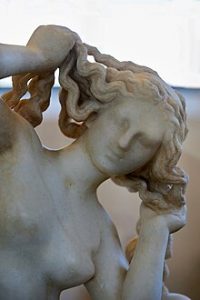
"Scholars in the late-nineteenth and early-twentieth centuries, accepting Hesiod's "foam" etymology as genuine, analyzed the second part of Aphrodite's name as *-odítē "wanderer"[8] or as *-dítē "bright".....Hesiod derives the name Aphrodite from aphrós (ἀφρός) "sea-foam",[4] interpreting the name as "risen from the foam", Moon rising?
There is only one church dedicated to Saint Ursula in the United Kingdom. It is located in Wales at Llangwyryfon, Ceredigion.
The Ursulines and the Virgin Islands are named after Saint Ursula and her companions.
'She Who Loves Silence'?
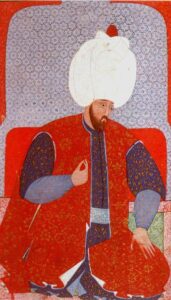
Finger and thumb? Tulip/lotus bud?

'She who loves silence'.
Side note: The Golden Horn (Turkish: Altın Boynuz or Haliç; Ancient Greek: Χρυσόκερας, Chrysókeras; Latin: Sinus Ceratinus) is a major urban waterway and the primary inlet of the Bosphorus in Istanbul, Turkey. As a natural estuary that connects with the Bosphorus Strait at the point where the strait meets the Sea of Marmara, the waters of the Golden Horn help define the northern boundary of the peninsula constituting "Old Istanbul" (ancient Byzantium and Constantinople), the tip of which is the promontory of Sarayburnu, or Seraglio Point. This estuarial inlet geographically separates the historic center of Istanbul from the rest of the city, and forms a horn shape, sheltered harbor that in the course of history has protected Greek, Roman, Byzantine, Ottoman and other maritime trade ships for thousands[2] of years.
Throughout its history, the Golden Horn has witnessed many tumultuous historical incidents, and has been depicted in numerous works of art....While the reference to a "horn" is understood to refer to the inlet's aerial silhouette, the significance of the designation "golden" remains more obscure.
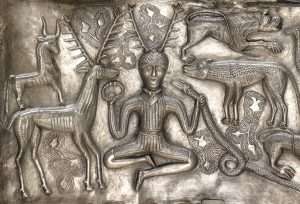
Seated on what?
Continued: Malcolm Todd, in The South West to AD 1000 (1987), discusses the alternative etymologies that have been put forward. These include the name being a reference to dwellers in promontory forts, and an explanation hypothesised by Ann Ross in 1967 that the tribal names may be totemic cult-names referring to a "horned god" cult followed by the tribes, which Todd says may be cognate with the Gaulish Cernunnos or the unnamed horned god of the Brigantes.[3]
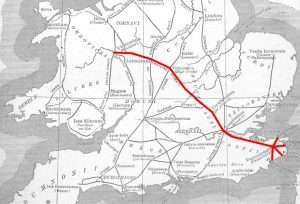 The shape of the land is less likely to be the explanation for the tribe's name in Caithness, and it does not explain that use of the term for the inland Midlands tribe at all. Graham Webster in The Cornovii (1991), about the Midlands tribe, cites Anne Ross's hypothesis and points out that it is interesting that the Abbots Bromley Horn Dance has survived from pagan ritual – Abbot's Bromley being only 35 miles (55 km) away from the tribal centre of Viroconium. Webster also asserts that Professor Charles Thomas made a good case for totemic ethnonyms based on animals and birds in Scotland....
The shape of the land is less likely to be the explanation for the tribe's name in Caithness, and it does not explain that use of the term for the inland Midlands tribe at all. Graham Webster in The Cornovii (1991), about the Midlands tribe, cites Anne Ross's hypothesis and points out that it is interesting that the Abbots Bromley Horn Dance has survived from pagan ritual – Abbot's Bromley being only 35 miles (55 km) away from the tribal centre of Viroconium. Webster also asserts that Professor Charles Thomas made a good case for totemic ethnonyms based on animals and birds in Scotland....
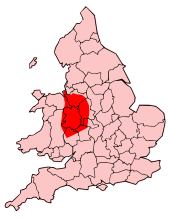
 The name Churn is ancient, certainly pre-Roman and probably from a Celtic language, possibly that spoken by the Dobunni tribe, which controlled the area before the Roman conquest in the 1st century AD. The original name may have sounded similar to Korinn, but its meaning is unknown.[4] It has also been suggested that the origin of the word is associated with the ancient British Cornovii tribe.[5] Cognate names and name elements from the area are Cerney, Ciren and Corin as found in the settlement names of North Cerney, Cirencester, South Cerney, and Cerney Wick (all on or close to the river).[6] Cirencester's name, first recorded as Corinium Dobunnorum, is in original identical with the name of the river....
The name Churn is ancient, certainly pre-Roman and probably from a Celtic language, possibly that spoken by the Dobunni tribe, which controlled the area before the Roman conquest in the 1st century AD. The original name may have sounded similar to Korinn, but its meaning is unknown.[4] It has also been suggested that the origin of the word is associated with the ancient British Cornovii tribe.[5] Cognate names and name elements from the area are Cerney, Ciren and Corin as found in the settlement names of North Cerney, Cirencester, South Cerney, and Cerney Wick (all on or close to the river).[6] Cirencester's name, first recorded as Corinium Dobunnorum, is in original identical with the name of the river....
Much of the catchment basin of the Churn was a key Roman settlement in the 2nd to 4th centuries AD, as Corinium Dobunnorum rose to likely status of capital of a division of Britain.[8]
The Churn and the Thames feed the waters of a western bisection of the Cotswold Water Park, converted since the 1970s from redundant gravel beds between Cirencester and Cricklade.
In 2006, the national government was engaged in a planning study to analyse methods of mitigating future flooding associated with the Churn.[9] However, the river is known to stop flowing completely at times; in September 2011 the river bed was completely dry at Latton.....
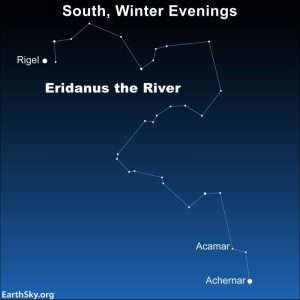
The River Churn is a tributary of the River Thames in central England. It rises at Seven Springs in Gloucestershire and flows south for approximately 37.3 km (23.2 mi) to meet the Thames at Cricklade in Wiltshire. Its length from its source to the confluence with the Thames is greater than that of the Thames from Thames Head, but the Churn is regarded as a tributary, rather than the main river....
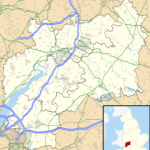 Cirencester (/ˈsaɪrənsɛstər/ ⓘ, occasionally /ˈsɪstər/ ⓘ; see below for more variations)[3] is a market town in Gloucestershire, England, 80 miles (130 km) west of London. Cirencester lies on the River Churn, a tributary of the River Thames. It is the eighth largest settlement in Gloucestershire and the largest town within the Cotswolds. It is the home of the Royal Agricultural University, the oldest agricultural college in the English-speaking world, founded in 1840. The town had a population of 20,229 in 2021....
Cirencester (/ˈsaɪrənsɛstər/ ⓘ, occasionally /ˈsɪstər/ ⓘ; see below for more variations)[3] is a market town in Gloucestershire, England, 80 miles (130 km) west of London. Cirencester lies on the River Churn, a tributary of the River Thames. It is the eighth largest settlement in Gloucestershire and the largest town within the Cotswolds. It is the home of the Royal Agricultural University, the oldest agricultural college in the English-speaking world, founded in 1840. The town had a population of 20,229 in 2021....
The Roman name for the town was Corinium, which is thought to have been associated with the ancient British tribe of the Dobunni, having the same root word as the River Churn.[4] The earliest known reference to the town was by Ptolemy in AD 150. The town's Corinium Museum has an extensive Roman collection.
Cirencester is twinned with the town of Itzehoe, in the Steinburg region of Germany...
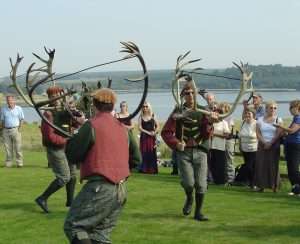
Horizontal wire support? Semi-circle? Top-down?
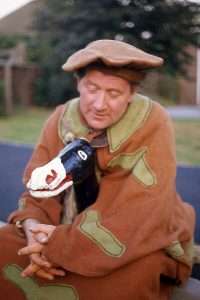
Flat top?
Cirencester's name is first attested by Ptolemy around 150 CE, though the earliest surviving manuscripts are from the thirteenth century. These give various slightly different spellings, of which the original seems to have been Κορίνιον (Corinium). The etymology of this name is, however, unknown.[6] The same name is found in River Churn, which passes through the town (and which, with the addition of the Old English word ēa ('river') in turn gave its name to North Cerney, South Cerney, and Cerney Wick).[7]
As the Celtic languages changed, this name became Proto-Welsh Cerin. This proto-Welsh name was adopted into English in the course of Celtic language-death in England with the addition of the Old English word ceaster ('Roman fortification'), and is first attested in this form as Cirenceaster in the Anglo-Saxon Chronicle (a text which took its present form in the later ninth century). The name also persisted in Welsh, also first being attested in the ninth century, in writings of Asser, in the form Cair Ceri."

'M' shape? What was made from the 'ribs' of Adam?
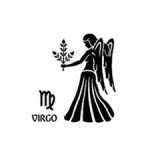 And/or: Something in the 'abstract' sense of the word: ''As a heavenly body takes a path that sees it curling {'hair?} back on itself like a shoelace, so that same shape is traced in the curling {'spiral'?} motion of a leaf as it grows, or a flower. For example they saw Saturn, which traces a sharp pattern in the sky, forming the pine needles of conifers. Is it a coincidence that modern science shows that pine trees contain unusually large traces of lead, the metal believed by the ancients to be 'inwardly animated' by the planet Saturn. In the ancient view the shape of the human body was similarly affected by the pattern made in the sky by the stars and planets. The movements of the planets for example, were inscribed in the human body in the loop of the ribs and the lemniscate - bootlace shape - of the centripetal nerves. Science has coined the word 'biorhythms' to describe the way the relationship of the earth with the moon and sun, marked by the sequence of the seasons and day following night, is built biochemically deep into the function of every living being." [Page 55 'The Secret History of the World' / J. Black].
And/or: Something in the 'abstract' sense of the word: ''As a heavenly body takes a path that sees it curling {'hair?} back on itself like a shoelace, so that same shape is traced in the curling {'spiral'?} motion of a leaf as it grows, or a flower. For example they saw Saturn, which traces a sharp pattern in the sky, forming the pine needles of conifers. Is it a coincidence that modern science shows that pine trees contain unusually large traces of lead, the metal believed by the ancients to be 'inwardly animated' by the planet Saturn. In the ancient view the shape of the human body was similarly affected by the pattern made in the sky by the stars and planets. The movements of the planets for example, were inscribed in the human body in the loop of the ribs and the lemniscate - bootlace shape - of the centripetal nerves. Science has coined the word 'biorhythms' to describe the way the relationship of the earth with the moon and sun, marked by the sequence of the seasons and day following night, is built biochemically deep into the function of every living being." [Page 55 'The Secret History of the World' / J. Black].
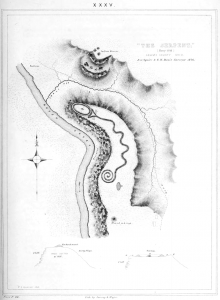
90 degrees? 180 somewhere within the ''creek'' below? And/or: 'Egg' for a head. 'Triangular' neck and 'spiral' for a tail. All enlarged within AND all within the ''boundaries'' of what ''90'' REPRESENTS within that universal MIND SET.

Eye of the 'needle'?
Side note: Serpent Mound, Ohio {U.S.A.} - one of its 'coils' close to the head {facing east} purposely detached/buried/disengaged. 'Three' of the four coils remaining.
''The inner guardian is our true North, the keeper of the charts.'' Try 'map' / 'whale'.
And/or: ''Compass'' in relation to 'encompass' / 'compassion'?
''The thin pointed edge of Pine leaves are called needles.'' ['The Tournament' / BBC1].

Mallorca: 'Needle' middle tower?
A work in progress: A talaiot, or talayot (Catalan pronunciation: [tələˈjɔt]), is a Bronze Age megalith found on the islands of Menorca and Majorca forming part of the Talaiotic Culture or Talaiotic Period. Talaiots date back to the late second millennium and early first millennium BC. There are at least 274 of them, in, near, or related to Talaiotic settlements and the Talaiotic chamber tombs known as navetas. Talaiots pre-date the megalithic structures known as taulas, which are usually found nearby. While some Talaiots are thought to have had a defensive purpose, the use of others is not clearly understood. Some believe them to have served the purpose of lookout or signalling towers, as on Menorca, where they form a network.

Cold and warm on either side of the Pillars of Hercules. Question. Front or back? Recall the Colossus of Rhodes.
 And/or: "The Pityusic Islands,[1][2] often referenced simply as the Pityuses (Catalan: Pitiüses [pitiˈuzəs], Spanish: Pitiusas; from the Greek πιτύα pitýa, pine tree), or commonly but informally (and ambiguously) as the Pine Islands, is the name given collectively to the Balearic Islands of Ibiza (Catalan: Eivissa), Formentera, S'Espalmador and other small islets in the Mediterranean Sea.
And/or: "The Pityusic Islands,[1][2] often referenced simply as the Pityuses (Catalan: Pitiüses [pitiˈuzəs], Spanish: Pitiusas; from the Greek πιτύα pitýa, pine tree), or commonly but informally (and ambiguously) as the Pine Islands, is the name given collectively to the Balearic Islands of Ibiza (Catalan: Eivissa), Formentera, S'Espalmador and other small islets in the Mediterranean Sea.
The first known name of the islands was the Ancient Greek geonym Πιτυοῦσσαι Pityûssai ("covered in pine trees").[3]
"Conifer tree bark is saturated with highly flammable sap." ['Alone' / S11 EP6].
The Pine Islands are sometimes grouped together as part of the Balearic Islands, or else considered separate with the Balearics proper being Mallorca and Menorca (which together with their islets form the Gymnesian Islands). Politically, they are part of the autonomous community of the Balearic Islands.

Kingdom of Majorca.

Right angles?
Initially, they were administratively part of the same insular council (of Ibiza and Formentera), but since 2007 they are now separated between the insular council of Ibiza and the insular council of Formentera (each one is also assimilated to a single comarca), which are two of the four main administrative subdivisions of the province (and autonomous community) of the Balearic Islands."
The Kingdom of Majorca (Catalan: Regne de Mallorca, IPA: [ˈreŋnə ðə məˈʎɔɾkə]; Spanish: Reino de Mallorca; Latin: Regnum Maioricae; French: Royaume de Majorque) was a realm on the east coast of Spain, which included certain Mediterranean Islands, and which was founded by James I of Aragon, also known as James the Conqueror. In a will written in 1262 after the death of his firstborn son Alfonso, he ceded the kingdom to his son James.
 The Gymnesians (Catalan: Illes Gimnèsies [ʒimˈnɛziəs], Spanish: Gimnesias [ximˈnesjas]), or Gymnesic Islands (Catalan: Illes Gimnèsiques),[1] is a collective name given to the two largest (and easternmost) Balearic Islands, Mallorca and Menorca, distinguishing them from the Pityuses (Catalan: Illes Pitiüses; Spanish: Pitiusas), or Pine Islands, Ibiza and Formentera.
The Gymnesians (Catalan: Illes Gimnèsies [ʒimˈnɛziəs], Spanish: Gimnesias [ximˈnesjas]), or Gymnesic Islands (Catalan: Illes Gimnèsiques),[1] is a collective name given to the two largest (and easternmost) Balearic Islands, Mallorca and Menorca, distinguishing them from the Pityuses (Catalan: Illes Pitiüses; Spanish: Pitiusas), or Pine Islands, Ibiza and Formentera.

A 'stone' to the middle of the forehead. Minds eye? Cyclopes?
The word Gymnesian (from the Greek: γυμνήτες gymnetes) means 'naked'. The Greeks called the islands Gymnesiae (Ancient Greek: Γυμνήσιαι). According to Diodorus Siculus the Greeks called the islands like this because the inhabitants were naked during the summer time.[2] The Ancient Greeks recruited the local inhabitants of these islands, the Talaiotics, as slingers. According to some researchers, this does not mean that they fought naked, but that they used much lighter armament than the hoplites.
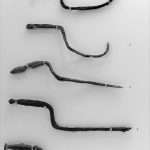
Laconian Keys: Straight lines and curves. 90/180?
Continued: Coomaraswamy says that to give the true meaning of the expression...''has become the head of the corner''...could be translated as ''become the keystone of the arch,'' which is perfectly exact, and thus this stone, by its shape as well as position, is effectively unique in the entire edifice, as it must be in order that it may symbolize the principle on which all depends.".......[ or is 'built' on. This readers input].
Side note: ''Serpent mound'' found on Oak Island. ['Curse of Oak Island' / 20/2/21].
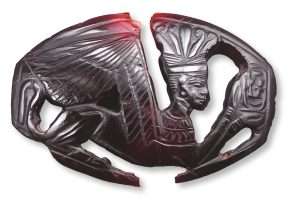
"A sard plaque showing Tiye as a winged female sphinx with the cartouche of Nebmaatra. The headdress, with foliage, is identical to other female sphinxes from Western Asia." Truncated ends? 'Scota' to enlarge.
"The great hat in the form of a lemniscate which the 'magician' wears, like his attitude of perfect ease, indicates this transposition. For the lemniscate [the horizontal eight] is not only the symbol of infinity, but also that of rhythm, of the respiration and circulation - it is the symbol of eternal rhythm or the eternity of rhythm..." [Taken from the book by Tomberg; 'Meditations on the Tarot: A Journey into Christian Hermeticism'].

Minoan: Griffin warrior seal stone. Figure of eight shield.
As unlikely as it may seem [i.e.,if only to those first impressions] - try ''rhythm''.
And/or: "The lemniscate was a fairly popular symbol in mediaeval art, but its form is more often than not used in hidden structures, especially in connection with planetary considerations, or in relation to spiritual hierarchies." ['The Secret Zodiac'].
N.B. 8x8 = 'sixtyfour'.
'Fool' of the Tarot to enlarge.

One full 'circle' ? In what SENSE?
 Hindu analogy on the same principle - ''Vedanta = A school of Indian philosophy that emphasizes one supreme Principle, which is the foundation of the universe." Recall the importance of the 'Lotus' to that religion as a whole, in relation to a 'foundation', i.e.,"O Sadguru, giver of grace! You yourself are the knowledge of perfection i received from you. You fully pervade everywhere, and Siddha students see you repeatedly in the Blue Pearl. O blue jewel, Bhagawan Shri Nityananda, i bow to your lotus feet." [ Extract taken from the 'Invocation' to the book, 'Play of Consciousness' by Swami Muktananda].
Hindu analogy on the same principle - ''Vedanta = A school of Indian philosophy that emphasizes one supreme Principle, which is the foundation of the universe." Recall the importance of the 'Lotus' to that religion as a whole, in relation to a 'foundation', i.e.,"O Sadguru, giver of grace! You yourself are the knowledge of perfection i received from you. You fully pervade everywhere, and Siddha students see you repeatedly in the Blue Pearl. O blue jewel, Bhagawan Shri Nityananda, i bow to your lotus feet." [ Extract taken from the 'Invocation' to the book, 'Play of Consciousness' by Swami Muktananda].
Further clues..."Emulating the sayings of his Himalayan guru, Ali [also known as 'Sri M' ] strongly asserts that one has to live like the lotus, which, while growing in water and deriving its nourishment from it, [link to 'mud' symbolism] still does not let water wet its petals." [Back cover to the book, 'Deeper Aspects of Hinduism'. Mentioned elsewhere]. Link to wet / dry symbolism.
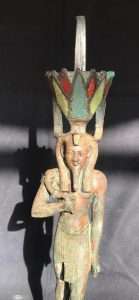
From the 'waters' of creation {Self becoming} - a lotus flower.

'Spirit' or 'Soul' as a start point?
"Today I see Muhammad ascend. The friend is everywhere, in every action. Love, a lattice. Body, fire. I say, show me the way. You say, put your head under your feet. That way you rise through the stars and see a hundred other other ways to be with me. There are as many as there are flight paths of prayer at dawn." [Poem 17 'Flightpath', taken from the book, 'Rumi: Bridge to the Soul' by Coleman Barks.
Side note: "In ancient Egypt, the sign of the lotus flower meant 1000 and that of the boat, 10000. " ['Mystery of Numbers' from the chapter 'Ten' - what the author defines as 'Completeness and Perfection'].
Griffin?
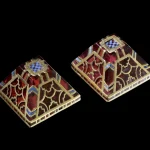
Sutton Hoo to enlarge.
And/or: ''The term millefiori is a combination of the Italian words "mille" (thousand) and "fiori" (flowers). Apsley Pellatt in his book Curiosities of Glass Making was the first to use the term "millefiori", which appeared in the Oxford English Dictionary in 1849; prior to that, the beads were called mosaic beads.''
Mandala?
 A working example: The discovery of a previously unknown Roman villa in rural Rutland during the 2020 lockdown was one of the archaeological stories of the year.
A working example: The discovery of a previously unknown Roman villa in rural Rutland during the 2020 lockdown was one of the archaeological stories of the year.

Guests would have sat in the apse at the bottom of the photograph, while the villa owner narrated the mosaic’s story. The scorching is from later use of the room.
Villas are emblematic features of the Roman countryside, and many are known across Britain. But this new discovery is unique. It has what could be considered the most significant Roman mosaic discovery in the past century at its heart.
The mosaic was originally partly exposed by the landowners, who were investigating in the field after discovering pottery and tile fragments. A year later I led a team of archaeologists and students from the University of Leicester in fully exposing the mosaic floor. This summer we returned as part of a joint excavation with Historic England.
The mosaic tells a grim tale of revenge from towards the end of the Trojan war, famously described in Homer’s Iliad.
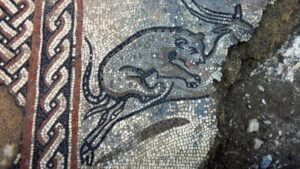
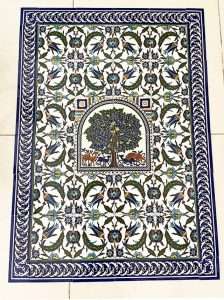
A magnificent tile layout with the Tree of life at it's center, which is surrounded by a beautiful floral pattern, and a surrounding cobalt blue border. This tile mural is the smaller version of the actual tile layout in the lobby of the Ambassador hotel in Jerusalem.
Over three panels it depicts the duel between the Greek hero Achilles and Prince Hector of Troy and the unsavoury outcome of Achilles’s victory.
The mosaic is an incredible find. It is the only representation of the Trojan war from Roman Britain, and tells the story in an unusual “comic strip” style.
One of the ancillary buildings appears to have initially been a timber barn but was converted to stone sometime in the third or fourth century AD.
Wheat or barley?
Further excavation also took place around the dining room that held the mosaic. Evidence was found for an earlier boundary ditch, provisionally dated to the second or third century AD, built during an earlier iteration of the villa. The ditch lay beneath the mosaic and had caused slumping of the floor over time. Perhaps this led to the room eventually going out of use.

"Lozenge shape" mentions Alice Roberts.
Investigation of the corridors on either side of the triclinium found a collapsed patterned mosaic on the western side and a preserved mosaic in the eastern corridor, which showed a complex kaleidoscope design.
The key discovery was that the dining room was a later addition to the building. Examination of the wall relationships indicated a major refurbishment in the third or fourth century to incorporate the triclinium and Trojan war mosaic.

Found in Magdala {'Tower'}.
For now, it’s unclear why this major work took place. It may be that the villa had reached sufficient wealth to afford such a luxury installation. Alternatively, the owners may have desired to reaffirm their connections to Roman culture and its classical background.

"Shaped like a clover leaf and housed fortysix canons...Part of a chain of defences that secured the river port/harbour of Hull. Standing guard...." ['Digging for Britain' / S10 EP5].

Any paisley?
-
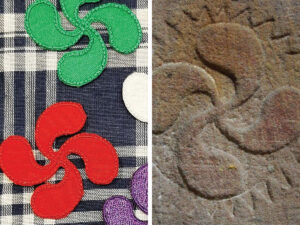
The lauburu: {Basque country}. Ancient hooked cross.
Dot: everything is one, symbol of the Un-manifested.
- Circle: wholeness, integrity, unity.
- Horizontal line: Divides up from down, the earth and the sky. ...
- Vertical line: connection between worlds, energy. ...
- Cross: two lines meet and form a centre.
A working exmple: ''It’s also said that after the Khan was laid to rest in his unmarked grave, a thousand horsemen trampled over the area to obscure the grave’s exact location.
"Sheet of glass" to enlarge.
For all that time, the region has remained pristine and undisturbed, its forests, steppes, mountains, and valleys untouched by humans. The only trails are those made by animals. It is essentially the same landscape as it was in the 13th century and many centuries before that.

Dmitri Polyakov: A true Russian. A selfless man. A team player. R.I.P.

Teamplayer?
That’s because even the Communists weren’t comfortable simply “deconsecrating” the area. Afraid it could become the focal point for Mongolian nationalism, they renamed it a “Highly Restricted Area” and surrounded it with an additional 3,900 square miles (10,000 square kilometers) of “Restricted Area” under military supervision, which housed air bases, weapons storage facilities, and artillery ranges.''
Ares to enlarge.
''Minnesota is a midwestern U.S. state bordering Canada and Lake Superior, the largest of the Great Lakes. The state contains more than 10,000 other lakes, including Lake Itasca, the Mississippi River’s primary source.''
Paisley Park is a 65,000 square foot estate in Chanhassen, Minnesota, United States, once owned by American musician Prince. It was opened to the public as a museum in October 2016.
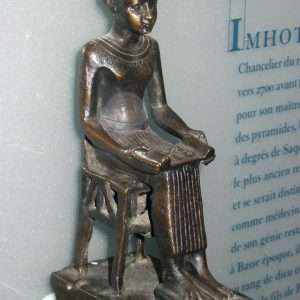
The first teamplayer on the world stage. Its origins.
Continued: Refresher: ''A less sensationalist source merely relates how the Khan’s wife Yesui prepared his body for burial in the simple way in which he had lived: dressing him in a white robe, felt boots, and hat. She then reportedly wrapped the body up in a white felt blanket filled with fragrant sandalwood, the blanket bound with three golden straps. The funeral procession heading back into Mongolia included a riderless horse that carried Genghis Khan’s empty saddle.''
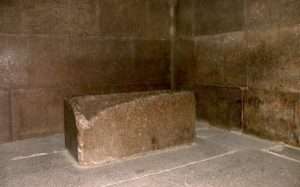
Beginning or end?
And/or: "When a dream is listened to without judgement or criticism, but with an openness of heart, a sympathetic soul, then the 'images' of the dream are given substance....But if the symbolic realm of the psyche is rarely appreciated in our rational culture, how much less is mans spiritual quest? How often does the world walk with hob-nailed boots OVER this secret of the heart? Yet the Path Home, although the thinnest of golden threads {'yellow' ones?}, is the greatest of all dreams, indeed it is the underlying purpose of our whole existence. The spiritual call comes from deep within the psyche....." [Page xvii/xviii 'The Lover and the Serpent' / Llewellyn Vaughan-Lee].
Jebel Barkal to enlarge.
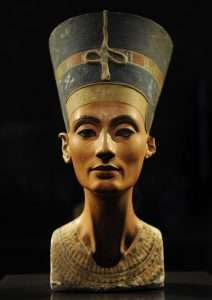
'Stamp of the feminine'. Spirit or soul. Real or symbolic?
 And: "There is a story about a group of mystics, a band of lovers of God, who were called the Kamal Posh. Kamal Posh means blanket wearers, for their only possession was a blanket which they wore as a covering during the day and used as a blanket at night. As the story goes they traveled throughout the ancient world from prophet to prophet but no one could satisfy them. Every prophet told them to do this or to do that, and this did not satisfy them.
And: "There is a story about a group of mystics, a band of lovers of God, who were called the Kamal Posh. Kamal Posh means blanket wearers, for their only possession was a blanket which they wore as a covering during the day and used as a blanket at night. As the story goes they traveled throughout the ancient world from prophet to prophet but no one could satisfy them. Every prophet told them to do this or to do that, and this did not satisfy them.
Then one day, at the time of Muhammad, the Prophet was seated together with his companions when he said that in a certain number of days the men of the Kamal Posh would be coming. So it happened that in that number of days this group of Kamal Posh came to the prophet Muhammad. And when they were with him, he said nothing, but the Kamal Posh were completely satisfied.
'153' days?

“Most certainly, I tell you, one who doesn’t enter by the door into the sheep fold, but climbs up some other way, is a thief and a robber."
Why were they satisfied? Because he created love in their hearts, and when love is created, what dissatisfaction can there be? The Kamal Posh recognized that Muhammad knew the mysteries of the heart. They stayed with the Prophet and were assimilated into Islam. According to this story the Kamal Posh became the mystical element of Islam. And later these wayfarers became known as Sufis, perhaps in reference to the white woolen blanket, sûf, which they wore, or as an indication of their purity of heart, safâ, for they were also known as the pure of heart."
'She who loves silence'.
Sheep decans to enlarge.
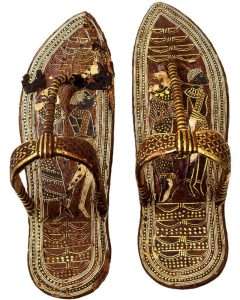

'Spirit' or 'Soul'? Male or female feet.
Continued: ''Sandalwood is mentioned in various suttas of the Pāli Canon.[38] In some Buddhist traditions, sandalwood is considered to be of the padma (lotus) group and attributed to Amitabha Buddha. Sandalwood scent is believed by some to transform one's desires and maintain a person's alertness while in meditation. It is also one of the most popular scents used when offering incense to the Buddha and the guru.''
And/or: Plutarch in his Parallel Lives (Sertorius, 75 AD) referring to the military commander Quintus Sertorius (d. 72 BC), relates that after his return to Cádiz, he met sailors who spoke of idyllic Atlantic islands: "The islands are said to be two in number separated by a very narrow strait and lie 10,000 furlongs [2,000 km] from Africa. They are called the Isles of the Blessed. Madeira, originally uninhabited, was claimed by Portuguese sailors in the service of Prince Henry the Navigator in 1419 and settled after 1420. The archipelago is considered to be the first territorial discovery of the exploratory period of the Age of Discovery. Accounts by Muhammad al-Idrisi state that the Mugharrarin ("the adventurers" – seafarers from Lisbon) came across an island where they found "a huge quantity of sheep, the meat of which was bitter and inedible" before going to the more incontrovertibly inhabited Canary Islands. This island, possibly Madeira or Hierro, must have been inhabited or previously visited by people for livestock to be present.''
'Navigator' to enlarge.

Votive statues of Melqart-Hercules, from the Islote de Sancti Petri. Opposite: Coat of Arms of Cadiz {very similar to its flag - but with RED background}. Best foot forward?
 And/or: Cádiz (/kəˈdɪz/ kə-DIZ, US also /ˈkeɪdɪz, ˈkæd-, ˈkɑːd-/ KAY-diz, KA(H)D-iz,[2][3][4] Spanish: [ˈkaðiθ]) is a city in Spain and the capital of the Province of Cádiz in the autonomous community of Andalusia. It is located in the southwest of the Iberian Peninsula off the Atlantic Ocean separated from neighbouring San Fernando by a narrow isthmus.
And/or: Cádiz (/kəˈdɪz/ kə-DIZ, US also /ˈkeɪdɪz, ˈkæd-, ˈkɑːd-/ KAY-diz, KA(H)D-iz,[2][3][4] Spanish: [ˈkaðiθ]) is a city in Spain and the capital of the Province of Cádiz in the autonomous community of Andalusia. It is located in the southwest of the Iberian Peninsula off the Atlantic Ocean separated from neighbouring San Fernando by a narrow isthmus.
Cádiz, one of the oldest continuously inhabited cities in Western Europe, was founded by the Phoenicians as a trading post.[5][6] In the 18th century, the Port in the Bay of Cádiz consolidated as the main harbour of mainland Spain, enjoying the virtual monopoly of trade with the Americas until 1778. It is also the site of the University of Cádiz.
Side note: As to when the first step in the chain of events could have happened, several old thorny issues about the arrival of the Phoenicians beyond the Straits of Gibraltar must be revived. According to the chronology of the Roman historian Velleius Paterculus, Tyre's colony at Cadiz, near Tartessos and a short voyage N/W of the straits, was founded 'eighty' years after the fall of Troy." {INTRO: Tartessian: Celtic in the S/W at the Dawn of History' / J. Koch}.

“Most certainly, I tell you, one who doesn’t enter by the door into the sheep fold, but climbs up some other way, is a thief and a robber." EAST-WEST?
Continued: Numismatic inscriptions in the Phoenician language record that the Phoenicians knew the site as a Gadir or Agadir (Phoenician: 𐤀𐤂𐤃𐤓, ʾgdr),[7] meaning 'wall', 'compound', or (by metonymy) 'stronghold'.[8] Borrowed by the Berber languages, this became the agadir (Tamazight for 'wall' and Shilha for 'fortified granary') common in North African place names,[9] such as that of the Moroccan city of Agadir. The Carthaginians continued to use this name and all subsequent names have derived from it.
Attic Greek sources hellenized Gadir as tà Gádeira (Ancient Greek: τὰ Γάδειρα), which is neuter plural. Herodotus, using Ionic Greek, transcribed it a little differently, as Gḗdeira (Γήδειρα). Rarely, as in Stephanus of Byzantium's notes on the writings of Eratosthenes, is the name given in the feminine singular form as hè Gadeíra (ἡ Γαδείρα).

The {hypothesis} is that the Iberian scripts {the S/E 'Meridional' and then the N/E 'Levantine'} were then adapted from the S/W signary, both before the 5th century BC, and afterwards the Celtiberian scripts were developed from the N/E Iberian script. {Intro}.'Comb' to enlarge.

S/W?
AND/OR: Beyond the Aegean, some of the earliest written records of Europe come from the southwest, what is now southern Portugal and south-west Spain. Herodotus, the 'Father of History', locates the Keltoí or 'Celts' in this region, as neighbours of the Kunites of the Algarve. He calls the latter the 'westernmost people of Europe' {'153'?}. However, modern scholars have been disinclined-until recently-to consider the possibility that the South-western inscriptions and other early linguistic evidence from the kingdom of Tartessos were Celtic. The aim of this book is to show how much of this material closely resembles the attested Celtic languages: Celtiberian spoken in east-central Spain, Gaulish on the other side of the Pyrenees, as well as the longer surviving languages of Ireland, Britain, and Brittany. In many cases, the approximately 85 Tartessian inscriptions of the period c. 750-c. 450 BC reveal more than isolated Celtic names and words and can be interpreted as continuous statements written in an Ancient Celtic language. It is worth emphasizing that most of Tartessian's Celtic comparanda are not drawn from poorly attested and rare words or vocabulary otherwise attested only in non-Celtic Indo-European languages; rather they are straightforward items of core vocabulary in one, or most often more than one, Celtic language. To recognize the Tartessian language as Celtic has profound historical implications. By a century or more, it is the earliest attested Celtic language. Its early date and its extreme situation on Europe's south-western edge call for reconsideration of the standard account of the origins of the Celts and the Celtic languages in central Europe.

From what 'material' are horns made from?
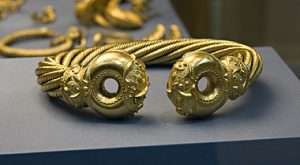
Eight strands each. Sixtyfour in total.
A working example: According to an early tenth-century account by Ibn Rusta, a Persian geographer, the Rus were nomadic raiders who would set upon Slavic people in their boats and take them captive. They would then transport them to Khazaria or Bulgar, a Silk Road trading hub on the Volga River, where they were offered for sale along with furs. “They sell them for silver coins, which they set in belts and wear around their waists,” writes Ibn Rusta. Another source, Ibn Fadlan, a representative of the Abbasid Caliph of Baghdad who traveled to Bulgar in 921, reports seeing the Rus disembark from their boats with slave girls and sable skins for sale. The Rus warriors, according to his account, would pray to their gods: “I would like you to do me the favor of sending me a merchant who has large quantities of dinars and dirhams [Arab coins] and who will buy everything that I want and not argue with me over my price.” Whenever one of these warriors {Viking} accumulated 10,000 coins, Ibn Fadlan says, he would melt them down into a neck ring for his wife.
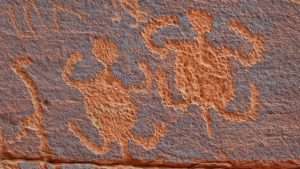
Turtle people emerging from a horizontal crack.
And/or: "Starting around 550BC roughly 10000 Aegean turtle coins were made each year for nearly seventy years. The name {New one?} Aegean is thought to have come from Aegea, mythical Queen of the Amazons, who died at sea. It was the principle world trade coin until the Athenian Owl replaced it in the 5th centyry BC. Were made in silver {and possibly electrum}. Silver for the coins was taken from the island of Sifnos, eighty miles S/E of the city of Aegina. The turtle ones came before the tortoise ones: 'No one knows why. Nor it it recorded'.... " ['Pawn Stars' / S15 EP7].
The word ''Carapace'' mentioned: ''Because its the perfect shape for striking coins.''
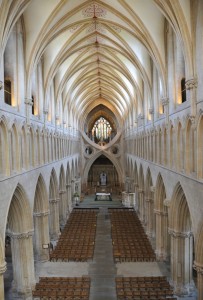
The key stone, that in this example could be represented as the navel. The midriff of the human form.
"We have here yet another application of the analogy, which has been explained already on previous occasions, between the 'first' and the 'last', or the 'beginning' and the 'end'. The construction represents manifestation, in which the principle appears only as the ultimate completion: and it is precisely in virtue of the same analogy that the 'first stone' or the 'foundation stone' may be regarded as a 'reflection' of the last stone which is the true cornerstone."[Chapter 43, 'Symbols of Sacred Science']. Think about both paragraphs in relation to those missing 'corners' of the Palenque Lid. Once understood...''that which was lost [or 'missing' ] is now found.''
'TURNING A CORNER'.
 Pakal's sarcophagus lid is made of a single stone. It is rectangular in shape, measuring between 245 and 290 millimeters (roughly 9-11.5 inches) thick in different places. It is 2.2 meters wide by 3.6 meters long (about 7 feet by 12 feet). The massive stone weighs seven tons. There are carvings on the top and sides. The massive stone would never have fit down the stairways from the top of the Temple of the Inscriptions. Pakal's tomb was sealed first and then the temple was built around it. When Ruz Lhuillier discovered the tomb, he and his men painstakingly lifted it with four jacks, raising it a little bit at a time while putting small pieces of wood in the gaps to hold it in place.
Pakal's sarcophagus lid is made of a single stone. It is rectangular in shape, measuring between 245 and 290 millimeters (roughly 9-11.5 inches) thick in different places. It is 2.2 meters wide by 3.6 meters long (about 7 feet by 12 feet). The massive stone weighs seven tons. There are carvings on the top and sides. The massive stone would never have fit down the stairways from the top of the Temple of the Inscriptions. Pakal's tomb was sealed first and then the temple was built around it. When Ruz Lhuillier discovered the tomb, he and his men painstakingly lifted it with four jacks, raising it a little bit at a time while putting small pieces of wood in the gaps to hold it in place.  The tomb remained open until late 2010, when the massive lid was painstakingly lowered once again, covering Pakal's remains, which had been returned to his tomb in 2009.....In 683 A.D., Pakal, the great King of Palenque who had ruled for almost seventy years, died. Pakal's time had been one of great prosperity for his people, who honored him by entombing his body inside the Temple of the Inscriptions, a pyramid that Pakal himself had ordered built specifically to serve as his tomb. Pakal was buried in jade finery, including a beautiful death mask. Placed over Pakal's tomb was a massive sarcophagus stone, laboriously carved with an image of Pakal himself being reborn as a god. Pakal's sarcophagus and its stone top are among the great all-time finds of archaeology....
The tomb remained open until late 2010, when the massive lid was painstakingly lowered once again, covering Pakal's remains, which had been returned to his tomb in 2009.....In 683 A.D., Pakal, the great King of Palenque who had ruled for almost seventy years, died. Pakal's time had been one of great prosperity for his people, who honored him by entombing his body inside the Temple of the Inscriptions, a pyramid that Pakal himself had ordered built specifically to serve as his tomb. Pakal was buried in jade finery, including a beautiful death mask. Placed over Pakal's tomb was a massive sarcophagus stone, laboriously carved with an image of Pakal himself being reborn as a god. Pakal's sarcophagus and its stone top are among the great all-time finds of archaeology....
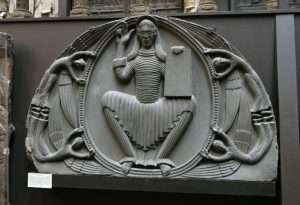
"dress?"
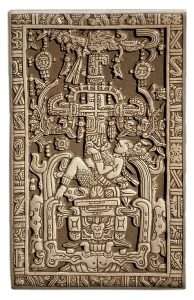
Grapple, wrestle, grip; twisting and turning to enlarge.
The carved edges of the sarcophagus lid narrate events from the life of Pakal and those of his royal forebears. The southern side records the date of his birth and the date of his death. The other sides mention several other lords of Palenque and the dates of their deaths. The northern side shows Pakal's parents, along with the dates of their deaths....The magnificent artistic carving on the top of the sarcophagus lid is one of the masterpieces of Maya art. It depicts Pakal being reborn. Pakal is on his back, wearing his jewels, headdress, and skirt. Pakal is shown in the center of the cosmos, being reborn into eternal life. He has become one with the god Unen-K'awill, who was associated with maize, fertility, and abundance. He is emerging from a maize seed held by the so-called Earth Monster, whose enormous teeth are clearly shown. Pakal is emerging along with the cosmic tree, visible behind him. The tree will carry him to the sky, where the god Itzamnaaj, the Sky Dragon, is awaiting him in the form of a bird and two serpent heads on either side.

Gt. Pyramid built around it? A Beginning or end?
On the sides and ends of the sarcophagus itself, there are eight fascinating carvings of Pakal's ancestors being reborn as trees.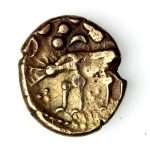 This shows that the spirits of departed ancestors continue to nourish their descendants. The depictions of Pakal's ancestors and former rulers of Palenque include:
This shows that the spirits of departed ancestors continue to nourish their descendants. The depictions of Pakal's ancestors and former rulers of Palenque include:
- Two images of Pakal's father, K'an Mo' Hix, being reborn as a nance tree.
- Two images of Pakal's mother, Sak K'uk', being reborn as a cacao tree.
- Pakal's great-grandmother, Yohl Ik'nal, is shown twice, reborn as a zapote tree and an avocado tree.
- Janahb' Pakal I, Pakal's grandfather, reborn as a guava tree
- Kan B'ahlam I (ruler of Palenque 572-583), reborn as a zapote tree.
- Kan Joy Chitam I (ruler of Palenque ca. 529-565 A.D.), reborn as an avocado tree.
- Ahkal Mo' Nahb' I (ruler of Palenque ca. 501-524 A.D.), reborn as a guava tree......

Flat top? Question. Who first witnessed the 'resurrection'?
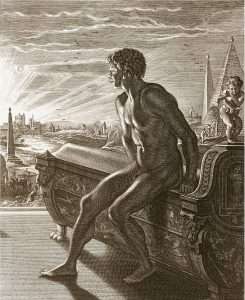
The Temple of the Inscriptions (Classic Maya: Bʼolon Yej Teʼ Naah (Mayan pronunciation: [ɓolon jex teʔ naːh]) "House of the Nine Sharpened Spears"[1]) is the largest Mesoamerican stepped pyramid structure at the pre-Columbian Maya civilization site of Palenque, located in the modern-day state of Chiapas, Mexico. The structure was specifically built as the funerary monument for K'inich Janaab' Pakal,[2] ajaw or ruler of Palenque in the 7th century, whose reign over the polity lasted almost 70 years. Construction of this monument commenced in the last decade of his life, and was completed by his son and successor K'inich Kan B'alam II.[3] Within Palenque, the Temple of the Inscriptions is located in an area known as the Temple of the Inscriptions’ Court and stands at a right angle to the Southeast of the Palace.[4] The Temple of the Inscriptions has been significant in the study of the ancient Maya, owing to the extraordinary sample of hieroglyphic text found on the Inscription Tablets, the impressive sculptural panels on the piers of the building, and the finds inside the tomb of Pakal.[5][6]

Ethiopian talismanic scroll. Once removed - what will he/she smell? 'Spicy aroma'?
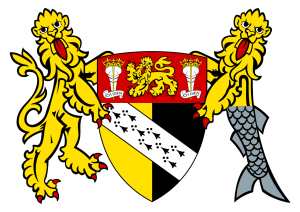
Norfolk: Spear points? Iceni tribe?
REFRESHER: "Metals are purified by 'fire', and the emotions by suffering. The lower desires must starve to nourish the higher; the animal passions must be crucified and die; but the angel of Will removes the stone [ 'lid' link] from the sepulchre and liberates the higher energies from the sphere of selfishness and darkness; and then the resurrected virtues will begin to live and become active in a new world of enduring light and harmony." [Chapter 5, from the book by F. Hartman]. Try ''mettle'' and/or ''cattle''.

Red tongued?
''The whole gamut of human experience {and/or emotions}''. Question. What animal represents that final word? Why?
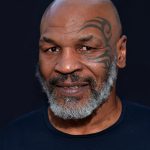
A Spirit of Nature. A good natured one. A gentle Soul.
A working example: ''Frank Bruno went into one mental health facility and i have been around ten of them. This is what we have to go through sometimes. I dont feel sorry for no-one - because this is our journey that we have to deal with - and i don't want anyone to feel sorry for me.....I got the title of the baddest man in the world...the scariest that ever lived. And that's really funny...Its like FIRE, you can use it, you can command it, but if you don't control it... it can kill you and everything around you. I don't think much about anything, but i know this - I know me, Michael Gerard Tyson - and my mind is a torture chamber, and sometimes its not my friend, i have to control it in order to have any stability in life - My biggest challenge.'' ['Bruno and Tyson' / Sky Docu. / 2021].
'Higher/Lower' to enlarge - INTO that universal mind set. Then, now and forever. Past, Present and Future.
In Greek mythology, Perseus is the legendary founder of the Perseid dynasty. He was, alongside Cadmus and Bellerophon, the greatest Greek hero and slayer of monsters before the days of Heracles. He beheaded the Gorgon Medusa for Polydectes and saved Andromeda from the sea monster Cetus.
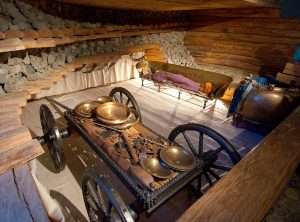
Celtic artwork.
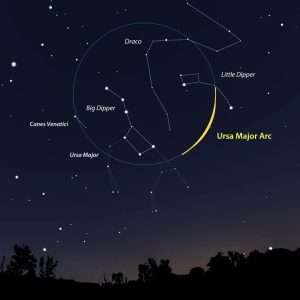
Bears were venerated by our ancients as being the strongest animal to roam the land.
And/or: According to legend, Abydos is where Osiris, the first man, stepped out of his 'vessel' and onto the rich dark soil of Egypt. Beneath his foot, a sacred avocado tree sprang up, and the land flourished....The Osireion is like nothing I've ever seen. Legend has it that the backbone of Osiris is buried there. As for the Flower of Life, that was found inscribed on the upright stones - there are many speculations about its meaning...It is situated behind Seti I massive rock structure {'thirteen' openings i.e., six either side the main/middle gateway} - and the desert beyond. It was designed to take advantage of the high water table, so that the water would encircle the central stones of the bier of Osiris. ['Page 137 'Invoking the Scribes of Ancient Egypt'].
This great limestone structure, unusually L-shaped rather than rectangular, had seven great doorways and was dedicated to the six major gods – Osiris, Isis, Horus, Amun-Ra, Ra-Horakhty and Ptah – and also to Seti I (1294–1279 BC) himself.
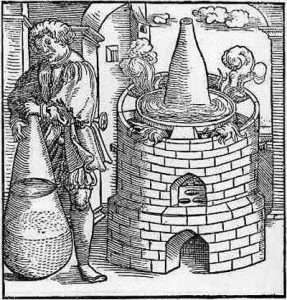
An alchemical chamber, vessel, body.

Womb or tomb?
"You can destroy yourself by fire...by anger expressed outwards...as well as by coldness turned inwards. You will notice that this is not a choice. You either hate too much or love too much. Some say the world will end in fire, others say in ice. From what i've tasted of desire, i hold with those who favour fire. But if it had to perish twice, i think i know enough of hate, to say that for destruction, ice is also great, and would suffice". [Robert Frost. 1874-1963. 'Fire and Ice'. Taken from.. 'Speaking From the Heart' by Sister W. Beckett].
'A Song of Ice and Fire' / G. Martin.
REFRESHER: As seen from a different perspective: "Berossos asserted that the earth was to be 'submerged' when all the planets met in Cancer, and consumed by 'fire' when they met in Capricorn." ['Star Names and Their Meaning' under 'Cancer'].

'Lid'?
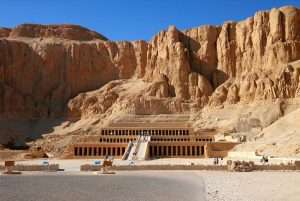
Back to back.
And/or: ..."Gurdjieff had his students start the day at the Prieure where he taught for some years with 45 minutes of silence. This was not a time to practice self-observation - that is for use in the ''heat of the battle'' when there are mechanics at work to be discovered." ['Wisdom of the 4th Way']. Continued elsewhere.
''45'' in relation to three-quarters of something. 'Fire' in relation to ''battle''.
Question. Was there a lid in the 'Kings' chamber?
All the above proving the viability of the subject. Regardless of ones first impressions of it. More sense than non-sense. The real question is [if only to this reader] Why. Why go to all this time and effort?
Question. ''Mercy'' link?
Represented {in one of its forms} as the Atlantis legend.
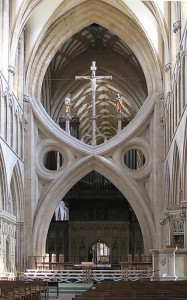
 J[a]...Using Egyptian esoteric lore. Which according to most; all else originated from. One can establish as the French archaeologist Auguste Mariette attempted such ‘secrets’ as...the burial place of Khufu and his two close associates of Giza fame. All three are buried in the same place. Why? Because the whole Giza complex is symbolic of that same personal journey. Symbolic of a concept. Herodotus was only told; or only gave; part of the answer. He was told that Khufu was buried under the pyramid. Symbolically he is; at a distance; but not directly...
J[a]...Using Egyptian esoteric lore. Which according to most; all else originated from. One can establish as the French archaeologist Auguste Mariette attempted such ‘secrets’ as...the burial place of Khufu and his two close associates of Giza fame. All three are buried in the same place. Why? Because the whole Giza complex is symbolic of that same personal journey. Symbolic of a concept. Herodotus was only told; or only gave; part of the answer. He was told that Khufu was buried under the pyramid. Symbolically he is; at a distance; but not directly...
Side note: It has recently been proven that at the time of the pyramids it was lush land all around - ''a rich savanna'' - but by the end of the Old Kingdom a desert was in progress due to climate change. The Nile had at least a twenty year drought period. Elephantine which had once been two islands eventually became ONE. The 'marshland' between the two eventually becoming 'dry'. [Ancient Egypt's Darkest Hour' / Hist. Channel / Jan.2021].
Question. The Famine Stela - talks about drought at the time of Djoser and Imhotep - Coincidence?
Question 2. Whats the remedy for a 'famine'. Spirit or soul?

Wounded thigh? Fisher king?
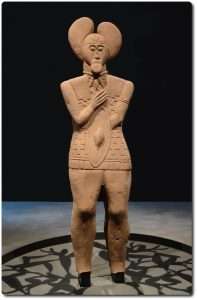
Remedy?
Side note: "Perhaps we may start by admitting that we are wounded {naked?}. ‘The metaphysician (is a) wounded man. A wounded man is not an agnostic — he just has different questions arising out of his wound. Like the shaman, the wounded healer is one who knows that the true cause of pain is loss of Inner reality — the Inner Kingdom. This realization fired the Gnostics to go upon their own voyage of discovery, just as it later inspired those who went on quest for the Grail and the healing of the Waste Land. Truly, there are many ways of achieving the Great Work." {Page 253 'The Western Way'}.
1547 Dance of Death {woodcut engravings} - Hans Holbein.
Continued:........and the possible burial place of Akhenaten. A ‘different’ belief system represented by a different location, i.e., Amarna = 'Middle' nome = 'Hare' symbol. Think about it...in relation to all the above. Which answers the reason as to why such a barren/windy wilderness was chosen in the first place. Together with the significance of his very own....’Boundary ’ Stella/s { '16' in total ? }. Another co-incidence? Or a 'meaningful' one? Some believe he is already found. Others do not. [See notes by Livio Catullo Stecchini, for verification].
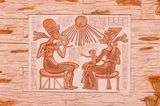
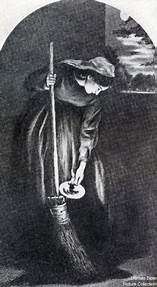
In this parable, a woman sweeps her dark house looking for a lost coin. HESTIA? And/or: "The Mystery Schools demand firstly ‘know thyself’. The Lesser Mysteries are spent in clearing the ground ready for the dawning of this event. Greater Mysteries come only when this basis is established, when the initiate can stand alone, in command of his Fortress; when the threshold is swept and made ready for the descent of the Holy Guardian Angel or the Inner Master. The preparation complete, the levels of the self clearly perceived, the initiate is then ready for the identification with the god-forms or archetypes of his or her school. {Page 225 'The Western Way'}
Something extra: {analogy?}: "On numerous occasions I brought the conversation round to the numina, especially to rites and ceremonies....In front of an empty hut, in the middle of a busy street, I had seen a carefully swept spot several yards in diameter. Concerning these I had only seen a single piece of evidence.....If someone died the next village was informed and the body brought to the mid-point between the two villages....With the Elgonyi, the body was placed in the middle of the hut. The laibon walks around the body, sprinkling milk from a bowl onto the floor, murmuring, 'Ayik adhista ayik!'....The old man said this was the true religion of all the peoples, that all Kevirondos, all Buganda, all tribes for as far as the eye could see worshipped adhista - that is, the sun at the moment of rising. Only then was the sun munga, God. The first delicate golden crescent of the new moon in the purple of the western sky was also god. But only at that time; otherwise not... " [Pages 295/6 'Memories, Dreams and Reflection' / C. G. Jung].
And/or: ''The Great Pyramid was a tomb for Khufu. No question about it.'' ['History of Ancient Egypt' / Bob Brier].
Question. Bowls of milk - all year round?
Question 2. Where?
Only when ALL the available information is accessed - that ''inner'' one {mind set?} as well as the obvious - will true answers be found.
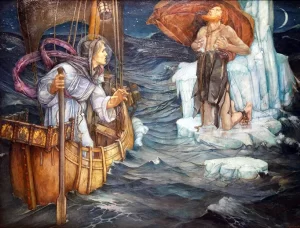
The 'living' island.
"It was a profoundly stirring experience to find, at the source of the Nile, this reminder of the ancient Egyptian conception of Osiris, Horus and Set. Here, evidently, was a primordial African experience that had flowed down to the coasts of the Mediterranean along with the sacred waters of the Nile: adhista, the rising sun, the principle of light like Horus; together with ayik, the principle of darkness....In the simple rites performed for the 'dead' the laibon's words and his sprinkling of milk UNITE the opposites...." [Page 297 same book].
Question. Where would that be represented in {say} a landscape?

St. Brendan and the Whale. Orkneys to enlarge. Or more importantly N/W - in the Micro and MACRO sense of the word.
Something hinted at {in the 'ritual' SENSE of the word}: ''Reach up again to the heavens beyond the atmosphere, into the firmament of Nut, and pull the palpable energy of the starlight from above. Bring it all the way down into the pillars that grew from the 'etheric' stones you placed at your feet. When you add the water and 'starlight' to the pillars they become opalescent.'' [Page 128 'The Union of Isis and Thoth'].
Opal? As a means.....
REFRESHER: "Gudea made offerings of honey and butter when the foundations were laid; when the building was finished an auspicious day was waited for, and when it came the image of the god was removed to the new temple, and Gudea sprinkled the ground with oil, and set out offerings of honey, butter, wine and dates, grain mixed with milk, food untouched by 'fire', for the gods." [ Chapter 3, 'The Sacred Bee'].
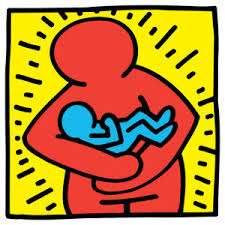
'Male' or 'female' or does it matter?
"The Greek word anemos {'wind'} refers to the 'breath of life' and from this root are derived the two Latin words Animus 'spirit' and Anima 'soul'. This tells us that spirit and soul share the same source, but, as James Hillman points out, 'the ways of the soul and those of the spirit only sometimes coincide'...By analogy, spirit and soul are related to each other, as the sun to the moon, masculine is to feminine, as Logos is to Eros, as Apollonian is to Dionysian - polarities which are reflected within every birth chart..." ['Mapping the Psyche' / VOL.1].
A working example: ''Jesus said, look, i will guide her to make her male, so that she too may become a living spirit resembling you males. For every female who makes herself male will enter the kingdom of heaven.'' ['Gnostic Gospel of Thomas' / verse 114].
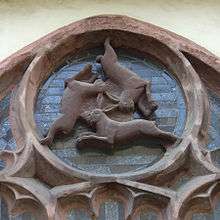
Man in the moon?
And/or: ''It is at just this period that the grammatically male term ''great house'' {which has come to us in the term ''pharaoh''}, is first attested as a periphrastic way to refer to the king. Oddly, the use of a feminine royal titulary seems to have become so standard that even Hatshepsut's father, husband, and stepson were sometimes associated with feminine epithets and feminine pronouns. These might be explained as accidental results of confusion with Hatshepsut's own inscriptions, but their frequency suggests that they were intentional.'' [Page 10 'Hatshepsut: From Queen to Pharaoh' / The Metropolitan Museum of Art].
A working example: ''What we did is name my tics. Its like an alter-ego thing - so we callled it Frankie...its like somebody else.'' Betsy: 'Britains Tourette's Mystery' / Ch. 4 / 2022].
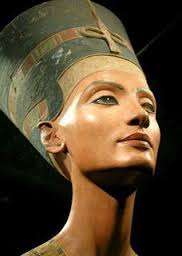
Analogy: ''Lastly, however, Jean is one who performs hieratic acts that reunite heaven and earth, past and present, and that makes the necessary metamorphoses of life possible. 'Transition is my middle name', she says.''{Foreward: 'A Mythic Life' / J. Houston}.
And/or: "A virgin site - that became the Seat of the First Occasion; which he had made for himself that he might rest in it" [Wikipedia/Armarna]. Link to what this subject defines as ''dark night of the soul'' by way of the ''transcendental third''. Question. Where would that be defined within a ''landscape''?
'Man in the moon'.
'On Having No Head'.
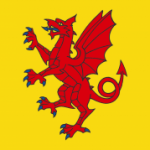
Three rising. One planted? ONE 'loop' in the tail? Single or forked tongue? Green language?
From a different perspective: {with something extra?}: ''This concept of Celli Wig, a seat of government and therefore symbolic of the central recess of Arthurs soul, raises the whole question of the significance of the topographical description insisted on throughout this myth. That a 'boar hunt' should range from the west of Ireland, across the Irish Channel, to West Wales, thence to South Wales as far as the river Severn {'severn bore'?}, and now be threatening Cornwall, clearly indicates some psychic concept.'' [Page 163 'A Celtic Quest' / J. Layard].
''The Severn Estuary is at the eastern end of the Bristol channel.'' ['The Chase'].
''Westward leading still proceeding, guide us to thy ......?
And/or: ''If you have pulled this card, you are asked to embody your star consciousness. The star of your being is rising....'' [Card 17 -Sothis- 'The Anubis Oracle'].
Working example: ''It's a good example of rising to the occasion.'' Quote made after Harmony Tan wins Serena Williams in 1st round at Wimbledon. [28.6.22].
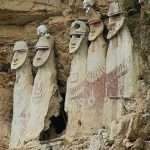 And/or: ''Our birth is but a sleep and a forgetting: The Soul that rises with us, our Life's Star, hath had elsewhere its setting, and cometh from afar: Not in entire forgetfulness, but trailing clouds of glory do we come from 'god' who is our home....'' [Page 38 'A Mythic Life'].
And/or: ''Our birth is but a sleep and a forgetting: The Soul that rises with us, our Life's Star, hath had elsewhere its setting, and cometh from afar: Not in entire forgetfulness, but trailing clouds of glory do we come from 'god' who is our home....'' [Page 38 'A Mythic Life'].
''Sun rises in the west.''?
Analogy: ''Oh great one who becomes sky, you are strong. You are mighty. You fill every place with your beauty. The whole world lies beneath you. You possess it! As you enfold earth {'pendent'/'flag'?} and all things in your arms, enfold me too. Make of me an indestructible star in your body.'' [Page 229 'Imagining the World into Existence'].

''The seat of the soul is there where the outer and the inner worlds meet.'' {Novalis}. The ''middle'' {'crossroads'?} of something? Any cats?
And/or: ''The goddess Bast is invoked to inspire in us the sensual beauty that feeds our passion to create. Our renewed heart, the ab, is the seat of consciousness; it houses the essential desire that fuels the creative process....and in these Mysteries as Wholeness - that create the birth canal through which our souls purpose incarnates as it takes form on Earth.'' [Page 104 'Shamanic Mysteries of Egypt' / N. Scully + L. S. Wolf].
Side note: ''Albert Einstein's surname when translated into English is - One Stone...'' ['The Chase' / 2018].
And/or: "The hebdomad is the only number within the decad {apart from the monad} which neither generates nor is generated by another number within the decad; hence it is called by Pythagoreans ''virgin, not born of mother''.....Moreover, the hebdomad consisting of the dimensions and the four limits makes manifest corporeality and organic life. The limits are point, line, plane, solid; the dimensions are length, breadth, depth." [Page 186 'Alexandria' Vol 3. / D. Fideler].

R.I.P.
Analogy? "Regarding this new point of awareness which is the birth of the observing I, this is the baby step of a new state of being, one that will lead to the ability to live in the presence with detachment, peace, independence of outer circumstances, freedom from distorted and imitated habits." ['Wisdom of the 4th Way]. Continued elsewhere.
The Wall of Sound?
Further clues elsewhere.
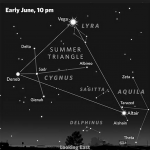 Side note: Virgo { 'Soul'} is Leo {'spirit'} less that red power of self-expression...It is the animus and anima, in Jung's psychology....To ask ''why?'' is already to expect an answer. Thus the expectancy of the symbolical Virgin facing the presence of the eternal Answerer and Fecundator with ''meaning''. It is meaning that fecundates the Virgo mind asking everlasting questions to the riddle of personality and conscious living. He who has gained the power to answer that riddle is Oedipus. He overcomes the Sphinx. He is ready for 'initiation' - which in the Greek symbolism was seen as marriage with the Mother {Nefertiti?}..." [Page 106, 'The Zodiac as the Universal Matrix'].
Side note: Virgo { 'Soul'} is Leo {'spirit'} less that red power of self-expression...It is the animus and anima, in Jung's psychology....To ask ''why?'' is already to expect an answer. Thus the expectancy of the symbolical Virgin facing the presence of the eternal Answerer and Fecundator with ''meaning''. It is meaning that fecundates the Virgo mind asking everlasting questions to the riddle of personality and conscious living. He who has gained the power to answer that riddle is Oedipus. He overcomes the Sphinx. He is ready for 'initiation' - which in the Greek symbolism was seen as marriage with the Mother {Nefertiti?}..." [Page 106, 'The Zodiac as the Universal Matrix'].
Side note: ''Hephaestus was born weak and a cripple {'lame foot'?}. Crippledom we know to be a sign of change - it is the sign of many psychological as well as mystical 'heroes'....Hephaestus was an animus figure symbolising what might have become a change in her....A positive change as later proved....Initially, though, Hera could not acept the change and threw him away {'earth'}....Fell into the sea...rescued by two 'goddesses, Thetis and Eurynome, the latter being the ''primal goddess of all things'' - who SEPERATED the sea from the sky.'' [Page 211 'A Celtic Quest' / J. Layard].
''Horizon''?
Objective clause?
Question {by way of that objective 'view'}: Akhenatens misshape and his sons lame foot?
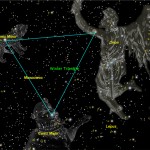
Put the two together.

Iron reliquary box. Symbols that 'surround' it = alchemic process of lead/iron into 'gold'. {'Lost Relics of Knights Templars'}
Continued: "In Leo and Virgo lay now the long forgotten asterism Fahne, of which Ideler wrote: 'The Flag is a constellation of the heavens, one part in Leo, one part in Virgo. Has many stars. On the iron {the arrowhead of the staff} in front one; on the flag two; on every fold of the flag, one...Brown repeats a Euphratean inscription: 'The constellation of the 'Yoke' - 'like a flag floated' - although he claims no connection here, and associates the Yoke with Capricorn." [Page 255 'Star Names and Their Meaning'].
Interpret those keys to 'see' / connect {yoke?} something further - in relation to the Giza complex. And/or Homers Secret Illiad.
All as a means....?
Question. Mindset?
Question 2. Any planets within a particular constellation to represent that ''Seat of 1st occasion'' ? If so, what date would it give?

A ''lightness' of something?
Continued: The author Robert Bauval also falling under the same 'spell' - believing to have identified something under the Sphinx - with his interpretation of subject material as quoted within the program 'Ancient Aliens: Mysteries of the Sphinx' : i.e.,'' I have under me the knowledge of our genesis''. Something indeed will be found - but not directly under it.
REFRESHER: ''The basic plot of the Taming of the Shrew comes from the 'A Thousand and One Nights', .....A coded phrase meaning 'Mother of Records'. This is an allusion to the tradition that their lies hidden underneath the paws of the Sphinx, or in a parallel dimension, a secret library or 'Hall of Records', a storehouse of ancient wisdom from before the flood....Secrets of human evolution encoded within....'' [Page 400 'The Secret History of the World' / J. Black].
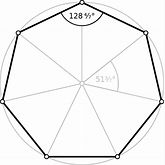
Three and four link? in relation to 11th hour?
Side note: ''Like 41 and 101, 1001 exceeds the great number and therefore comes to mean 'infinite / numberless'. One may think of Binkir kilise, 1001 churches, in Anatolia, or the best known example, 1001 Nights. This number leads to infinite extension, although attempts have been made to explain it as an allusion to the heptagon and mysterious relations between the prime numbers 7, 11, and 13." [Page 278 'Mystery of Numbers' / A. Schimmel].
Continued: A link to Plato's Atlantis. And if anything is found what will that say for the time period in which such monuments were more than likely 'created'? In other words prior to 13,000 years ago from which most know the 'flood' stories evolved from - the last ice age.
Under the water line / above it - as a means.....?
 ''And Joshua said unto all the people, thus said the lord god of Israel: Your fathers dwelt on the other side of the flood in old times, even Terah, the father of Abraham, and the father of Nachor, and they served other gods. And i took your father Abraham from the other side of the flood, and led him throughout all the land of Canaan, and mulitiplied his seed, and gave him Isaac." [Joshua 24 'Bible'].
''And Joshua said unto all the people, thus said the lord god of Israel: Your fathers dwelt on the other side of the flood in old times, even Terah, the father of Abraham, and the father of Nachor, and they served other gods. And i took your father Abraham from the other side of the flood, and led him throughout all the land of Canaan, and mulitiplied his seed, and gave him Isaac." [Joshua 24 'Bible'].
Question. The 'unicorn'. The only animal not to be taken aboard Noah's ark - but 'survived' to be found on 'high' ground - post flood.
What does the unicorn represent?
Begin with ''void''.
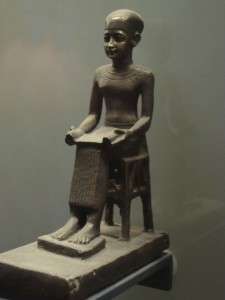
A book of wisdom? Question. Where have you seen that 'head gear' before? 'In profile' or 'face on'?
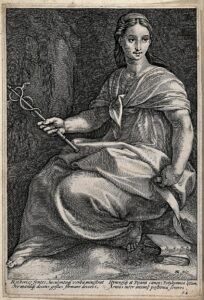 "Ancient Egyptian culture and philosophy is crucial to the understanding of world history and spirituality. One of the misconceptions which is still promoted and prevalent in modern times is that Egypt is not a part of, or located on, the continent of Africa. Rather, it is espoused that Egypt is in the Middle East. This information is incorrect, as Egypt is where it always has been located, though in history it extended beyond its current margins, in the N/E corner of the Africa Continent. Further, it is widely believed by others that even though Egypt may be in Africa, that it was not an African country, and still others may agree that it was an African country, but not originally founded and populated by ''black'' African people [like present day Algeria, which is in Africa but populated by Middle Easterners - Arabs]. These errors must be redressed in order for humanity to move forward. Truth must be promoted, and in this case, it is crucial that this particular truth be brought forth into our human sphere of knowledge, as it offers a chance to humanity for achieving some level of peace and harmony as a world community. Also it will promote the redemption of African culture and thereby uplift African society and thereby the world. Africa provides a common ground, literally and figuratively, for humanity to come together, if we so choose, as both the physical origins of modern day humans is rooted in African soil, and also the spiritual roots of all religions and spiritual traditions can be traced there as well.
"Ancient Egyptian culture and philosophy is crucial to the understanding of world history and spirituality. One of the misconceptions which is still promoted and prevalent in modern times is that Egypt is not a part of, or located on, the continent of Africa. Rather, it is espoused that Egypt is in the Middle East. This information is incorrect, as Egypt is where it always has been located, though in history it extended beyond its current margins, in the N/E corner of the Africa Continent. Further, it is widely believed by others that even though Egypt may be in Africa, that it was not an African country, and still others may agree that it was an African country, but not originally founded and populated by ''black'' African people [like present day Algeria, which is in Africa but populated by Middle Easterners - Arabs]. These errors must be redressed in order for humanity to move forward. Truth must be promoted, and in this case, it is crucial that this particular truth be brought forth into our human sphere of knowledge, as it offers a chance to humanity for achieving some level of peace and harmony as a world community. Also it will promote the redemption of African culture and thereby uplift African society and thereby the world. Africa provides a common ground, literally and figuratively, for humanity to come together, if we so choose, as both the physical origins of modern day humans is rooted in African soil, and also the spiritual roots of all religions and spiritual traditions can be traced there as well.
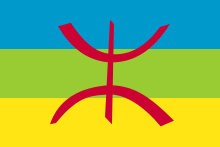
Berber emblem. Ben-ben?
Most of the wars that have occurred in human history after the close of Ancient Egyptian history have been due to religious differences, especially between orthodox [exo-teric] aspects of the three major religions - Christianity , Islam and Judaism - and the various subgroups of religions to which they each have given rise. Yet, all of these religions, and as we shall see, all spiritual traditions of the world, have their birthplace in Kamit. They are as if children and grandchildren of the Kamitan language..." [Preface to the book 'The Serpent Power' by Sebai Muata Ashby. Emphasis; this readers ].
 Analogy? of same..."When we see these stone edifices copy brick ones, it is hard not to speculate that the latter were in turn copied from elaborate tents which had preceded them. The tent implies nomadism, and raises the perennial question of the origin of the race of the pharaohs." [Extract from the book by L. Lamy].
Analogy? of same..."When we see these stone edifices copy brick ones, it is hard not to speculate that the latter were in turn copied from elaborate tents which had preceded them. The tent implies nomadism, and raises the perennial question of the origin of the race of the pharaohs." [Extract from the book by L. Lamy].
Question. Imhotep?
And/or: Many have heard of a people referred to as the ‘Shasu’, since they are sometimes identified with the Israelites of the ‘Egyptian Captivity’ and/or their later descendants in Canaan. The term (meaning ‘to wander’ in ancient Egyptian) has come to be understood as referring to nomads or Bedouin from the area of Syria–Palestine. However, what the ancient Egyptians themselves meant by ‘Shasu’ is hotly debated. The term read as ‘Shasu’ in English is rendered from hieroglyphs, using the standard transliteration, as š3sw (=Sh+a+s+u).
The ‘land of the Shasu’ would be the general area where these tribes of nomads wandered. Overall, the interpretation of the names is made more difficult by the lack of a determinative (a sign in the hieroglyphs to designate to what the names refer, such as a people or country). However, it is still plausible that the name Y-h-w may be derived from a divine name, since it was common practice in the ancient world to refer to peoples or places as belonging to deities....

'light oxen': "I bring up an individual type as a point of departure to talk about. The one {'emotion'?} that is strongest will pull you first." [Page 4 'Stopping and Seeing' / Translated by T. Cleary].

Three boulders began the temple construction through many generations. Avebury?
However, the term ‘Shasu’ may have also been used by ancient Egyptians of the Eighteenth Dynasty to refer to an even wider range of peoples, including those of the far south. There is a contested reference to the Shasu in texts from the Nubian forts of Semna and Kumma, where possibly both the god Khnum and the pharaoh Amenhotep II are referred to as the ‘smiter of the šs3w’. However, this interpretation requires the assumption that the hieroglyphs rendered as šs3w may be considered phonetically equivalent to š3sw. Hence, it has been suggested that, instead, this particular epithet actually means ‘smiter of antelope’, since this occurs more commonly elsewhere in Nubia associated with Khnum.
'Altar of Witness'.
19:19 to enlarge.
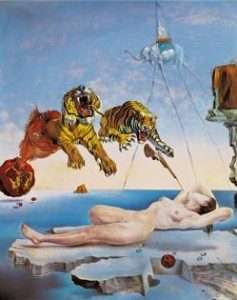
 Perhaps the most famous occurrences of the term ‘Shasu’ are those in the Nubian temples at Soleb and Amara West, in an inscription that may include the earliest attestation of the Tetragrammaton (four-letter name) of the Israelite god: YHWH (Yahweh). The temple built at Soleb by Amenhotep III was dedicated to Amun and celebrated the so-called ‘Sed festival’ (Heb Sed) of the king.
Perhaps the most famous occurrences of the term ‘Shasu’ are those in the Nubian temples at Soleb and Amara West, in an inscription that may include the earliest attestation of the Tetragrammaton (four-letter name) of the Israelite god: YHWH (Yahweh). The temple built at Soleb by Amenhotep III was dedicated to Amun and celebrated the so-called ‘Sed festival’ (Heb Sed) of the king.
The equating of the Shasu with the biblical Israelites might be further supported by a text of Ramesses II (c.1279-1213 BC) – the pharaoh often associated with the Exodus – found at Abu Simbel:
He who brings Nubia to the north, the Asiatics to Nubia; he has placed the Shasu in the land of the west; he has established Libya on the hills, filling the fortresses which he has built with the plunder of his powerful arm.
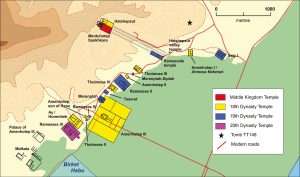
We know where Tutankhamun’s temple should be, because royal mortuary temples of the Eighteenth Dynasty ran in sequence along the edge of the desert, from Hatshepsut in the north, through Thutmose III, Amenhotep II, Thutmose IV, Amenhotep III, to that of Ay and Horemheb in the south.

"I had wanted to visit the sites linked to the Soleb Lions (also known as the ‘Prudhoe Lions’) at the British Museum ever since childhood. I would hold my grandfather’s hand as we stood and playfully growled at these two realistic-looking red granite lions. The lions had been moved at least once in antiquity – along with six black granite rams – to Gebel Barkal in Sudan by the kings of Kush. They had originally been carved during the reign of Amenhotep III for his Temple of Amun, located between the Second and Third Nile Cataracts at Soleb. Various inscriptions had been added to them during the reigns of Amenhotep IV, Tutankhamun, Ay, and the Meroitic king Amanislo (the Ethiopian king Amonasro in Verdi’s opera Aïda). It is widely believed to be Amanislo (c.260-250 BC) who moved them from Soleb to Gebel Barkal." 'Rested'?
This text might be taken literally to imply that imperial Egypt employed a policy of forced deportations of conquered peoples from their homeland to other parts of the Egyptian empire, similar to that carried out by the Babylonians. Further, foreign peoples are known to have been brought to Egypt as prisoners of war during the empire-building period of the New Kingdom, especially the children of foreign rulers, who were used as hostages. Conversely, the meaning might also be simply symbolic: the term ‘Shasu’ used as a representative enemy of the east, and their supposed forced movement westward simply representative of Ramesses II’s potential power over them. However, it is possible that colonies of Shasu may have been set up in Egypt under Ramesses II, since the Shasu did later become mercenaries in the army of Ramesses III. Relevant place names in Egypt, such as Pen-Shasu, may refer to military colonies inhabited by Shasu mercenaries and their families, who must have lived as simple agriculturalists when not on active service...
Hostage to Fortune: an action or statement that could create problems for you later.
The original hostages to fortune were a man's family, the allusion being to Francis Bacon's essay on marriage ( 1625 ): ‘He that hath wife and children hath given hostages to fortune’. an action which may cause you great trouble in the future: Are you really sure you want to know who your real mother is?
Continued: Further, considering all known references in Egyptian texts, the term Shasu is most often accompanied by the term T3, ‘the land of…’, maybe referring to the name of the geographical location, rather than to a people who might be called Israel(ites). Indeed, where ‘Shasu’ is present in the hieroglyphs, it is most frequently accompanied by the determinative for a geographical location, rather than that for a people.
The Egyptian text on the late 13th century BC papyrus called Anastasi VI refers to:
[the transfer of] Shasu tribes… in order to keep them alive and in order to keep their cattle alive.
Side note: Gog in the land of Magog.

Shepherd Kings?

“Most certainly, I tell you, one who doesn’t enter by the door into the sheep fold, but climbs up some other way, is a thief and a robber."
Continued: Hence, this text provides further clear evidence that the Shasu were pastoralists, permitted to enter the eastern Egyptian delta region so they could feed their flocks. Some people have drawn parallels with the Old Testament text from Genesis 42-45, which refers to the sons of Jacob taking their flocks to Egypt in the time of drought and famine.
A work in progress: ''Shakur originally named her son Lesane Parish Crooks. When he was a year old, she legally had Crooks’ name changed to Tupac Amaru Shakur. Tupac’s name means “shining serpent” in Inca. ''
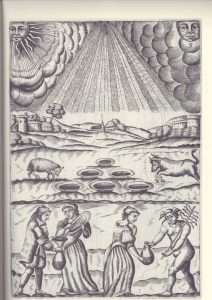
Venus/Mars. Taurus/Aries. Sheep decan?
''An avid reader, Shakur was inspired to change her son’s name after something with a powerful meaning. According to a profile piece on the rapper and activist’s name on The Track Record, the first known Tupac Amaru was the last indigenous monarch of Inca. The second known person to carry the name was José Gabriel Condorcanqui, better known as Tupac Amaru II. He was an 18th-century Peruvian revolutionary of indigenous blood who led the largest indigenous uprising in Spanish American colonial history.''
New name?
Side note: ''The Inca's referred to gold as the 'sweat of the sun'...'' ['Pawn Stars' / 2020].
''In science Archimedes is said to have cried out ''i have found it'' after determining the means of finding the purity for GOLD.''
"Eureka" comes from the Ancient Greek word εὕρηκα heúrēka, meaning "I have found (it)", which is the first person singular perfect indicative active of the verb εὑρίσκω heurískō "I find".[1] It is closely related to heuristic, which refers to experience-based techniques for problem-solving, learning, and discovery.''

"The Young Sun god fought Saturn and vanquished him. Saturn is one of the names of 'Satan', the spirit of opposition, and creation myths all over the world preserve a memory of these events in the stories of Saturn oppressing Mother Earth and the Sun god then vanquishing the 'monster'. Saturn was banished to the outer limits, where he lay coiled around the cosmos like a great serpent with his tail in his mouth..." [Chapter entitled 'Mother Earth and Father Time' from the book 'The Sacred History' / J. Black]. Question. 'On the shoulders of giants'?
"Amenhotep, son of Hapu, renewed and in his own time used what Imhotep passed on, inscribing in monuments the proportions and functions particular to the current phase and his king's symbolic role. This referred to phases past and to come, for it reached its accomplishment with the generation of the royal Principle which ended the age of Amon and precluded the coming revelation. But this great individuals mission outlasted the temporal - for Imhotep and Amenhotep son of Hapu, are forever the two pillars of our wisdom." ['Her-Bak'].
Her-Bak = Horus face. Try ''face'' in relation to ''profile''.
A 'golden' one?
"Man contains the divine spark within him. Therefore the transcendent principles are always given human form. There is a subtle yet important distinction between this Egyptian practice and the Greek - which at first glance may seem similar. Greece cut the 'gods' down to human size and depicted them with typically ungodlike behaviour {'higher' of the lower?}. Egypt started with the concept of divine attributes within man. The gods are not brought down to earth, rather man is raised to the gods {'lower' of the higher and/or bottom up?}. And so, the transcendent gods, those who command creation itself - Tum, Atum, Ptah, Amon, Min {Ra in his generative role} - are always in human form." [Page 133 'Serpent in the Sky'. Excludes parenthesis].
"A seed sized portion of the inner stone of spiritual effort will transform enormous amounts of the leaden inertia we all encounter in our own souls." ['The Zelator'].
Saturn?
Try ''Created / Pro-created''. As a means....?
 Practical example {'synchronistic'?}: ''The newly formed group finished the obligatory concert schedule of the Yardbirds, but then went on to record their first self-titled debut album under their new name, Led Zeppelin. The name came from a comment made by Keith Moon of The Who, who once said the band would go down like a lead balloon.''
Practical example {'synchronistic'?}: ''The newly formed group finished the obligatory concert schedule of the Yardbirds, but then went on to record their first self-titled debut album under their new name, Led Zeppelin. The name came from a comment made by Keith Moon of The Who, who once said the band would go down like a lead balloon.''

''Well'' underneath?
A working one {i.e., apply the above {leaden} to get a 'hang' on the following: ''An archeologist for the National Trust, arrived in the village of Cerne Abbas. Setting off along a wooded path at the foot of Giant Hill, he carried in each hand a bucket loaded with excavation tools. Cerne Abbas, in a picturesque valley in Dorset, about three hours southwest of London, is an ancient settlement. At one end of the village, beneath a meadow abutting a burial ground, lie the foundations of what was, a thousand years ago, a thriving abbey. Close by is a spring-fed well named for St. Augustine, a monk who was sent by Rome in the sixth century to convert Britain to Christianity, and who became the first Archbishop of Canterbury. According to legend, he caused the spring to stream forth by striking the ground with his staff. Atop Giant Hill lies an earthwork, possibly dating from the Iron Age: a rectangular enclosure, known as the Trendle, that may have been a temple or a burial mound. The object of his interest was another mysterious man-made part of the landscape: the Cerne Giant, an enormous figure of a naked, armed man, carved into the chalk of the hillside.
''Etymology. From Middle English trendel (“wheel, roller”), from Old English trendel (“circle, ring”), a variant of Old English tryndel (“circle, ring”), from Proto-Germanic *trundilaz (“ring, hoop”), equivalent to trend + -le. Akin to Low German tründeln (“to roll”)..a large shallow round or oval usually wooden tub or trough.''
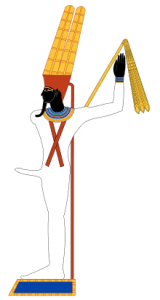
Egyptian Min or the Roman Pan.
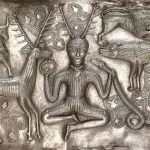
Seated on what?
Continued: The Cerne Giant is so imposing that he is best viewed from the opposite crest of the valley, or from the air. He is a hundred and eighty feet tall, about as high as a twenty-story apartment building. Held aloft in his right hand is a large, knobby club; his left arm stretches across the slope. Drawn in an outline formed by trenches packed with chalk, he has primitive but expressive facial features, with a line for a mouth and circles for eyes. His raised eyebrows were perhaps intended to indicate ferocity, but they might equally be taken for a look of confusion. His torso is well defined, with lines for ribs and circles for nipples; a line across his waist has been understood to represent a belt. Most well defined of all is his penis, which is erect, and measures twentysix feet in length. Were the giant not protectively fenced off, a visitor could comfortably lie down within the member and take in the idyllic vista beyond.
'Fire' and water.
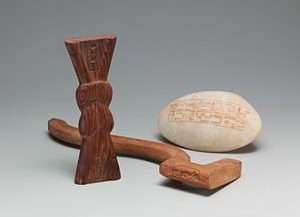
Wood/stone as a means....? New name?
Side note: ''Quartz is made of the two most abundant chemical elements on Earth: oxygen and silicon. Atoms of oxygen and silicon join together as tetrahedrons (three sided pyramids). These stack together to build crystals. Billions of tetrahedrons are needed to build even a small crystal.''
''Most quartz forms in either igneous rocks or environments with geothermal waters. In igneous rocks, quartz forms as magma cools. Like water turning into ice, silicon dioxide will crystallize as it cools. Slow cooling generally allows the crystals to grow larger.''
Continued: ''In April, a little more than twelve months after the National Trust’s excavation of the giant, Phillip Toms, the University of Gloucestershire scientist, finished his analysis, and the results were not what anybody had expected: the figure was neither ancient nor modern in origin but, rather, was created in the murky centuries in between. The sample taken from the deepest layer of the giant dated from between 700 and 1100 A.D., most likely near the midpoint of that range, around the tenth century.
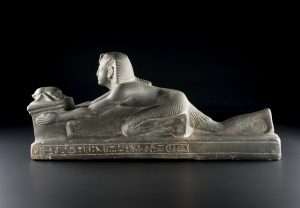
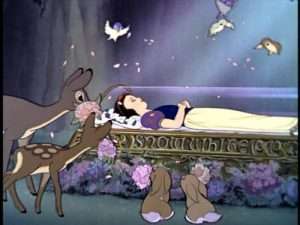
Siberia means ''sleeping land.'' 'North' to enlarge.
Mike Allen, the snail specialist, acknowledged that optically stimulated luminescence was a more definitive test than his own. He was astonished by the news that the giant is a late-Saxon or early-medieval creation. “No one, in any of the academic arguments and discussions and meetings and publications, ever considered him to be that date,” he told me. “It shows that we, as archeologists, are fickle and can be wrong.” The latest evidence also suggested that the figure, after being scraped into the chalk hillside, had at some point become overgrown, and remained that way for decades or even centuries, until it was re-dug. During this interregnum, the giant would have been detectable only as a shadow on the hillside, occasionally legible in certain conditions of light and vegetation growth. “He went to sleep,” Allen said.

 Side note: ''The meaning of other hill figures, such as the Long Man of Wilmington, in East Sussex, is more obscure. At two hundred and thirty-five feet, the Long Man is even taller than the Cerne Giant, and holds two staffs in his hands, like walking poles {'cedar'?}. The figure was long presumed to be ancient, but until recent decades no technologies existed for dating such an earthwork. Now they do, and analysis of the chalk on the hillside has revealed that the image was created in the mid-sixteenth century, making it a perplexing early-modern gesture rather than, say, a Romano-British cult figure or an Anglo-Saxon warrior.''
Side note: ''The meaning of other hill figures, such as the Long Man of Wilmington, in East Sussex, is more obscure. At two hundred and thirty-five feet, the Long Man is even taller than the Cerne Giant, and holds two staffs in his hands, like walking poles {'cedar'?}. The figure was long presumed to be ancient, but until recent decades no technologies existed for dating such an earthwork. Now they do, and analysis of the chalk on the hillside has revealed that the image was created in the mid-sixteenth century, making it a perplexing early-modern gesture rather than, say, a Romano-British cult figure or an Anglo-Saxon warrior.''


long or short?
''The Long Man of Wilmington or Wilmington Giant is a hill figure on the steep slopes of Windover Hill near Wilmington, East Sussex, England. It is 6 miles (9.7 km) northwest of Eastbourne and 1⁄3 mile (540 m) south of Wilmington. Locally, the figure was once often called the 'Green Man'.......''
Mindset?
N.B. Another Abbey/Priory near by.
Continued: ''The scientists had not yet presented their surprising revelations about the giant. But the vicar told me that any suggestion that the monks of Cerne Abbey would have been horrified by the presence of a naked figure on the hillside failed to comprehend the aspirations of the cloistered life. “The most difficult part of being a monk is coming to terms with yourself and your own existence,” he said. “Benedict said, ‘Remain in your cell, and your cell will teach you everything.’ You have to stay in your place, in your spot, and come to terms with who you are. So the link with the giant would be about being frank and honest about what we are.
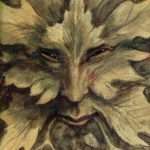
'Swallowed' to enlarge.
That is exactly what the giant is, and that is what the monks would have been trying to do.” Outside Still’s church, of which he is the fortysixth vicar in a lineage stretching back seven centuries, he urged me to look up at the building’s façade. Carved into the stone of the tower, which dates from the early sixteenth century, were several grotesque images of oversized figures eating smaller figures. “I had grotesques on my previous churches, but I’m not aware of images of giants eating people,” he said. He’d never noticed them before that afternoon, while waiting outside the church for our appointment, he told me. “You just walk past things, and you don’t see them,” he said.....Before leaving Cerne Abbas, I walked past the site of the former abbey to the foot of Giant Hill, and then started my own ascent up the well-worn path. The gradient was formidable: it was like climbing a long staircase.....''
Cronus to enlarge.
Refresher: ''Error runs down a plane while truth has to labouriously climb its way uphill.''

'Fire' rising up above the navel line - the middle of the human form. 'Heart'?
 And/or: "....Isis had to set out again on her travels, accompanied this time by her darker - skinned sister Nepthys. She transformed herself into a 'dog', the better to seek out and dig up the parts of the corpse. Eventually they assembled them all {i.e., the parts of Osiris buried by Seth - but without the penis, i.e., a 'fish' ate it} - and took them to the island of Abydos. There Isis bound the 'parts' together with a strip of white linen and brought just enough life back into her 'husband' so that he was able to 'impregnate' her. She was now carrying Horus - the future Sun god. Today Horus is known to many children as Jack, because, like Jack, the story of Horus's battle with the 'giant' Seth would also come down to us as a fairy tale. Because he would return to overthrow his gigantic uncle and rule as king of the gods, we know Horus as Jack the Giant Killer." [Same book, i.e., J. Black].
And/or: "....Isis had to set out again on her travels, accompanied this time by her darker - skinned sister Nepthys. She transformed herself into a 'dog', the better to seek out and dig up the parts of the corpse. Eventually they assembled them all {i.e., the parts of Osiris buried by Seth - but without the penis, i.e., a 'fish' ate it} - and took them to the island of Abydos. There Isis bound the 'parts' together with a strip of white linen and brought just enough life back into her 'husband' so that he was able to 'impregnate' her. She was now carrying Horus - the future Sun god. Today Horus is known to many children as Jack, because, like Jack, the story of Horus's battle with the 'giant' Seth would also come down to us as a fairy tale. Because he would return to overthrow his gigantic uncle and rule as king of the gods, we know Horus as Jack the Giant Killer." [Same book, i.e., J. Black].
'Fishers' of men.
Side note: Waterford. A natural harbour at the mouth of the 'Three Sisters'. S/E Ireland {Munster}. Oldest city in Ireland. Creators of crystal glass.

Circlet of flowers found in the location of the ''minds eye''?
And/or: ''Linen made from flax {i.e., a ''flowering plant''} - used in 'spinning and weaving' - linseed oil made from it. Belfast became its main 'harbour' in the UK.'' ['Britains Most Historic Towns: Belfast' / Alice Roberts].
Coincidence or a meaningful one?
Death/rebirth?
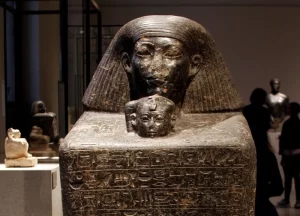 Side note: ''Ikebana (生け花, 活け花, "arranging flowers" or "making flowers alive") is the Japanese art of flower arrangement.[1][2] It is also known as kadō (華道, "way of flowers"). The tradition dates back to Heian period, when floral offerings were made at altars. Later, flower arrangements were instead used to adorn the tokonoma (alcove) of a traditional Japanese home.
Side note: ''Ikebana (生け花, 活け花, "arranging flowers" or "making flowers alive") is the Japanese art of flower arrangement.[1][2] It is also known as kadō (華道, "way of flowers"). The tradition dates back to Heian period, when floral offerings were made at altars. Later, flower arrangements were instead used to adorn the tokonoma (alcove) of a traditional Japanese home.
N.B. Heian = 50TH DYN. {'fifty'}.
'Half' of something?
Jubilee?

Tomar- Portugal. "washing room of the convent."
Analogy: ''This cleft in the rock north of the chapel of St. Catherines monastery has been associated with Exodus 33:22: 'While my glory passes by, i will put you into the cleft of a rock and cover you with my hand.'' [Day fourteen: Moses ascent of Sinai: Pilgrimage of Freedom: Lent 2023: Magdala].
'Thirtythree' / 'twentytwo' to enlarge.
Continued: ''Ikebana reached its first zenith in the 16th century under the influence of Buddhist tea masters and has grown over the centuries, with numerous distinct schools extant today. Ikebana is counted as one of the three classical Japanese arts of refinement, along with kōdō for incense appreciation and chadō for tea and the tea ceremony.''
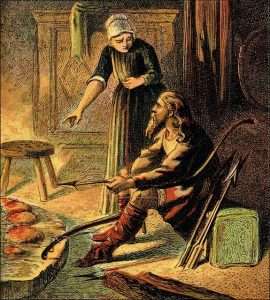
Leavened or UNleavened? Passover?
Side step: ''Boiling water is added to Camellia Sinensis leaves to make tea.'' ['The Chase'].
Boiling/Roasted as a means....

The Sycamore Gap Tree seen near by. 'Horizon'?
Side note: ''It was reportedly Lady Trevelyan, Sir Charles' wife, who coined the hostel's unusual and much-loved name, suggesting that once-brewed tea was a more acceptable drink than the stronger stuff found at the Twice Brewed Inn nearby.''
Continued: ''Camellia sinensis is a species of evergreen shrub or small tree in the flowering plant family Theaceae. Its leaves and leaf buds are used to produce the popular beverage, tea. Common names include tea plant, tea shrub, and tea tree (not to be confused with Melaleuca alternifolia, the source of tea tree oil, or the genus Leptospermum commonly called tea tree).
White tea, yellow tea, green tea, oolong, dark tea (which includes pu-erh tea) and black tea are all harvested from one of two major varieties grown today, C. sinensis var. sinensis and C. s. var. assamica,[3] but are processed differently to attain varying levels of oxidation with black tea being the most oxidized and green being the least.[4] Kukicha (twig tea) is also harvested from C. sinensis, but uses twigs and stems rather than leaves.''
'C'aroline to enlarge.
'GAP'.
Continued: ''At Caral {the oldest civilization in the America's} - cotton was produced - en masse - as a bartering tool. Many speculate as to the origin of the IDEA beyond ''fishing nets on the coast''.
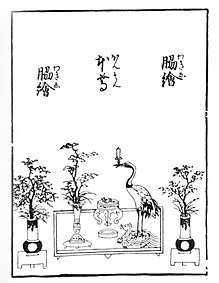
Long necked crane.
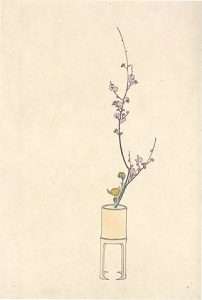
''Alcove'' = 'recess'?
And/or: At Caral {''1st civilization {cycle} of Americas''} 'bags' made of same material {i.e., plant} - found under foundations containing 'rocks' / 'stones'. A 'giant' of a man {Ysbaddaden?} found under altar chamber near top. All came to an end due to a NATURAL event. {'Blowing up History: Lost Pyramids of the Americas'}.
Question. What would represent the remedy of spirit 'fire' TO soul?
And/or: Rat and tree stump found under steps leading to top of similiar building but within the next cycle {i.e., Mayan/Aztec}.
Stumpfsinnschmausen? {Page 8 'Beelzebub's Tales to His Grandson' / Gurdjieff}.
Side step: The light from one of the earliest galaxies as quoted by B. Cox: ''in the uncharted oceans of space, ever deeper into the darkness...into the primordial past....near the dawn of time'' = GNz11:''One of the most distinct galaxies ever seen''. ['Universe' Series 1. Episode 5].
Should he not get out more?

The Lunar Year of the Rat begins the Chinese zodiacal calendar.
Bit of an anti-climax, dont you think? Even more so considering it looks like a RAT!
Coincidence or a .....?
As with the Horses Head and Cats Eye Nebula. Synchronicity at work?
Question. Does HIS subject make him religious?
 Side note: ''Twentyfour is the number of totality since it is connected with the 24 hours of day and night - although in antiquity the day was counted in 12 'double' hours of 120 minutes each....There is a German verse about time, a tree with twelve branches bearing thirty nests each symbolizes the year; since the day has 24 hours, each nest contains 24 eggs, and while a black and white rat are gnawing at the tree, time, in the form of a cat, finally devours everything. Then there is the familiar English song: Sing a song of sixpence, pocket full of rye. Four and twenty blackbirds baked in a pie!'' [Page 237 ' Mystery of Numbers'].
Side note: ''Twentyfour is the number of totality since it is connected with the 24 hours of day and night - although in antiquity the day was counted in 12 'double' hours of 120 minutes each....There is a German verse about time, a tree with twelve branches bearing thirty nests each symbolizes the year; since the day has 24 hours, each nest contains 24 eggs, and while a black and white rat are gnawing at the tree, time, in the form of a cat, finally devours everything. Then there is the familiar English song: Sing a song of sixpence, pocket full of rye. Four and twenty blackbirds baked in a pie!'' [Page 237 ' Mystery of Numbers'].
And/or: "The grape Merlot comes from the French for 'little blackbird'...." ['Imossible' S8 EP28].
Merlot (/ˈmɜːrloʊ/ MUR-loh) is a dark blue–colored wine grape variety, that is used as both a blending grape and for varietal wines. The name Merlot is thought to be a diminutive of merle, the French name for the blackbird, probably a reference to the color of the grape. Its softness and "fleshiness," combined with its earlier ripening, make Merlot a popular grape for blending with the sterner, later-ripening Cabernet Sauvignon, which tends to be higher in tannin.''
24 Apis bull sargophagi at Saqqara in Egypt.
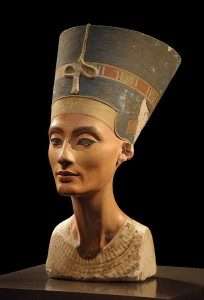
Flat topped crown? And/or: At Caral high society women {royal?} were identified with purposely shaped ''flat heads''. {'Blowing up History: Lost Pyramids of the Americas'}
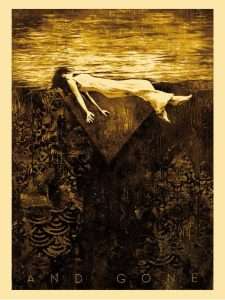
{C}lementine by Shepard Fairey. Inverted triangle?
''The Aztecs devoted themselves to the cult of the 'heart' - which they offer up to the sky-father - who makes crops grow, while Tezcatlipoca brings moisture or rain. Tezcatlipoca, as the 'weird' or other self {shadow} to Quetzalcoatl....The 'smoking mirror' is the gradual clearing 'mirror' of the unconscious or imagination....The brothers are inseparable and reversible; that Necessity begets, and contains, the seed of Reason, and vice versa....The 'divining mirror' of the soul that is smoked and must be cleared, is also a CRYSTAL used for divination, that clears to reveal a message or vision {archetypal one?}....As the smoking mirror clears, so image {Necessity} is given meaning {Reason}....The Aztecs made fire by reflecting the sun onto a dry tinder of cotton wool, using a polished metal surface. The soul then has two primary parts, the ascending , spiritual {Ka} soul, symbolized as the green or blue feathers of the plumed serpent, and the descending, grounding {Ba} soul, symbolized as the polished black obsidian stone that is a variant of the 'smoking mirror'....'' [Pages 237/8 'Fruits of the Moon Tree' / A. Bleakley].
'Feathers' to enlarge.
Black / white / red ones as a means...........
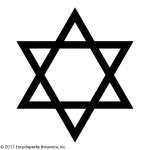
Which one is right side up?
''The name Aztec is derived from Aztlán (variously translated as “White Land,” “Land of White Herons,” or “Place of Herons”), an allusion to their origins, probably in northwestern Mexico.'' [Wiki].

Scroll = Book? Anything in there about the Southern Hemisphere?
From a different perspective: ''The pure act itself cannot be grasped; it is only its reflection which renders it perceptible, comparable and understandable or, in other words, it is by virtue of the reflection that we become conscious of it. The reflection of the pure act produces an inner representation, which becomes retained by the memory; memory becomes the source of communication by means of the spoken word; and the communicated word becomes fixed {'anchored'?} by means of writing, by producing the 'book'. The second Arcanum, the High Priestess, is that of the reflection of the pure act of the first Arcanum {The Magician} up to the point where it becomes ''book''. It shows us how Fire and Wind become Science and Book. Or, in other words, how Wisdom builds her house....One becomes conscious of the pure act of intelligence only by means of its reflection. We require an inner mirror....Water is required to reflect it.'' [Page 30 'Meditations on the Tarot'].
Side step: 'Fourteen' boats found {'buried'} not far from Abydos - covered in Limestone. 14 in relation to the 'moons' cycle. Half a 'journey'? ['Drain the Ocean: Egypt's Lost Wonders' / Channel 5].
Question. In what direction?
REFRESHER: ''Where good deeds are 'ships' in which to ride the waves.''
Continued: 'Orion the Giant'. All as a means...?
Greek equivalent = Odysseus. {Purpose of}. Enlarged elsewhere.
N.B. Both are connected {relationship?} - to 'dogs'. Higher/lower?
Continued: 'The Meaning of Hotep: A Nubian Study Guide' by Anpu Unnefer Amen.

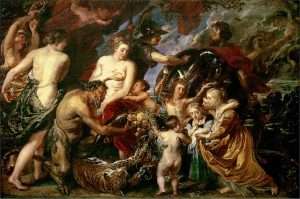
From a different perspective {i.e., opposite side on the SAME coin}: ''Minerva protecting Peace from Mars or Peace and War is a painting by Peter Paul Rubens. He produced it in London between 1629 and 1630, during a diplomatic mission from the Spanish Netherlands to Charles I of England. It is now in the National Gallery, London. It shows Minerva (goddess of war, wisdom and crafts) fighting off Mars, with the nude figure of the goddess Pax (commonly known as "Peace" in English) in the centre.'' 'Back to Back' to enlarge.
to "The word 'Hotep' was fashioned by the indigenous Africans of antiquity living along the Nile Valley who are commonly referred to today as Nubians, Kushites, Ethiopians, Egyptians and Sudanese. However, it was the civilisation of Nubia that gave birth to the language of the Metu Neter or 'Words of God', otherwise known as hieroglyphics {hiero = sacred} +{ glyphs = writings}. And it is in this language of Metu Neter that the word 'Hotep' has been preserved." Back cover, same book. Try ''logos''.
REFRESHER: "Many of the kings of the Old Kingdom Incorporated Mentu, the bull, in their names, and the age of Mentu ended with the Mentuhoteps 1-5. In the temple of Mentu consecrated to Mentuhotep 2nd - the king is shown as an old man. The word 'hotep' is generally translated as 'peace', but when translated to Schwaller de Lubicz's kind of translation it takes on a richer significance for htp is the reverse of Ptah, creator of form, and refers in this sense to realization or completion - of which 'peace' is but an aspect. Ptahhotep means 'realization of the work of Ptah'..." [Page 100 'Serpent in the Sky' / J. West].

Fire and water. Which and why?
And/or: Hotepsekhemwy - Wikipedia.
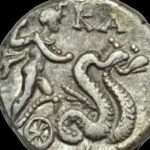
'Twin' powers?
The Horus name of Hotepsekhemwy is the subject of particular interest to Egyptologists and historians, as it may hint at the turbulent politics of the time. The Egyptian word "Hotep" means "peaceful" and "to be pleased" though it can also mean "conciliation" or "to be reconciled", too. So Hotepsekhemwy's full name may be read as "the two powers are reconciled" or "pleasing in powers", which suggests a significant political meaning. In this sense, "the two powers" could be a reference to Upper Egypt and Lower Egypt as well as to the major deities Horus and Seth.
''Westward leading, still proceeding''?
Side note: The Peace dollar is a United States dollar coin minted for circulation from 1921 to 1928 and 1934 to 1935, and beginning again for collectors in 2021. Designed by Anthony de Francisci, the coin was the result of a competition to find designs emblematic of peace. Its obverse represents the head and neck of the Goddess of Liberty in profile, and the reverse depicts a bald eagle at rest clutching an olive branch, with the legend "Peace". It was the last United States dollar coin to be struck for circulation in silver.

Made in the final 'seven' days of 1921 {'twentyone'}. RE-commissioned again in thirtyfour and 'thirtyfive'.
With the passage of the Pittman Act in 1918, the United States Mint was required to strike millions of silver dollars, and began to do so in 1921, using the Morgan dollar design. Numismatists began to lobby the Mint to issue a coin that memorialized the peace following World War I; although they failed to get Congress to pass a bill requiring the redesign, they were able to persuade government officials to take action. The Peace dollar was approved by Treasury Secretary Andrew Mellon in December 1921, completing the redesign of United States coinage that had begun in 1907.
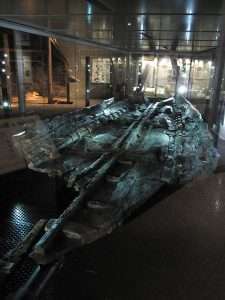
Dover boat. Decommissioned?
The public believed the announced design, which included a broken sword, was illustrative of defeat, and the Mint hastily acted to remove the sword. The Peace dollar was first struck on December 28, 1921; just over a million were coined bearing a 1921 date. When the Pittman Act requirements were met in 1928, the mint ceased production of the coins, but more were struck during 1934 and 1935 as a result of further legislation. In 1965, amid much controversy, the Denver mint struck over 316,000 Peace dollars dated 1964, but these were never issued, and all are believed to have been melted.
In 2021, the U.S. Mint produced a special 2021 issue Peace Dollar to celebrate the design’s 100th anniversary, with minting of the coins to continue from 2023 onwards....

'M'?
At age 34, de Francisci was the youngest of the competitors; he was also among the least experienced in the realm of coin design. While most of the others had designed regular or commemorative coins for the Mint, de Francisci's sole effort had been the conversion of drawings for the 1920 Maine commemorative half dollar to the finished design. De Francisci had had little discretion in that project, and later said of the work, "I do not consider it very favorably."[22]
The sculptor based the obverse design of Liberty on the features of his wife, Teresa de Francisci.[23] Due to the short length of the competition, he lacked the time to hire a model with the features he envisioned.[24] Teresa de Francisci was born Teresa Cafarelli in Naples, Italy. In interviews, she related that when she was five years old and the steamer on which she and her family were immigrating passed the Statue of Liberty, she was fascinated by the statue, called her family over, and struck a pose in imitation. She later wrote to her brother Rocco,
You remember how I was always posing as Liberty, and how brokenhearted I was when some other little girl was selected to play the role in the patriotic exercises in school? I thought of those days often while sitting as a model for Tony's design, and now seeing myself as Miss Liberty on the new coin, it seems like the realization of my fondest childhood dream.[23]
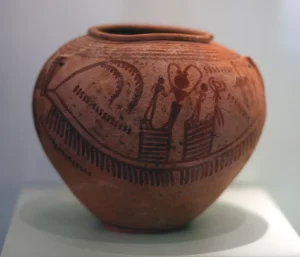
Snake forms?
Breen wrote that the radiate crown that the Liberty head bears is not dissimilar to those on certain Roman coins, but is "more explicitly intended to recall that on the Statue of Liberty".[11] Anthony de Francisci recalled that he opened the window of the studio and let the wind blow on his wife's hair as he worked.[23] However, he did not feel that the design depicted her exclusively.[14] He noted that "the nose, the fullness of the mouth are much like my wife's, although the whole face has been elongated".[14] De Francisci submitted two reverse designs; one showed a warlike eagle, aggressively breaking a sword; the other an eagle at rest, holding an olive branch. The latter design, which would form the basis for the reverse of the Peace dollar, recalled de Francisci's failed entry for the Verdun City medal. The submitted obverse is almost identical to the coin as struck, excepting certain details of the face, and that the submitted design used Roman rather than Arabic numerals for the date.[25]
Baker, de Francisci, and Moore met in Washington on December 15. At that time, Baker, who hoped to start Peace dollar production in 1921, outlined the tight schedule for this to be accomplished, and requested certain design changes. Among these was the inclusion of the broken sword from the sculptor's alternate reverse design, to be placed under the eagle, on the mountaintop on which it stands, in addition to the olive branch. Baker approved the designs, subject to these changes.[26] The revised designs were presented to President Harding on December 19. Harding insisted on the removal of a small feature of Liberty's face, which seemed to him to suggest a dimple, something he did not consider suggestive of peace, and the sculptor then did so."
'Sheath / scabbard' to enlarge.
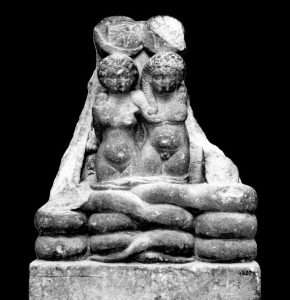
 Side note: Two serpents inscriptions found near the oldest harbour in the world - carved on large ''monumental stone blocks'' - 40 miles east of the Sphinx - a few miles away from the 'Reed Sea'. Those large stones used to seal the openings of caverns which contained among other things {i.e., vats/vases / and the OLDEST papyrus found anywhere in the world} - wooden ship remains. Chambers manmade with high ceilings - cube shaped - called ''underground boatyards'' - identified as belonging to Khufu {who is identified ''with the ram''} - simply because same inscription found on his pyramid at Giza - ''King Khufu brings 'it eats two snakes'. The narrator concludes that this is the translation of what was probably at the head of the ships prow. ['Blowing up History: Egypts Sunken Treasures' / 24.1. 21].
Side note: Two serpents inscriptions found near the oldest harbour in the world - carved on large ''monumental stone blocks'' - 40 miles east of the Sphinx - a few miles away from the 'Reed Sea'. Those large stones used to seal the openings of caverns which contained among other things {i.e., vats/vases / and the OLDEST papyrus found anywhere in the world} - wooden ship remains. Chambers manmade with high ceilings - cube shaped - called ''underground boatyards'' - identified as belonging to Khufu {who is identified ''with the ram''} - simply because same inscription found on his pyramid at Giza - ''King Khufu brings 'it eats two snakes'. The narrator concludes that this is the translation of what was probably at the head of the ships prow. ['Blowing up History: Egypts Sunken Treasures' / 24.1. 21].
Phoenix bird?
Kingdom of Lihyan? i.e., the ancient Dadan, an oasis settlement that became capital of same in the Northern Arabian desert. {Archaeology / March/April 2021}.
''Westward LEADING still proceeding - guide us to.....''.

Which ones the patriot?

R.I.P
A working example: ''We went west and settled in Baltimore.'' {i.e., a seaport/harbour}.
''Shakur originally named her son Lesane Parish Crooks. When he was a year old, she legally had Crooks’ name changed to Tupac Amaru Shakur. Tupac’s name means “shining serpent” in Inca.''
New Name?
''An avid reader, Shakur was inspired to change her son’s name after something with a powerful meaning. According to a profile piece on the rapper and activist’s name on The Track Record, the first known Tupac Amaru was the last indigenous monarch of Inca. The second known person to carry the name was José Gabriel Condorcanqui, better known as Tupac Amaru II. He was an 18th-century Peruvian revolutionary of indigenous blood who led the largest indigenous uprising in Spanish American colonial history.'' {internet}.

Remains of the statue of Ramesses the Great - found in the Nile Delta. Best foot forward?
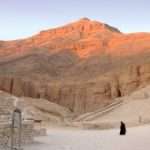 ''Many paths lead to the summit of insight; but it is essential to choose the right one. A person well versed in esoteric practices can say much about these paths that may seem peculiar to the uninitiated. For example, we may have advanced quite far along the esoteric way; we may be standing, as it were on the threshold, where soul eyes and spirit ears {Sais?} open. Then we are lucky enough to take a trip across the ocean. Seeing the sea calm or stormy, as the case may be, the scales fall from the eyes of the soul - and suddenly we are able to see....'' [ Page 93 'How to Know Higher Worlds' / Rudolf Steiner].
''Many paths lead to the summit of insight; but it is essential to choose the right one. A person well versed in esoteric practices can say much about these paths that may seem peculiar to the uninitiated. For example, we may have advanced quite far along the esoteric way; we may be standing, as it were on the threshold, where soul eyes and spirit ears {Sais?} open. Then we are lucky enough to take a trip across the ocean. Seeing the sea calm or stormy, as the case may be, the scales fall from the eyes of the soul - and suddenly we are able to see....'' [ Page 93 'How to Know Higher Worlds' / Rudolf Steiner].
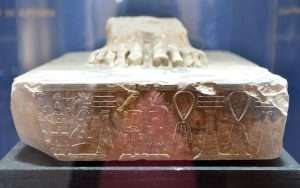
Foot of Djoser. Found at Saqqara. Next step UP. An idea by Imhotep. '144' / 'Theme' to enlarge.
''Working with such material is like lifting our gaze from the ground on which we stand to the infinite horizon. We come to sense a ''living world of silent thought activity'' around us. This vibrant, luminous, circling stream carries us into its creative 'glories'. The worlds wisdom lights up as a stream of thinking. This is the dawning experiece of the spirit, an experience of the Logos...'' [Page 225, same book].
Question. What about 'Soul'?
Mystery of Golgatha?
''Srinivasa Ramanujan has been described as a person of a somewhat shy and quiet disposition, a dignified man with pleasant manners. He lived a simple life at Cambridge. Ramanujan's first Indian biographers describe him as a rigorously orthodox Hindu. He credited his acumen to his family goddess, Namagiri Thayar (Goddess Mahalakshmi) of Namakkal. He looked to her for inspiration in his work and said he dreamed of blood drops that symbolised her consort, Narasimha. Later he had visions of scrolls of complex mathematical content unfolding before his eyes. He often said, "An equation for me has no meaning unless it expresses a thought of God." [Wiki].
['The Man Who Knew Infinity' / BBC 2].
Try ''zero''.

Day - 'light' seen through it?
''My soul has thirsted for the living god; when shall i come and appear before the face of god?'' [Page 91 'Mary Magdalene' / J. Ristine].
Face to face?
Side note: The setting sun {on the right shoulder - of the Khafre pyramid} - at the summer solstice. Betwixt Khafre/Khufu = the ''horizon'' symbol.
Continued: ''We feel a touch of the divine, although at first only gently and without understanding {shadow aspect?}. Before insight can be joined to experience we will need to pass through many experiences {Smith/Jones?} and confront numerous trials. Like a 'child' newly born into a strange and beautiful world {Tut , i.e., a 'golden' one?} - we must mature. Impressions must unite with understanding for meaning {eureka?} to arise.'' [Same page/book].
King Aha?
From a different perspective: ''Before we begin esoteric practice we at least stood firmly in the sense world and had a certain foothold in it. Now perhaps we can see behind it - but because we have not gained a firm hold in a 'higher' world, we begin to lose our way....and this may lead us to lose all sense of direction in life....'' [Page 124. Same book].
From the reign of Hotepsekhemwy onward it became a tradition to write the Horus name and the nebty name in the same way. It is thought that some kind of philosophic background affected that choice, since the Horus name reveals a clearly defined, symbolic meaning in its translation. Horus- and nebty names being the same might also indicate, that the Horus name was adopted after ascending the throne." Try ''philosophy'' its ancient meaning.


AND/OR: {as one example}: "One of the more intriguing debates in Egyptology during recent years has been the identity of the mysteries folk known as the Shemsu-Hor, variously translated as 'The Followers of Horus', 'The Companions of Horus', 'The Worshipers of Horus', 'Those who know the Path of Horus', or 'Those who Know the Secrets of Horus'. We encountered the Shemsu-Hor in an earlier chapter, where the Egyptians referred to them as 'divine' rulers in mythical, pre-dynastic times...enlightened individuals, initiates in the science of astronomy, whose purpose was 'to bring to fruition a great and cosmic blueprint'..." ['The Phoenix Solution' / A. Alford].
144 / Imhotep / Amenhotep to enlarge.
Something closer to the mark {as one example}: ''A hymn to Atum-Ra: I am the great Neter who has made himself, who creates his names, the master of the divine Ennead. What means this? It is Ra creating the names of his limbs, meaning the neters that are in his following came into existence''. [Page 162 'Sacred Science' / R. A. Schwaller de Lubicz].
'The fruit of ones labours'?
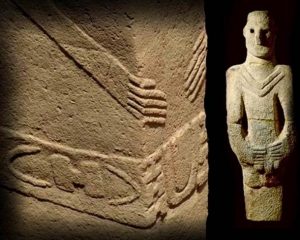
'Laughing'? Try ''fingers'' to enlarge.
AND/OR {in relation to ''astronomy''}: "Thus, the means to understanding 'spiritual' processes in the Hermetic system follows the ancient tradition that knowledge of the Sacred Astronomy - the appearances and movements of the planets and stars - is a prerequisite to gnosis. Egyptian symbolism is fundamentally triune, and cosmic families {Horus?} are drawn from multiples {families?} of 'three'...{Khufu/Khafre/etc?}. Alternatively, Hermetic teachings emphasize a septenary structure on all levels of natural life. In that system, the great scale of cosmic manifestations is symbolised by the classic seven planets, their 'rays' representing 'seven' planes of vibration in a universal order. The Hermetic Scale was believed to contain the master key to all organic life: 'There are seven wandering stars which circle at the threshold of Olympus, and among them ever revolves......

Uriah Heep? ''transforming fingers'' or just flexible ones?
.....unending Time. The 'seven' are these: night shining Moon, all sullen Saturn, the glad Sun, the fertile Venus, the bold Mars, the swift-wing Mercury, the first author {Logos?} of all births Jupiter. To those same stars is assigned the race of men, for we have in us {Horus ''in'' the horizon?} Moon, Jupiter, Mars, Venus, Saturn, Sun, and Mercury. Ours tears are Saturn, birth is Jupiter, speech is Mercury, anger is Mars, the Moon is sleep, Venus is desire, and the Sun is laughter...The divine function of three is also embedded in the sacred astronomy...{by way of} analogies and signatures - the Sages guide to making him a Magnus...." ['The Sacred Tradition in Ancient Egypt' / R. Clark].
Athene/Jupiter in relation to Homers Iliad....as a means...?
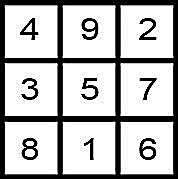
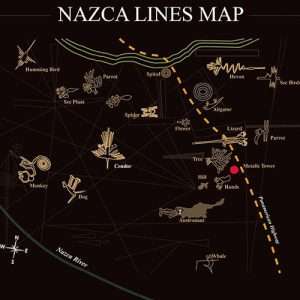 A work in progress? "Endorsement of the view that the planets visible to the naked eye were represented by the gods came about in an unusual way. After two years cataloguing the Leigh papers, we began, warily at first, to derive astronomical images from the narrative. One of the first came from a few words in Book 1 that record the return of the gods after a few days feasting in Ethiopia: 'The immortal gods came back in a body {at dawn} to Olympus, and Zeus led the way.' An image was created of Homer describing a time when the crescent moon and the five planets visible with the naked eye could be seen close together in the sky at dawn and rising towards the zenith of the heavens, the domain of Zeus. Our inquiry into whether such a conjunction of planets is rare or common were not at first successful, but eventually the happy chance of reading an article in an astronomy magazine showed that such a conjunction on the 5th march 1953 BC had been recorded in an ancient Chinese text and had so impressed Chinese astronomers that it was used as a new starting point for their calendar. That conjunction would also have been visible from Greece {Egypt?}....
A work in progress? "Endorsement of the view that the planets visible to the naked eye were represented by the gods came about in an unusual way. After two years cataloguing the Leigh papers, we began, warily at first, to derive astronomical images from the narrative. One of the first came from a few words in Book 1 that record the return of the gods after a few days feasting in Ethiopia: 'The immortal gods came back in a body {at dawn} to Olympus, and Zeus led the way.' An image was created of Homer describing a time when the crescent moon and the five planets visible with the naked eye could be seen close together in the sky at dawn and rising towards the zenith of the heavens, the domain of Zeus. Our inquiry into whether such a conjunction of planets is rare or common were not at first successful, but eventually the happy chance of reading an article in an astronomy magazine showed that such a conjunction on the 5th march 1953 BC had been recorded in an ancient Chinese text and had so impressed Chinese astronomers that it was used as a new starting point for their calendar. That conjunction would also have been visible from Greece {Egypt?}....

'Line of sight'.
In fact researchers Kevin D. Pang and John A. Banqert discovered that the five naked-eye planets had been in the sky for some days before that date, and on 26th February 1953 BC their alignment had been closer than at any time in the past six millennia. 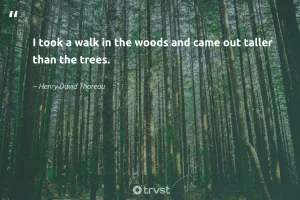 But extra significance was given to the conjunction when the new moon joined the planetary grouping at dawn on 5th March, thus adding the goddess Hera to the planets representing by Athene, Aphrodite, Poseidon, Ares and Apollo. Although they differ in literal expression, a number of translations of this event from the Iliad reflect similar astronomical images - That the gods returned in 'a line' or 'a cortege' or 'are forever all in one company'. A literal translation from the Greek texts says: 'From that {time} became the TWELFTH DAWN, then indeed to Olympus went all the ever-being gods, all at the same time and Zeus led. Whether the conjunction described by Homer is the same one that so influenced the Chinese may never be known, but so rare are such events that it is possible that it was, and had remained alive in popular memory in Greece {Egypt?} though being preserved in allegory." ['Homer's Secret Iliad'].
But extra significance was given to the conjunction when the new moon joined the planetary grouping at dawn on 5th March, thus adding the goddess Hera to the planets representing by Athene, Aphrodite, Poseidon, Ares and Apollo. Although they differ in literal expression, a number of translations of this event from the Iliad reflect similar astronomical images - That the gods returned in 'a line' or 'a cortege' or 'are forever all in one company'. A literal translation from the Greek texts says: 'From that {time} became the TWELFTH DAWN, then indeed to Olympus went all the ever-being gods, all at the same time and Zeus led. Whether the conjunction described by Homer is the same one that so influenced the Chinese may never be known, but so rare are such events that it is possible that it was, and had remained alive in popular memory in Greece {Egypt?} though being preserved in allegory." ['Homer's Secret Iliad'].
Side note: ''happy chance'' - coincidence or a meaningful one?

In the beginning was the word....
As is: "How may i encapsulate in a few words the story of the many things i discovered in this mysteries church? By a series of happy accidents {which, the modern occultists might well link with karma}, i was fortunately enough to discover that the orientation of the church of San Miniato al Monte was so arranged as to admit a ray of sunlight to fall once a year upon important hermetic symbols within the church...Similar practices i remembered being mentioned in the early literature of the mysteries. The temple of the cult of Serapis had been orientated astrologically, so that once a year a beam of sunlight fell upon the lips of the statue of the god." ['The Secret Zodiac'].
Follow the title of the book to shed 'light' {heliacal rising?} on the subject as a whole.
And/or: ''fortunate'' in relation to Venus/Jupiter?

"Head Jar"?
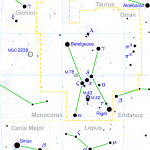
Hour glass?
"Serapis was depicted as Greek in appearance but with Egyptian trappings, and combined iconography from a great many cults, signifying both abundance and resurrection.
The Greeks had little respect for animal-headed figures, and so a Greek-style anthropomorphic statue was chosen as the idol, and proclaimed as the equivalent of the highly popular Apis.[a] It was named Userhapi (i.e. "Osiris-Apis"), which became Greek Sarapis, and was said to be Osiris in full, rather than just his ka (life force).
"The cult statue of Serapis that Ptolemy I erected in Alexandria enriched the texture of the Serapis conception by portraying him in a combination of both Egyptian and Greek styles.[5] The statue suitably depicted a figure resembling Hades or Pluto, both being kings of the Greek underworld, and was shown enthroned with the modius, a basket/jar / grain-measure, on his head, since it was a Greek symbol for the land of the dead. He also held a sceptre in his hand indicating his rulership, with Cerberus, gatekeeper of the underworld, resting at his feet. The statue also had what appeared to be a serpent at its base, fitting the Egyptian symbol of rulership, the uraeus."
"The mysteries were one brotherhood and they influenced one another much more than is realised, because men made pilgrimages and GRAFTED the ideas brought back on to their primitive cults, so that mystery cults are largely interchangeable. The traditions of Egypt will throw light on these cults." [Page 66 'The Arthurian Formula].
'Blood of the Vine'?
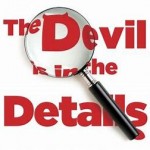

'Two triangles'?
Continued: "Her-Bak was led to a chamber with thick walls, isolated, where every precaution had been taken to maintain a constant temperature. Water dripped from graduated vessels on stone tables. ‘Look at the spiral design on the inside of the vessel,’ said the Astronomer, pointing to a clepsydra or water-clock. ‘Circular and horizontal markings tell the time by the water-level. Vertical markings shew fractions by a regular division that takes account of shape and volume, so that the time can be read at each minute down to its smallest unit of measurement by the water-level on each circuit of the spiral. But for watching the stars we use more precise instruments. We have emphasised the sky’s dual aspect, living and geometrical. The geometrical presents a strict logic that calls for mechanical aids.’ Her-Bak examined the clepsydra. “The symbol of a vessel that tells time is very fine, he said, ‘because an hour, wnwt, is a twelfth part of Nut’s body, by night as by day: Nut... nw, vessel, of the wnwt, the hours. I should never have seen this correlation when I was in the Peristyle. And my teachers would have found this word-play ridiculous.’

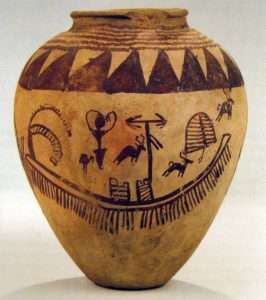
The Rump is part of the Arabian megaconstellation of the Lion (al-asad). It lies well south of the rest of the Lion, so it may have been a later addition to the figure.
"The symbol of the vessel {'vase'?} that tells time is very fine', he said...'because an hour {wnwt}, is a twelfth part of Nut's body, by night as by day: Nut {nw}, vessel, of the wnwt, the hours...Do you know what an hour is? Its the twelfth part of...This is the meaning of the phrase 'at his hour'...The destiny of the pharaohs themselves is watched from the beginning in the light of this exact science. Tonight you have been given several clues that have been withheld from many seekers. 'Why tonight'? asked Her-Bak...'Because it is the time to speak. Happy is the man for whom it is the time to hear."
A day came when the disciple noted for himself the effect of certain stellar situations on human disposition and activity. This gave the Master profound satisfaction and in agreement with the Sage he revealed to HerBak little by little the meaning of certain configurations: thus, the legend of the seven Hathors who attend births, bringing the’ new-born good or bad fortune, became for the attentive pupil a parable shewing how forces that flow from the conjunctions of Earth and Heaven affect men for better or worse. He saw it as a law of Necessity, exhibited in the connexion of the star-pattern in the band of the Zodiac with the hour of a man’s birth, Patient and profound examination of a large number of cases, in nature and those registered in the temple, changed hypothesis into conviction. Time passed. Her-Bak taught himself, and grew melancholy.
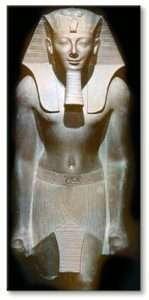
Happy or sad?

An eclipse of the moon drew a number of observers to the terrace. The Sage and Her-Bak, sitting apart with the Astronomer, listened while he described the progress of this phenomenon, dwelling on its disagreeable influence over man and vegetable. A profound sadness, growing with the moon’s reddening gleam, completed the disciple’s despair. ‘Fate ! What a frightful burden!’ he exclaimed....
Despair gripped Her-Bak’s heart. A sob choked him. Tears he tried in vain to keep back blinded him. The eclipse was now total and a sound of chanting to the beat of tabors and sistrums came sorrowfully through the night. He rose and shook his fists at the moon and the invisible singers. “What use are these shows? Can they hasten by one moment the return of light? All is written in the stars. All is in vain...
As you have just suffered the depressing experience of an eclipse, for the instinctive self is subject to them. But as soon as animal man begins to obey his higher self he only feels them as inclinations, no longer compulsions. The soul is free and can alter its course. But I repeat, the condition of independence is submission to the immortal consciousness.’ Her-Bak refused to accept hope without certainty.....‘Heart or reason, no matter! They are ruled by the stars. My instincts, my nature, my body... all is determined by number, by the stars, forces whose plaything Iam. Why give us the illusion that our heart is master? My heart is a puppet, a slave, like all else, of fate.’

 The Sage waited for the storm of primordial grief to abate. Then he lifted his grave voice and Her-Bak seated himself, trembling. ‘My son, there is error in what you have just said. Your heart, seat of enlightenment, sia. . . is it not here that your divine Ka dwells? But your Ka isn’t fate’s slave, for it is no part of nature. All else on Earth or in Heaven, even the solar disc that lights us, is part of nature, but the spirit-soul, like divine Râ, is not. If the spark becomes conscious in your humanity it grows into a vital germ and through this, if you let it govern the animal-human in you, you will be master of your fate. The soul is not subject to the stars.’ ['Her-Bak: Egyptian Initiate']. Try ''Sais'' to {begin?} a journey.
The Sage waited for the storm of primordial grief to abate. Then he lifted his grave voice and Her-Bak seated himself, trembling. ‘My son, there is error in what you have just said. Your heart, seat of enlightenment, sia. . . is it not here that your divine Ka dwells? But your Ka isn’t fate’s slave, for it is no part of nature. All else on Earth or in Heaven, even the solar disc that lights us, is part of nature, but the spirit-soul, like divine Râ, is not. If the spark becomes conscious in your humanity it grows into a vital germ and through this, if you let it govern the animal-human in you, you will be master of your fate. The soul is not subject to the stars.’ ['Her-Bak: Egyptian Initiate']. Try ''Sais'' to {begin?} a journey.
12x12?
A lunar eclipse is an astronomical event that occurs when the Moon moves into the Earth's shadow, causing the Moon to be darkened.[1] Such an alignment occurs during an eclipse season, approximately every six months, during the full moon phase, when the Moon's orbital plane is closest to the plane of the Earth's orbit.
This can occur only when the Sun, Earth, and Moon are exactly or very closely aligned (in syzygy) with Earth between the other two, which can happen only on the night of a full moon when the Moon is near either lunar node. The type and length of a lunar eclipse depend on the Moon's proximity to the lunar node.[2][3]

The Lunar Year of the Rat begins the Chinese zodiacal calendar. 'Spots and stripes'?
 When the Moon is totally eclipsed by the Earth (a "deep eclipse"),[4][5] it takes on a reddish color that is caused by the planet when it completely blocks direct sunlight from reaching the Moon's surface, as the only light that is reflected from the lunar surface is what has been refracted by the Earth's atmosphere. This light appears reddish due to the Rayleigh scattering of blue light, the same reason sunrises and sunsets are more orange than during the day.
When the Moon is totally eclipsed by the Earth (a "deep eclipse"),[4][5] it takes on a reddish color that is caused by the planet when it completely blocks direct sunlight from reaching the Moon's surface, as the only light that is reflected from the lunar surface is what has been refracted by the Earth's atmosphere. This light appears reddish due to the Rayleigh scattering of blue light, the same reason sunrises and sunsets are more orange than during the day.
Unlike a solar eclipse, which can only be viewed from a relatively small area of the world, a lunar eclipse may be viewed from anywhere on the night side of Earth. A total lunar eclipse can last up to nearly two hours, while a total solar eclipse lasts only a few minutes at any given place, because the Moon's shadow is smaller. Also, unlike solar eclipses, lunar eclipses are safe to view without any eye protection or special precautions.
And/or: ''However, we all know that white light must have its twin or balancer in shadow. This is the menstrual rhythm of the black goddesses - the new moon. The value of this rhythm in the cosmic sense is Necessity - pathologising and wounding in psyche and substance. Here is the raw, open and unpredictable Dionysian current, the Romantic in culture. In alchemical lore this is the black of the dark moon and eclipsed moon {hidden or concealed light of the sun}. The hidden masculine rises on the outer feminine as recognition by the woman of the inner husband, other lover, inner-child or Red King: the animus....Here is the inspiration of death {daath?} as a teacher, but not of morbidity, for the potential 'child' that is as yet unborn - is reborn in an INNER-SENSE {in innocence}, as a deepening to fresh values.....'' [Page 254 'Fruits of the Moon Tree' / A. Bleakley].
Mary Magdalene 'touching the hem' of Jesus = animus/anima = naked / Garment/clothed link?
Side note: "The Fourth Branch is as rich a field as the Mabinogion hunter could wish for, in which the young sun-god suffers a small eclipse only to rise brighter on the morrow {dawn?} and perform more splendid deeds of 'valour'." [Page 89 'Mabon and the Mysteries of Britain' / C. Mathews].
Lunar nodes?

Hapi - a river god.
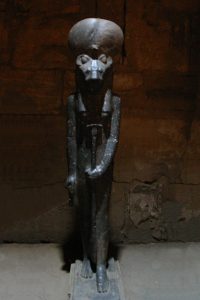
Karnak. Right or left foot - static/dynamic?
Refresher: "But none of these comparatively northern streams suit the stellar position of our Eridanus, for it is a southern constellation, and it would seem that its earthly counterpart ought to be found in a corresponding quarter = the Nile, the only noteworthy river that flows from south - north, as this is said to do when rising above the horizon...Caesius thought our Eridanus the sky representation of the Jordan, or of the Red Sea {or 'reed' sea?}, which the Israelites passed over - as on dry land..."
Wet/Dry?
Continued: "Old illuminated manuscripts added a venerable river god lying on the surface of the stream, with Urn, aquatic plants, and rows of stars; for all of which the Hyginus of 1488 substitutes the figure of a nude woman, with stars lining the lower bank. Bayers illustration is quite artistic, with reeds and sedge on the margins. The 'monster' Cetus often depicted with his fore paws, or flippers in the River." ['Star Names and Their Meaning' under Eridanus].
Try ''forequarter'' and/or its similarities. Hind quarter = the beginning of something?
And/or: ''nude/naked'' in relation to ''garment''. All as a means...?
Question. A mind set?
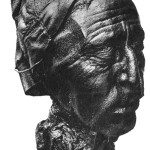
Tollund Man. Death/rebirth?
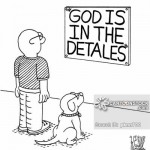 Something to ponder on {i.e.,coincidence or...?}: "The Heb Sed was celebrated approximately every thirty years, and archeoastronomers believe that this number represents the cycle of Saturn's return {29.5 years} to the same place in the sky. This is also an astrological cycle of death and renewal on some level of human experience, and tradition propounds that this cycle is the true chronometer of a single human generation {''120''? i.e.,4x3}. But even if these tenets of astrology are discounted, records reveal that the rituals were timed by the 'Maa' {seers of the temple}, those belonging to the tradition of the Solar priesthood who were observers and interpreters of stars. One of Imhotep's epithets was 'Chief of the Observers', a title of the High priest of Heliopolis who advised the Royal House on significant cosmic events such as the Saturn cycle of return." ['The Sacred Tradition in Ancient Egypt'].
Something to ponder on {i.e.,coincidence or...?}: "The Heb Sed was celebrated approximately every thirty years, and archeoastronomers believe that this number represents the cycle of Saturn's return {29.5 years} to the same place in the sky. This is also an astrological cycle of death and renewal on some level of human experience, and tradition propounds that this cycle is the true chronometer of a single human generation {''120''? i.e.,4x3}. But even if these tenets of astrology are discounted, records reveal that the rituals were timed by the 'Maa' {seers of the temple}, those belonging to the tradition of the Solar priesthood who were observers and interpreters of stars. One of Imhotep's epithets was 'Chief of the Observers', a title of the High priest of Heliopolis who advised the Royal House on significant cosmic events such as the Saturn cycle of return." ['The Sacred Tradition in Ancient Egypt'].
Refresher: "One of the points that require investigation, is the connection between the vision of the merkabah and the year, month, and day, and also the place of the 'vision'. A reason must be found for this 'connection', and we must not think that it is an indifferent element in the vision. We must consider the words: ''The heavens were opened'' {Ezek. i. 1}. They give the key to the understanding of the whole." [Page 259 'Guide for the Perplexed'].
Configuration of planets? If so - Would that be ''Morning stars'' / evening ones or nightly ones?

"Four Corners Monument, marking the only spot in the United States where four states (Arizona, Utah, Colorado, and New Mexico) come together."

Foundation Stone within the Dome of the Rock. A HOLE in its S/E Corner. ''Head of the Corner'' ?
A {working?} example: "The midway spot {'spotless'?} between Spica and Deneb was specially mentioned by Kazwini as being the Angle or Corner, of the Barker...Al Zajjaj, suggests ''Turn'' as in a bend in a line of stars. This interestingly is noticeable even to the casual observer {'naked'?}...Being the sides of the Kennel stretching off to the north and west..In Babylonia it marked the 19th ecliptic constellation; the Front or West, Shur {S/W?}, while individually it was the Star of the Hero and the reference point in their annuals of an observation of Saturn on the 1st of March, 228 BC was this planets first mention, that we have, recorded by Ptolemy...The Chinese knew it as the High Minister of State..." [Information on 'Virgo' within the book 'Star Names and Their Meaning'].
'Mans Search for Meaning' / Viktor Frankl.
Side note: "...each temple was aligned to a particular star that was connected to the 'divine' being of that sacred site: for example, Deneb, the brightest star in the constellation Cygnus, at Dendera; and the three stars in Orion's belt to the three pyramids of Giza." [Page 10 'The Union of Isis and Thoth' / Normandi Ellis and Nick Scully].
The Swan? Swan song? The end of what. The beginning of what?
 Continued: Something to ponder on: "Number 70 of the Welsh Triads names Modron as Urien of Rhedged’s wife, the mother of twins Owein and Morfudd. It names Afallach as her father. He ruled Ynys Afallach, the Isles of Avalon.
Continued: Something to ponder on: "Number 70 of the Welsh Triads names Modron as Urien of Rhedged’s wife, the mother of twins Owein and Morfudd. It names Afallach as her father. He ruled Ynys Afallach, the Isles of Avalon.
In another, more detailed version of the story Modron is a mysterious woman who appears at Rhyd y Cyfarthfa (The Ford of Barking). It gets its name because although Modron is invisible, the gather to bark at this mysterious apparition. In this version Urien of Rheged happens along and unlike other men who shun the place from fear, approaches the mystery woman and has his way with her. The Koch and Carey translation of this story (369) says: In Denbighshire [in North Wales], there is a parish that is called Llan-verrys, and its there that one will find Ryd-y-gyfarthfa [‘Ford of the Barking’]. And in former times, the dogs from the whole county used to come to that ford to bark, and no one dared to go to see what was the matter until Urien of Rhedged came. And when he came to the bank of the ford, he saw nothing but a young woman washing. And then the dogs ceased their barking. And Urien grabbed hold of the girl, and he had sexual intercourse with her. And then she said, ‘God’s blessing on the feet that brought you here.’
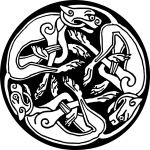
''Domesticated''?

Spotted?
‘Why?’ said he. ‘Because I was fated to wash here until I get a son by a Christian. And I am the daughter of the king of Annwvyn [the Un-world]. Come here at the end of the year and you will get the boy.’ And so he came and he got the son there and a daughter, none other than Owein son of Urien and Morfyd daughter of Urien. (The Onomastic Tale of Ryd-y-gyfarthfa).
The part about the therapeutic rape is obviously a male fantasy twist. Not only is he doing her a favour by raping her, he’s extremely potent too. Although I suppose that if you’re Modron, you’re probably programmed to conceive.
Images and inscriptions featuring a single Mother (see Matres below) turn up in Caerwent, in Wales, and Cirencester, which is near the Welsh border. The Caerwent one is a statue with ears of grain and fruit, which suggests a fertility or harvest goddess. (Alternatively, the ear of corn may be a palm leaf, which would link her to Victoria)."
'Horn of plenty'.
 "Caerwent (Welsh: Caer-went) is a village and community in Monmouthshire, Wales. It is located about five miles west of Chepstow and 11 miles east of Newport. It was founded by the Romans as the market town of Venta Silurum, an important settlement of the Brythonic Silures tribe. ...Caerwent was a centre for the Kingdom of Gwent after the Roman occupation. The name Caerwent translates from Welsh as "fort of Gwent", and the name Gwent derives from the Roman name Venta (Silurum). The English town name of Winchester has a parallel derivation, ultimately from the combination of the Latin words Venta, in that case, Venta Belgarum, and castra.[11]
"Caerwent (Welsh: Caer-went) is a village and community in Monmouthshire, Wales. It is located about five miles west of Chepstow and 11 miles east of Newport. It was founded by the Romans as the market town of Venta Silurum, an important settlement of the Brythonic Silures tribe. ...Caerwent was a centre for the Kingdom of Gwent after the Roman occupation. The name Caerwent translates from Welsh as "fort of Gwent", and the name Gwent derives from the Roman name Venta (Silurum). The English town name of Winchester has a parallel derivation, ultimately from the combination of the Latin words Venta, in that case, Venta Belgarum, and castra.[11]
 Caerwent remained an important centre, where the road between Gloucester and Caerleon met the north–south road from Shrewsbury, via Monmouth and Trellech, to the sea at Portskewett. Excavations at Caerwent have revealed remains and everyday objects from the post-Roman period. Metalwork, including elaborate penannular brooches and fastening pins, have been dated to the 5th–7th centuries. A large number of Christian burials, some stone-lined, dating from between the 4th and 9th centuries have also been discovered, both around the town's East Gate and close to the parish church.[12] It has been suggested that it may have been the birthplace of St. Patrick...
Caerwent remained an important centre, where the road between Gloucester and Caerleon met the north–south road from Shrewsbury, via Monmouth and Trellech, to the sea at Portskewett. Excavations at Caerwent have revealed remains and everyday objects from the post-Roman period. Metalwork, including elaborate penannular brooches and fastening pins, have been dated to the 5th–7th centuries. A large number of Christian burials, some stone-lined, dating from between the 4th and 9th centuries have also been discovered, both around the town's East Gate and close to the parish church.[12] It has been suggested that it may have been the birthplace of St. Patrick...
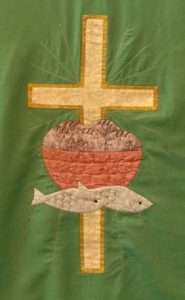
Bread/fishes.
Caerwent was founded by the Romans in AD 75 as a market town for the defeated Silures tribe. This is confirmed by inscriptions on the "Civitas Silurum" stone, now on display in the parish church.[4][better source needed] Large sections of the Roman town walls are still in place, rising up to 5 metres (16 ft) high in places. Historian John Newman has described the walls as: "easily the most impressive town defence to survive from Roman Britain, and in its freedom from later rebuilding one of the most perfectly preserved in Northern Europe."[5] In 1881, a portion of a highly intricate coloured floor mosaic or tessellated pavement, depicting different types of fish, was unearthed during excavations in the garden of a cottage."
'Horn of plenty'.
'Reindeer'.
Recall similar stories of individuals {male?} while out hunting end up being the 'hunted' - with their own dogs {i.e., lower natures}.

President for Disney?
'. Michael Wood discusses same {Ovid: The Poet and the Emperor}: within the most famous of his works 'Metamorphoses'. Can subject material give something extra?
within the most famous of his works 'Metamorphoses'. Can subject material give something extra?
Question. Was Ovid a member of one of those 'secret' clubs?
Mr Woods associates Ovids ''loss of himself'' in relation to his exile. Question. Try death/rebirth for a deeper meaning?
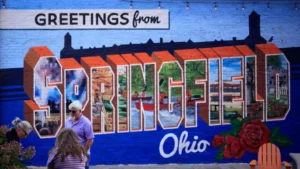

"Eating cats and dogs."
REFRESHER: {i.e., in relation to ''Kennet''}: "It was formerly known as the "Cunnit". The name is likely derived from the Roman settlement at the foot of the valley named Cunetio (within the large village of Mildenhall). The sound of the name seems to be a Celtic British dialect name, preceding the Roman occupation, like the majority of Roman town names in Britain. (The frequent Celtic stem "cun-" means "hound", cf modern Welsh ci, cwn, "dog".) ''
Ramsay Bolton? {Game of Thrones}.
Try Herod.
Apple of the eye?
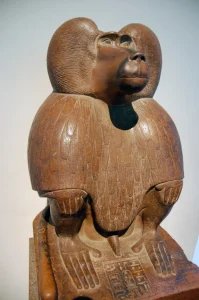 Side note: Something hinted at: "It does not seem likely that in daily life, the keepers of the kennels exercised their greyhounds and their monkeys {apes?} simultaneously. But the animal forces within man must be kept reined together. It is of no use to walk the dogs while the monkeys pulls apart the orchard."
Side note: Something hinted at: "It does not seem likely that in daily life, the keepers of the kennels exercised their greyhounds and their monkeys {apes?} simultaneously. But the animal forces within man must be kept reined together. It is of no use to walk the dogs while the monkeys pulls apart the orchard."
Akhenaten and son Tut? A ''gathering''?
Try bull / Saturn / orchard / horse / kennel / dog {'lower'} ford / Spica etc. Connect {'yoke'?} them. If only in the constellational sense of the word.
As above so below. A reflection - that when understood {mind set?} begins a 'journey'. Message's in the night sky?
'Virgin' link?
'Kennel' in relation to 'Manger'?
Twinkle, twinkle little star....?
''Star Street'' - Bethlehem ? N-S or S-N - as a means...?

Found inscribed on the backside of a 'boulder' at the Osirion at Abydos.
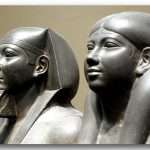 Something hinted at: {something learnt?}: "Now it is the 19th Arcanum of the Tarot which invites us to occupy ourselves quite especially with the ''star'' of Hermeticism in the heaven of intuition. What is this ''star''? The Zohar says: 'And god made the two great lights....originally when the Moon and Sun were in intimate Union, they shone with Equal luminosity. The names Jehovah and Elohim were then associated as equals - and the two lights were dignified with the same name: Mazpaz Mapaz….the two lights rose simultaneously and were of the same dignity. But the moon humbled herself by diminishing her light, and renounced her place of higher rank. From that time she has had no light of her own, but derives her light from the sun. Nevertheless, her real light is greater than that which she radiates here below; for a woman enjoys no honour save in conjunction with her husband. The great light {the sun} has the name Jehovah and the lessor light {the moon} has the name Elohim - {I.e., EL being the dominion of the day - IM being the dominion of the night - and HE in the middle being the remainder of the forces {the 'stars'}, participating in both dominions} - which is the last of the degrees and the 'close' of thought {YHV?}. Originally she was inscribed above among the letters of the sacred name {YHVH}….All of these things, although presented to us in mythological 'clothing', relate to the profound reality of the relationship of intelligence and wisdom, and their union - intuition....The spiritual moon is therefore the 'sun that shines at midnight'...." [Pages 540/1 'Meditations on the Tarot'].
Something hinted at: {something learnt?}: "Now it is the 19th Arcanum of the Tarot which invites us to occupy ourselves quite especially with the ''star'' of Hermeticism in the heaven of intuition. What is this ''star''? The Zohar says: 'And god made the two great lights....originally when the Moon and Sun were in intimate Union, they shone with Equal luminosity. The names Jehovah and Elohim were then associated as equals - and the two lights were dignified with the same name: Mazpaz Mapaz….the two lights rose simultaneously and were of the same dignity. But the moon humbled herself by diminishing her light, and renounced her place of higher rank. From that time she has had no light of her own, but derives her light from the sun. Nevertheless, her real light is greater than that which she radiates here below; for a woman enjoys no honour save in conjunction with her husband. The great light {the sun} has the name Jehovah and the lessor light {the moon} has the name Elohim - {I.e., EL being the dominion of the day - IM being the dominion of the night - and HE in the middle being the remainder of the forces {the 'stars'}, participating in both dominions} - which is the last of the degrees and the 'close' of thought {YHV?}. Originally she was inscribed above among the letters of the sacred name {YHVH}….All of these things, although presented to us in mythological 'clothing', relate to the profound reality of the relationship of intelligence and wisdom, and their union - intuition....The spiritual moon is therefore the 'sun that shines at midnight'...." [Pages 540/1 'Meditations on the Tarot'].
Side note: ''The moon has long held associations not only with the feminine cycle, but with intuition, imagination, and instinct, that hidden thread of knowing that defines logic and the rational mind. The moon is the unseen and indefinable, the yet to be, the becoming. To 'see' the light of the moon is literally to see things in a new light, where some details attain greater significance, while others are obscured. The moon has been 'worshipped' as a goddess for millennia, and the willow is a special tree to help understand her ways, her wisdom. The willow is sacred to the Welsh goddess Ceridwen for this reason, who rules over the moon. Her cauldron of transformation bestows poetic 'vision' {as does a study program}, otherwise known as psychic ability or prophesy. It is also sacred to the gods of eloquence - perhaps because of this ability to restore the flow of emotions and ideas. Apollo, Orpheus and Bellinus all recieved their eloquence from the willow tree....
'Theme' to enlarge.''
Refresher: 'The star of ones being is rising'.
Can any of the above help us to solve the question that such programs as The Sky at Night ask in relation to what that 'star' was that led the 'three' wise men to Israel.
Comet, supernova, shooting star, Sirius {i.e., heliacal rising}, or something else?
And/or: ''Mount Horeb is the mountain at which the Ten Commandments were given to Moses by Yahweh, according to the Book of Deuteronomy in the Hebrew Bible. It is described in two places as הַר הָאֱלֹהִים the "Mountain of Elohim". The mountain is also called the Mountain of YHWH.''
Sinai to enlarge. or She Who Loves Silence?
And/or: ''Elohim and Jehovah are not different names for the same entity but different entities. Elohim = a collective name for the seven spirits working together as the god of the sun. While Jehovah 'came into being' when one of these seven broke {Pleiades link?} away to defend the earth from Venus....Venus = mirror = 'to modify desire'....'' [Pages 95-97 / 220 / 328 'The Secret History of the World' / J. Black].
Question. How would that be represented within {say} a landscape or the night sky?
N.B. Nineteen 'castles' {observation points?] on the North Wall. {Game of Thrones}.
Post script: ''In other words how has it happened that human intelligence finds itself in a state of metaphysical eclipse?
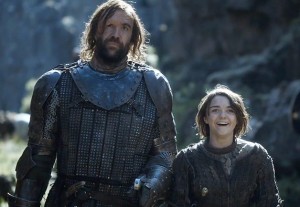
Little 'n' Large? Which is the greater/lessor {warrior?}. Do they 'unite' in the 8th? {Edited 22/1/19 }.
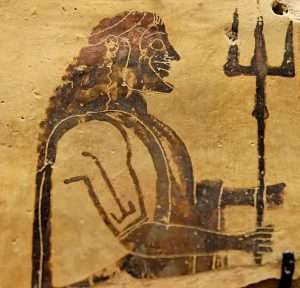
"If one has the power to endure the way of rebuke with great passion, and if his mind can control its fantasies, then he can ride {his mind} like a horse. He can control it as he desires, spurring it on to go forward, or reigning it to stop where he pleases. At all times his imagination remains subject to his will, not straying from its authority....This is truly a mighty 'warrior'...He is like Uriel, who constantly gazes at 'the light of god', delighted in gods Mysteries." [Page 84, 'Meditation and Kabbalah'].
Side note: Poseidon (/pəˈsaɪdən, pɒ-, poʊ-/; Greek: Ποσειδῶν) is one of the Twelve Olympians in ancient Greek religion and mythology, presiding over the sea, storms, earthquakes and horses. He was the protector of seafarers and the guardian of many Hellenic cities and colonies. In pre-Olympian Bronze Age Greece, Poseidon was venerated as a chief deity at Pylos and Thebes, with the cult title "earth shaker"; in the myths of isolated Arcadia, he is related to Demeter and Persephone and was venerated as a horse, and as a god of the waters. Poseidon maintained both associations among most Greeks: he was regarded as the tamer or father of horses, who, with a strike of his trident, created springs (the terms for horses and springs are related in the Greek language). His Roman equivalent is Neptune.Homer and Hesiod suggest that Poseidon became lord of the sea when, following the overthrow of his father Cronus, the world was divided by lot among Cronus' three sons; Zeus was given the sky, Hades the underworld, and Poseidon the sea, with the Earth and Mount Olympus belonging to all three.[2][5] In Homer's Iliad, Poseidon supports the Greeks against the Trojans during the Trojan War.
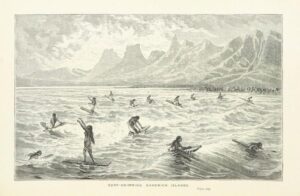 Continued: 'Archai: The Journal of Archetypal Cosmology: Saturn and the Theoretical Foundations of an Emerging Discipline' / G. Maxwell and B. Tarnas.
Continued: 'Archai: The Journal of Archetypal Cosmology: Saturn and the Theoretical Foundations of an Emerging Discipline' / G. Maxwell and B. Tarnas.
''The Saturn return also often coincides with a project that represents a persons ''first mature work, or serious work''. According to Stelzner this often entails ''a period of becoming a master, of getting disciplined...The Saturn return transit can also be a catalyst for ''integrating wisdom and getting grounded and stronger''..." Same book. 'See' it?
Question. Someones ''first mature work'' = Step pyramid only?

Ibex carving on Sperm Whale tooth.
Question 2. Cenotaph or tomb?
 And/or: Within that constellation of Virgo other 'titles' are King of the Desert / Left-hand Maintainer of Law / Child of the Waters / Plain and Even Way {wilderness years?} and concluding with: Syrma - according to Ptolemy - is designated as the star on the Train of the Virgins Robe...They formed the 13th manzil - 'The Covering' {''garment'' link?}...The Arabic equates it with the Tuft of the Lions Tail, as marked in the figure of the ancient Asad Lion, also ''Young Ibex''. The Arabs considered this the most fortunate of the lunar stations - as lying between the evils of the Lions teeth and claws on one side and the tail and venom of the Scorpion on the other - adding that the horoscope of the Prophet lay here, and that the date of the birth of Moses coincided with it."
And/or: Within that constellation of Virgo other 'titles' are King of the Desert / Left-hand Maintainer of Law / Child of the Waters / Plain and Even Way {wilderness years?} and concluding with: Syrma - according to Ptolemy - is designated as the star on the Train of the Virgins Robe...They formed the 13th manzil - 'The Covering' {''garment'' link?}...The Arabic equates it with the Tuft of the Lions Tail, as marked in the figure of the ancient Asad Lion, also ''Young Ibex''. The Arabs considered this the most fortunate of the lunar stations - as lying between the evils of the Lions teeth and claws on one side and the tail and venom of the Scorpion on the other - adding that the horoscope of the Prophet lay here, and that the date of the birth of Moses coincided with it."
''Car/Carriage''?
'Winged' Lion?
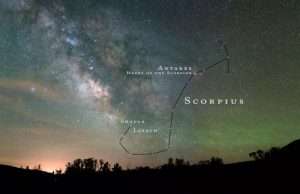
Scorpion King?
And/or: ''Another important star was the Great Chief Star. Which, to us, is known as Polaris or the North Star. The passing of certain stars were important to Pawnee ceremonies, festivals, and spirituality. The Pleiades and other star formations were important to them and their planting ceremonies. One of the most symbolic group of stars to the Pawnee were the Swimming Ducks. They were two bright stars that made up the tail and stinger of the constellation of Scorpio, Lambda Scorpii, and Upsilon Scorpii. When they were seen before sunrise, in the southeastern sky, the Pawnee saw them as a sign of spring and a time to prepare for their spring ceremonies. Ceremonies that took place around the time when the first thunders of the seasons were heard.''.
Side note: ''The Hyoid is the bone in the neck, that is sometimes called the tongue bone that supports the tongue.'' ['The Chase'].
''The hyoid bone (Lingual bone or tongue-bone) (/ˈhaɪɔɪd/[2][3]) is a horseshoe-shaped bone situated in the anterior midline of the neck between the chin and the thyroid cartilage. At rest, it lies between the base of the mandible and the third cervical vertebra.
Lower JAW bone?
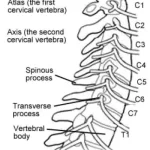
Unlike other bones, the hyoid is only distantly articulated to other bones by muscles or ligaments. It is the only bone in the human body that is not connected to any other bones nearby. The hyoid is anchored by muscles from the anterior, posterior and inferior directions, and aids in tongue movement and swallowing. The hyoid bone provides attachment to the muscles of the floor of the mouth and the tongue above, the larynx below, and the epiglottis and pharynx behind.[citation needed].......Its name is derived from Greek hyoeides 'shaped like the letter upsilon (υ).....''
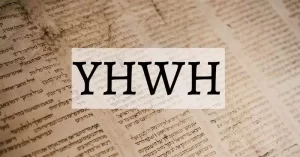
Seneh - a link to the ''Burning Bush''' mentioned ONCE in the Bible. As is the word ''Holy.''
''Upsilon (/ˈʌpsɪˌlɒn, ˈ(j)uːp-, -lən/, UK also /(j)uːpˈsaɪlən, ʊp-, -lɒn/;[1][2][3][4][5][6] uppercase Υ, lowercase υ; Greek: ύψιλον ýpsilon [ˈipsilon]) or ypsilon /ɪp-/[1] is the 20th letter of the Greek alphabet. In the system of Greek numerals, Υʹ has a value of 400. It is derived from the Phoenician waw ![]() ......The usage of Y in Latin dates back to the first century BC. It was used to transcribe loanwords from Greek, so it was not a native sound of Latin and was usually pronounced /u/ or /i/. The latter pronunciation was the most common in the Classical period and was used mostly by uneducated people. The Roman Emperor Claudius proposed introducing a new letter into the Latin alphabet to transcribe the so-called sonus medius (a short vowel before labial consonants), but in inscriptions, the new letter was sometimes used for Greek upsilon instead. Four letters of the Latin alphabet arose from it: and U , Y and, much later, V and W. In the Cyrillic script, the letters U (У, у) and izhitsa (Ѵ, ѵ) arose from it.
......The usage of Y in Latin dates back to the first century BC. It was used to transcribe loanwords from Greek, so it was not a native sound of Latin and was usually pronounced /u/ or /i/. The latter pronunciation was the most common in the Classical period and was used mostly by uneducated people. The Roman Emperor Claudius proposed introducing a new letter into the Latin alphabet to transcribe the so-called sonus medius (a short vowel before labial consonants), but in inscriptions, the new letter was sometimes used for Greek upsilon instead. Four letters of the Latin alphabet arose from it: and U , Y and, much later, V and W. In the Cyrillic script, the letters U (У, у) and izhitsa (Ѵ, ѵ) arose from it.
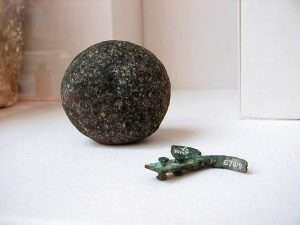
Dixon relics. Found in the shafts of the 'Queens' chamber.
In some languages, including German and Portuguese, the name upsilon (Ypsilon in German, ípsilon in Portuguese) is used to refer to the Latin letter Y as well as the Greek letter. In some other languages, the (Latin) Y is referred to as a "Greek I" (i griega in Spanish, i grec in French), also noting its Greek origin....In astrophysics and physical cosmology, ϒ refers to the mass-to-light ratio....Upsilon is known as Pythagoras' letter, or the Samian letter, because Pythagoras used it as an emblem of the path of virtue or vice.[13] As the Roman writer Persius wrote in Satire III: and the letter which spreads out into Pythagorean branches has pointed out to you the steep path which rises on the right....Lactantius, an early Christian author (ca. 240 – ca. 320), refers to this:
Gebel el Silsila.
For they say that the course of human life resembles the letter Y, because every one of men, when he has reached the threshold of early youth, and has arrived at the place "where the way divides itself into two parts," is in doubt, and hesitates, and does not know to which side he should rather turn himself.[15]
Side note: ''Though it is uncertain whether this name of God was used previously, most scholars point to YHWH first appearing in the Bible when God manifests Himself to Moses in the burning bush (Exodus 3). In Exodus 3:14, “God said to Moses, ‘I AM WHO I AM. This is what you are to say to the Israelites: “I AM has sent me to you.''
And/or: ''Only once in scripture is a characteristic of God mentioned three times, and that is His attribute of holiness. In Isaiah angelic beings thrice repeat this characteristic: 'Holy, holy, holy, is the LORD of hosts: the whole earth is full of his glory' (Isaiah 6:3b).''
''When the Bible calls something holy, it is not speaking of purity or righteousness. Rather, it is something “set apart” from everything else in order to do a job.''
Higher/Lower?
Jung's Philemon and/or Plato's Socrates?

Metal of the mind?
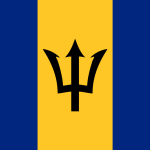
Flag of Barbados. ''Straight South.''?
Something extra: {something hinted at}: "YELLOW: Leo, the Lion. Leo is ruled by the Sun, whose colour is orange. Here is a seeming contradiction like that between the colour of Gemini and its ruler, Mercury. On the tree of life, too, the sphere of the sun is yellow. The thing suggested is an interchange between the mercurial and solar potencies, and this reminds us that Mercury is the ''metal'' with which alchemists work to produce the ''Stone'' which changes Saturn {lead} into gold {Sol, the sun}. [ Page 66 of the book by P. F. Case. Vol 1. From the chapter entitled 'Correlation of Sound and Colour'. Lesson six].
Gebel {Jebel} Barkal to enlarge.
Leo/Vigo? All as a means....?
Question. Someone else's first work?
"Solomon 'built' the temple. David designed the temple. But it was Moses who prepared the foundations." [From the book by K. Gest. Emphasis, this readers].
'Water from a rock'?
12x12?
Question. Was Moses Left or Right 'handed'. Or does it matter?

Navel?
Refresher: "In alchemy, the up/down triangles are symbols for 'fire' and 'water'. In Freemasonry, the triangle represents the spiritual, physical and psychological part of a person. The 'triangle' may have been an astrological chart at the time of King David's birth." [Page 48 'Pathways to the Zodiac' / E. Winstanley].
Refresher: "Achilles has a trio of fine horse...Two of the horses, Xanthus and Balius are 'immortal' and mark stars in the Milky Way. Pedasus is 'mortal' and, although said to be every bit as good as the immortal pair, his star is just outside the Milky Way. The configuration of these makes the familiar triangle of one of Homer's chariots." [Same book].

Head found UNDER the 'headless' Sphinx at Gobel-el-Silsila. A reversal of something?
Side note: "Statues of Chephren {Khafre} were found buried in pits dug into the floor of the Sphinx temple - one in the form of a Sphinx'' ['Serpent in the Sky'].
''UPSIDE DOWN''? Try 5:3
N. B. Opposite that ''most fortunate'' 'spot' is the river Eridanus {end of it?} - the river that is identified with the Jordan. That same river that Moses could not cross over. Coincidence or further material to work something out?
Any link to: {from part 2}: The Hebrews represented that same {concept?} THAT same {principle?} with those 12 stones in the sacred 'breastplate' together with what Urim and Thummim represent, i.e.,fate - positive and/or negative. One way or the other- depending on the individual.
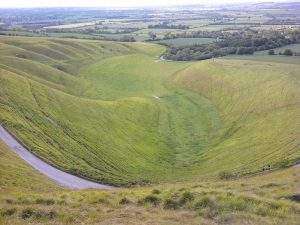
The Manger and Giants Stairway within the 'horseshoe' at The Uffington White Horse.
Side note: {something hinted at}: "Eridanus is an inconspicuous constellation, but on a clear night in midwinter, when the moon is absent from the sky, the stream can be traced without difficulty, spreading out like a great horseshoe south and west of the well known constellation of Orion." ['Star Lore' / W. T. Olcott]. Try ''horseshoe''. Semi-circle? S/W?
Question. Which foot?
Horseshoe Lake: Cahokia culture. 'The Mound Builders'. Mississippi flood plain.1st known CITY in N. America. 'The Dawn of a new culture. Monks Mound {pyramid shape} made of different soils as opposed {to say} Silbury Hill - made of chalk. One a beginning the other an end {of a cycle?}. Began 1000AD. Soil carried in 'baskets'. Dug out with 'flint'.
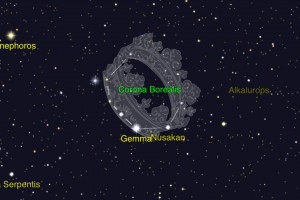
The Northern Crown. Semi-circular in shape. S/E?
"It was of course, a normal procedure for late mediaeval buildings to be constructed according to what are now called 'foundation charts', reflecting astrological principles. The evidence for this 1207 chart would suggest however, that the use of these astrological principles is a little earlier than is generally realised...The planetary tables for the year 1207 show that on 28th May there was a momentous event in the heavens. On the morning of that day, as the sun rose over Florence, there was a ''gathering'' of no fewer than five planets in the constellation Taurus. In mediaeval times such a phenomenon was called a 'satellitium' , though the tendency in modern times is to use the word 'stellium' instead. On that day, the Sun, Moon, Mercury, Venus, and Saturn were all gathering within a few degrees of each other in the asterism of the Bull. This particular stellium in Taurus is very rare, and will not be repeated for thousands of years...." ['The Secret Zodiac'].
Try ''Gathering'' IN relation to those {principles?}, that those 'planets' REPRESENT. If only in defining a 'mind set' {foundation?}. Start in Part 1.
''Taurus and Libra is 'ruled' by Venus." As a means...?
Hapi

 Hapi (Hep, Hap, Hapy) was a water and fertility god who was popular throughout Ancient Egypt. It is thought that his name was originally the predynastic name for the Nile. however, by the Dynastic period the Nile was known as "iterw" ("the river") and the word was used to refer to the god of the Nile (the name "Nile" derives from the Greek word "Neilos" which was a corruption of the Egyptian word "nwy", meaning "water"). He was worshiped throughout Egypt, but was particularly popular around Aswan and Gebel El-Silisila.
Hapi (Hep, Hap, Hapy) was a water and fertility god who was popular throughout Ancient Egypt. It is thought that his name was originally the predynastic name for the Nile. however, by the Dynastic period the Nile was known as "iterw" ("the river") and the word was used to refer to the god of the Nile (the name "Nile" derives from the Greek word "Neilos" which was a corruption of the Egyptian word "nwy", meaning "water"). He was worshiped throughout Egypt, but was particularly popular around Aswan and Gebel El-Silisila.
 SIDE NOTE: "Oh waters, you are my friend./ You carry me in your bosom. You fill me with strength. You surround me, you guide me. Oh waters, Oh waters...These power songs remind shamans...." ['Secrets of Shamanism'].
SIDE NOTE: "Oh waters, you are my friend./ You carry me in your bosom. You fill me with strength. You surround me, you guide me. Oh waters, Oh waters...These power songs remind shamans...." ['Secrets of Shamanism'].
A ''reminding'' of what?
Follow the title of the book to 'see' it from a different perspective. Yet still containing those universal constants. Question. What does that imply?
Hapi was the patron of Upper and Lower Egypt. In this capacity he was described as twin deities named Hap-Reset (Upper Egypt) and Hap-Meht (Lower Egypt). These deities were depicted either pouring water from a jug (representing the innundation) or tying together the heraldic plants of Upper and Lower Egypt (the papyrus and the lotus respectively) in a knot which resembled the hieroglyphic word "sema" ("joined"). This role, together with his connection with the Nile and the innundation, made him one of the most popular and powerful deities of Ancient Egypt and yet no temple {pillar?} has been discovered which was specifically dedicated to him.
One of the oldest references to Hapi is in the Pyramid Texts of Unas. Hapi (here called Hep) is linked to the Nome of Kenset (including the First Cataract and the islands of Elephantine, Sahel, Philae, and others) and to (Wepwawet (the opener of the ways).

'T' ?
 The texts implore Hapi and Wepwawet send a good innundation. According to myth, the river flowed from Hapi´s home (near the First Cataract) through the heavens and the land of the dead before emerging from a cave somewhere in the mountains. The innundation was referred to as the "Arrival of Hapi" and during the flood the Egyptians would place statues of the god in the towns and cities so that they could implore his assistance at that time. They would throw offerings into the river at places sacred to the god in order to ensure the innundation was not too low (leaving insufficient water for the crops) or too high (risking the destruction of their mud-brick homes).
The texts implore Hapi and Wepwawet send a good innundation. According to myth, the river flowed from Hapi´s home (near the First Cataract) through the heavens and the land of the dead before emerging from a cave somewhere in the mountains. The innundation was referred to as the "Arrival of Hapi" and during the flood the Egyptians would place statues of the god in the towns and cities so that they could implore his assistance at that time. They would throw offerings into the river at places sacred to the god in order to ensure the innundation was not too low (leaving insufficient water for the crops) or too high (risking the destruction of their mud-brick homes).
The gods Khnum, Anqet and Satet were the guardians of the source of the Nile who ensured that the correct amount of silt was left by the waters, but Hapi controlled the water itself. He was also associated with the Delta and given the epithet "Lord of the Fishes and Birds of the Marshes".
''Tower of the fish''?

''Hung''?
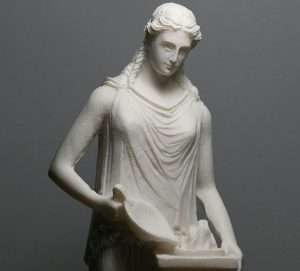
Hestia. Gravy train? And/or: 'Scullion' may refer to the Irish surname derived from 'Ó Scolláin' meaning 'descendant of the/a scholar'...'' Question. Who else was kitchen MAID?
Side note: ''High winds. Torn clouds race across the sky. The gravestones moan; the trees seeth, flinging tattered rooks into the air {crows?}; squalls of rain batter the window pains. The GREEN is shrewn with leaves and twigs. Tim, Nora and i attempt a game of cards in the kitchen {'13' link?}, but end up sitting in silence, watching the 'fire' roar...Yesterday the peacocks tail filled the cellar {of the mind?} with its rainbow, stretching like Gods covenant between Above and Below. There was a subtle perfume of lilies {'nose' link? i.e., smell as opposed to say sound, i.e., ear}. The Hermetic glass is like a double prism that divides the world into its constituent hues and returns them to the single white light that is their source and goal. This is the mystery of multipilicity....'' [Page 338/9 'Mercurius' / P. Harpur].
And/or: George VI: ''Lilibet is my pride. Margaret is my joy.''
'Cassiopeia' to enlarge.
 Continued: As a god of water, he was often associated with Nun (the personification of the primeaval waters of chaos in the Ogdoad theology from Heliopolis) and was described as the husband of Naunet (Nun´s wife and female aspect). Because the sun god (Ra or Atum) emerged from the waters of Nun on the first day of creation, Hapi was sometimes considered to be the father of the sun god and therefore the father of all life forms. It is probably because of these solar connections that Akhenaten did not reject hapi along with Amun and the majority of the other gods, instead describing him as an incarnation of The Aten
Continued: As a god of water, he was often associated with Nun (the personification of the primeaval waters of chaos in the Ogdoad theology from Heliopolis) and was described as the husband of Naunet (Nun´s wife and female aspect). Because the sun god (Ra or Atum) emerged from the waters of Nun on the first day of creation, Hapi was sometimes considered to be the father of the sun god and therefore the father of all life forms. It is probably because of these solar connections that Akhenaten did not reject hapi along with Amun and the majority of the other gods, instead describing him as an incarnation of The Aten
Side note: "The manifestation of Atum-Ra between the twin peaks of the mountain of the horizon." [Picture of same, page 256 'Temple of the Cosmos].
'Mountain' / 'cave' ?
A working example {and/or work in progress}: ''My soul has thirsted for the living god; when shall i come and appear before the face of god?'....Mary Magdalene comes face to face with Jesus. It is above all a transforming encounter....She stands in a garden, reminiscent of the Garden of Eden, yet she is here at the foot of Mount Arbel, in her home town of Magdala.'' [Pages 91/136 'Mary Magdalene: Insights from Ancient Magdala' / J. Ristine].
Spirit and soul. Which and why?
Continued: He was also associated with Osiris because of his link to the Nile and fertility. As a result, Isis was sometimes considered to be his female counterpart or his wife. The Pyramid Texts make it clear that many of the ancient goddesses (for example Mut) were linked with Hapi as aspects of Isis. He was also the husband of Nekhebet in Upper Egypt and Wadjet in Lower Egypt, both goddesses were at times associated with Isis.
Hapi was depicted as a plump man with large breasts and blue or green skin wearing the false beard of the pharaoh. The female breasts and his skin colour are a reminder that he is a fertility god, while the false beard reaffirms his link to the pharaoh. As the patron of Upper and Lower Egypt and so was often depicted as twin deities; Hap-Reset who wears the papyrus of Upper Egypt on his headdress and Hap-Meht who wears the lotus of Lower Egypt on his headdress. When he is depicted as a single god he often carries both the papyrus and lotus. [ www.ancientegyptonline.co.uk ].
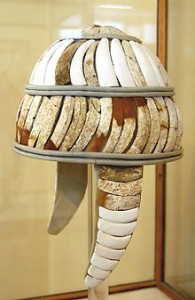
"Meriones gave Odysseus a bow, a quiver and a sword, and put a cleverly made leather helmet on his head. On the inside there was a strong lining on interwoven straps , onto which a felt cap had been sewn in. The outside was cleverly adorned all around with rows of white tusks from a shinny tooth boar, the tusks running in alternate directions in each row." [Homer's Iliad]. Question. 'Straps' in relation to ''Horn of Plenty'' ? and/or ''Hoar way''? and/or ''high on the hog''?
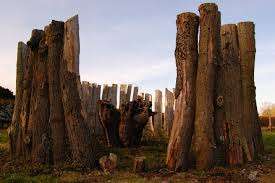
Sunset or sunrise? East or west?
"Poseidon had gone to visit the Ethiopians worlds away. Ethiopians off at the farthest limits of mankind, a people split in two; one part where the Sungod sets and part where the Sungod rises. There Poseidon went to receive an offering, bulls and rams by the hundred - far away at the feast, the Sea-Lord sat and took his pleasure." [From Book 1 'The Odyssey'. Translation by R. "Fagles].
What about sheep?
'Sheep Decans'?
N.B. Poseidon = the common factor between BOTH books. The foundation {twelve?} of something? Coincidence or a meaningful one? Try ''girdle'' to understand {determine/estimate?} the possible beginning {start point?} of something.

"We are warriors." To many Action man or Barbie movies? Should he have stayed at Fox News?
Side note?..."Bootes as the Herdsman {'Ox driver'} of the heavens is an ancient concept, and, in identifying this constellation with Odysseus, Homer acknowledges this pastoral association when he describes the Greek warrior stalking 'in front of the ranks as it were some great wholly ram ordering his ewes'. There are also geographical links between the shape of Bootes and the homelands of Odysseus in the islands of the Ionian Sea...The upper part of his helmet is identifiable as a shallow dome of faint stars in the head of Bootes...One of the outstanding features of Bootes is the staff that points towards the north celestial pole and at the time in which the Iliad is set pointed towards the declining pole star Thuban {Draconis}." ['Homer's Secret Iliad'].
''Genuine Roguefort cheese {ewes milk} is wrapped in foil that bears the tradional insignia of a red sheep.''
Question. ''Pastoral'' = 'rural' link? If so, what location would represent town/'city'?
"The principle of the city..." Enlarged elsewhere.
Side note: ''Meriones is A son of Molus, 1 conjointly with Idomeneus, led the Cretans in eighty ships against Troy, 2 where he was one of the bravest heroes, and usually acted together with his friend Idomeneus. He slew Phereclus, 4 Hippotion, and Morys, 5 Adamas, 6 Harpalion, 7 Acamas, 8 Laogonus, 9 and wounded Deiphobus.''

Trumps team: Someones pet monkey? On the Corporate or Senator Board of Electors?

Strong with the weak {Zelensky} and weak with the strong {Putin}? Question. Which of those two - Trump/Zelensky - would YOU welcome INTO the sanctuary of your home? INTO the very heart of that living SACRED space - to share a private moment with a glass of wine or a meal? To have a one on one, man to man conversation with. Which ONE would you feel CONFORTABLE and at ease with?
''The Mongolian gerbil (Meriones unguiculatus) is a domesticated rodent commonly used in research. In the wild, M. unguiculatus is found in desert regions of Mongolia and northeastern China....Meriones is a rodent genus that includes the gerbil most commonly kept as a pet, Meriones unguiculatus. The genus contains most animals referred to as jirds, but members of the genera Sekeetamys, Brachiones, and sometimes Pachyuromys are also known as jirds.''
Continued: ''St. Augustine called Taurus 'the great city of god', and that the Egyptians deemed it 'the interpreter of the divine voice' {Apis-Pacis}. [Page 90. 'The Secret Zodiac'].
Throat chakra? As a means...?
''The True of Speech''? Try Part 2.
Side note: Words like ''Apple teeth'' / ''Giant'' used in relation to 'Hogmagog Hills' as referred to by T. Lethbridge as he attempts to unravel the mystery of Gogmagog - within the book of same title.
Question. Can we learn anything from those 'keys' ?

Helmet of the immaterial world. Skull cap? Example of same,i.e.,what it represents. ''Of his main themes, [in relation to Ibn Al-Arabi's works] the one that predominates over the rest and to which they are subordinate is that of the Oneness of Being. The concept of the Oneness of Being is an all embracing one, in that all of Al-Arabis other concepts are but facets of it, facets of a single and unique reality, the seamless garment of Being, whose reality underlies all derivative being and its experience.'' [Introduction, The Bezels of Wisdom].

To be or not to be a Kennedy? Still trying?
Using the same ‘information’ one can attempt to find the whereabouts of other yet to be discovered information {locations / tombs?}. Especially those that this subject relates to more than any other. To the word.. ‘King’ship. Alexander ‘the great’...identified with the elephant scalp / Chariot / and especially ’Double / twin Horns’, [ ‘The lost Tomb of Alexander’. By A. Chugg ]. Egyptian equivalent...the ‘Double Uraeus’, [explained elsewhere]. He together with the Ptolemy's, [underground ‘Mausoleum’ ]. Will be found within the ‘boundaries’ of Alexander. Those ancient boundaries of Alexander. Indicative of the understanding / application of A/B only. Hence the link to ‘Alexander’ being identified; by some authors; with the word ‘pagan’. Hence the link to such quotes as...
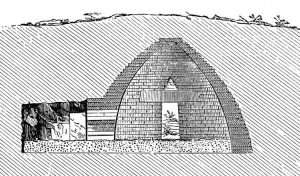
"A beehive tomb, also known as a tholos tomb (plural tholoi) (Greek: θολωτός τάφος, θολωτοί τάφοι, "domed tombs"), is a burial structure characterized by its false dome created by the superposition of successively smaller rings of mudbricks or, more often, stones. The resulting structure resembles a beehive, hence the traditional English name. ..In Greece, the vaulted tholoi are a monumental Late Bronze Age development. Their origin is a matter of considerable debate:... Both have chamber, doorway stomion and entrance passage dromos but tholoi are largely built while chamber tombs are rock-cut....he chambers were built as corbelled vaults, with layers of stone placed closer together as the vault tapers toward the top of the tomb."
"Quite independent of Judeo-Christian tradition, Muslim Kurds revere Bingol Mountain as the site of another heavenly, paradisiacal fountain of great renown. Here is to be found Ma'ul Hayat, the Fountain of Life, the waters of which can rejuvenate 'youth' and provide everlasting life. According to popular legend, Alexander the Great {the 'horned one' or 'two horned' - a reference to the ram horns on his helmet} travelled to the 'land of darkness,' beyond the setting sun, in search of the Fountain of Life, which was said to exist 'in the north, beneath the pole star'. His guide and vizier on the journey was a mysterious al-Khidr, a wise man; however when they came to a fork in the road, both men went in different directions. Only al-Khidr found the Fountain of Life and drinking from its waters..." [From the book 'Gobekli-tepe'. Mentioned elsewhere]. Try ''fountain'' and especially ''Khidr'' to understand what is being implied. Can you 'see' what the author of the above book cannot as yet 'see'? Enlarged elsewhere.
"One of the historical names for the city, Bingöl literally means thousand lakes in Turkish; however, there aren't any lakes of considerable size within the boundaries of the province. The name rather refers to many tarns found around the city."
Corbelled.

From the 'waters' of creation {Self becoming} - a lotus flower.
A working example {i.e., ''nuggets'' found within it}: ''Ancient Phoenicians, renowned as astonishing sailors, offered saffron to the sylphs and Zephyrs of Ashtoreth, goddess of fertility, and to the moon, silver orb of the unconscious that rules the tides of wind and sea, of women's bodies and humanity's soul. 'Witches' still use saffron to 'summon' these airy spirits, which will respond to the subtlest summoning's of the heart, the aspirations of the soul, and the viscerally wise demands of the body. If you pay attention, they will 'tell' you which path to take when a fork appears in the road. On the brink of summer, pale and shimmering, the sylphs flew between steel - grey towers....Zephyrs sped through the canyons of the 'CITY'...'' [Page 120 'Book of Shadows' / P. Curott].
Elephants, they say, never forget. From those things they are taught at a 'young' age. 'Returning' every year to the same old haunts, especially in relation to water. Matriarchs leading the way. That knowledge that becomes 'instinctive', intuitive, the more it is applied day by day. It keeps mind/body/soul alive. The gateway to heart and soul. Thinking [or Phrygian] cap time.
 Something to ponder on: "But the Demeter-Kore myth is far to feminine to have been merely the result of an anima-projection. Although the anima can, as we have said, experiences herself in Demeter Kore, she is yet of a wholly different nature. She is in the highest degree 'femme a homme'....whereas Demeter-Kore exists on the plane of mother/daughter experience, which is alien to man and shuts him out. In fact, the psychology of the Demeter cult bears all the features of a matriarch order of society, where the man is an indispensable, but on the whole disturbing factor {'shadow'?.}." [Page177 'Science of Mythology'].
Something to ponder on: "But the Demeter-Kore myth is far to feminine to have been merely the result of an anima-projection. Although the anima can, as we have said, experiences herself in Demeter Kore, she is yet of a wholly different nature. She is in the highest degree 'femme a homme'....whereas Demeter-Kore exists on the plane of mother/daughter experience, which is alien to man and shuts him out. In fact, the psychology of the Demeter cult bears all the features of a matriarch order of society, where the man is an indispensable, but on the whole disturbing factor {'shadow'?.}." [Page177 'Science of Mythology'].
Try Animus in the micro sense of the word. Question. What about in the Macro sense of the word?
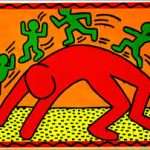 ''The great Wheel turned upon itself. The seven lessor wheels rushed into being. They revolve like their Mother, around, within and forward. All that existeth was. The wheels were diverse, and in unification, one. As evolved the great Wheel, the inner 'fire' burst forth. It touched into life wheel the first. It circulated....." [Stanza Three. From the book 'A Treatise on Cosmic Fire' / A. Bailey].
''The great Wheel turned upon itself. The seven lessor wheels rushed into being. They revolve like their Mother, around, within and forward. All that existeth was. The wheels were diverse, and in unification, one. As evolved the great Wheel, the inner 'fire' burst forth. It touched into life wheel the first. It circulated....." [Stanza Three. From the book 'A Treatise on Cosmic Fire' / A. Bailey].

Bending 'backwards'?
Something extra: "The creation myth says that a woman named Sol, or 'Sun', drove the chariot of the sun through the sky. Her brother Mani drove the chariot of the moon. They did this because their father {a 'giant'} named them after the sun and moon because of their 'beauty'.
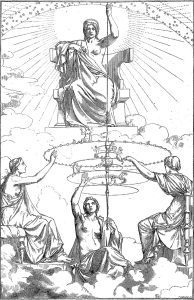
In ancient Greek religion, Ananke (/əˈnæŋkiː/; Ancient Greek: Ἀνάγκη), from the common noun ἀνάγκη ("force, constraint, necessity"), is the Orphic personification of inevitability, compulsion, and necessity. She is customarily depicted as holding a spindle. One of the Greek primordial deities, the births of Ananke and her brother and consort, Chronos (the personification of time, not to be confused with the Titan Cronus), were thought to mark the division between the eon of Chaos and the beginning of the cosmos.
This angered the gods, who put them to driving the chariots of the 'sparks' of light to punish the giant for his presumption. Their fathers name, Mundilfare, is sometimes translated as 'spinner of the World' - which may suggest an earlier, pre-Odinic origin for the sun and moon myth....A number of themes recur throughout the myths of the sun goddesses....it could be a connection to a memorial stone found in Gotland, which shows a giant whirling disc, with two smaller discs beneath it. This she says, represents Mundilfare and his world mill.
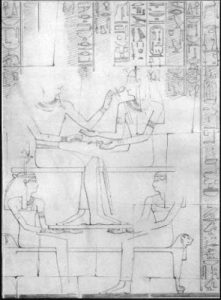
Ankh to nose. Hand to elbow.
The world tree is underneath the discs, and below that a serpent and then a boat....One recurrent theme/pattern is that of the transformation from an old 'hag' into a 'young' woman... " [Page 16/145 'The Sun Goddess: Myth, Legend and History' / Sheena McGrath]. ''Weaver''?
''Gotland today is part of Sweden, but during the Viking Age, roughly 800 to 1150, it was independently ruled. The accumulation of riches on the island from that time is exceptional. More than 700 silver hoards have been found there, and they include around 180,000 coins. By comparison, only 80,000 coins have been found in hoards on all of mainland Sweden, which is more than 100 times as large and had 10 times the population at the time. Just how an island that seemed largely given over to farming and had little in the way of natural resources, aside from sheep and limestone, built up such wealth has been puzzling. Excavations led by archaeologist Dan Carlsson, who runs an annual field school on the island through his cultural heritage management company, Arendus, are beginning to provide some answers.''
And/or: {''Beauty''} = Shulamite / Nefertiti as a means....? From the patriarchal sense of the word?

Aries/Pisces? Arms forward?
"Demeter and Kore, mother and daughter, extend the feminine consciousness both upwards and downwards. They add an ''older and younger'' ''stronger and weaker'' dimension to it and widen out{N/S?} the narrowly limited conscious mind bound in space and time {E/W?}, giving it intimations of a greater and more comprehensive personality which has a share in the eternal course of things. We can hardly suppose that myth and mystery were invented for any conscious purpose; it seems much more likely that they were the involuntary revelation of a psychic, but unconscious, pre-condition." [Page 162 'Science of Mythology'].

Question. Mayan equivalent?
And/or: "This sculpture known as the Swimming Reindeer, was created at least 13,000 years ago...Its carved from the tip of a mammoth tusk and shows a male and female reindeer with their heads raised and legs extended. The depiction is remarkable in its naturalism...The fragility of the connection between the two halves shows that it was not a practical object but rather a masterpiece of figurative art. Its significance to the people who created it remains a mystery to archaeologists. For me, it is one of the many things which tell me the Reindeer Goddess was important to humankind from back into very ancient times. " ['Elen of the Ways: Shaman Pathways' / E. Sentier].
Question. In a 'river' or 'sea'??

